
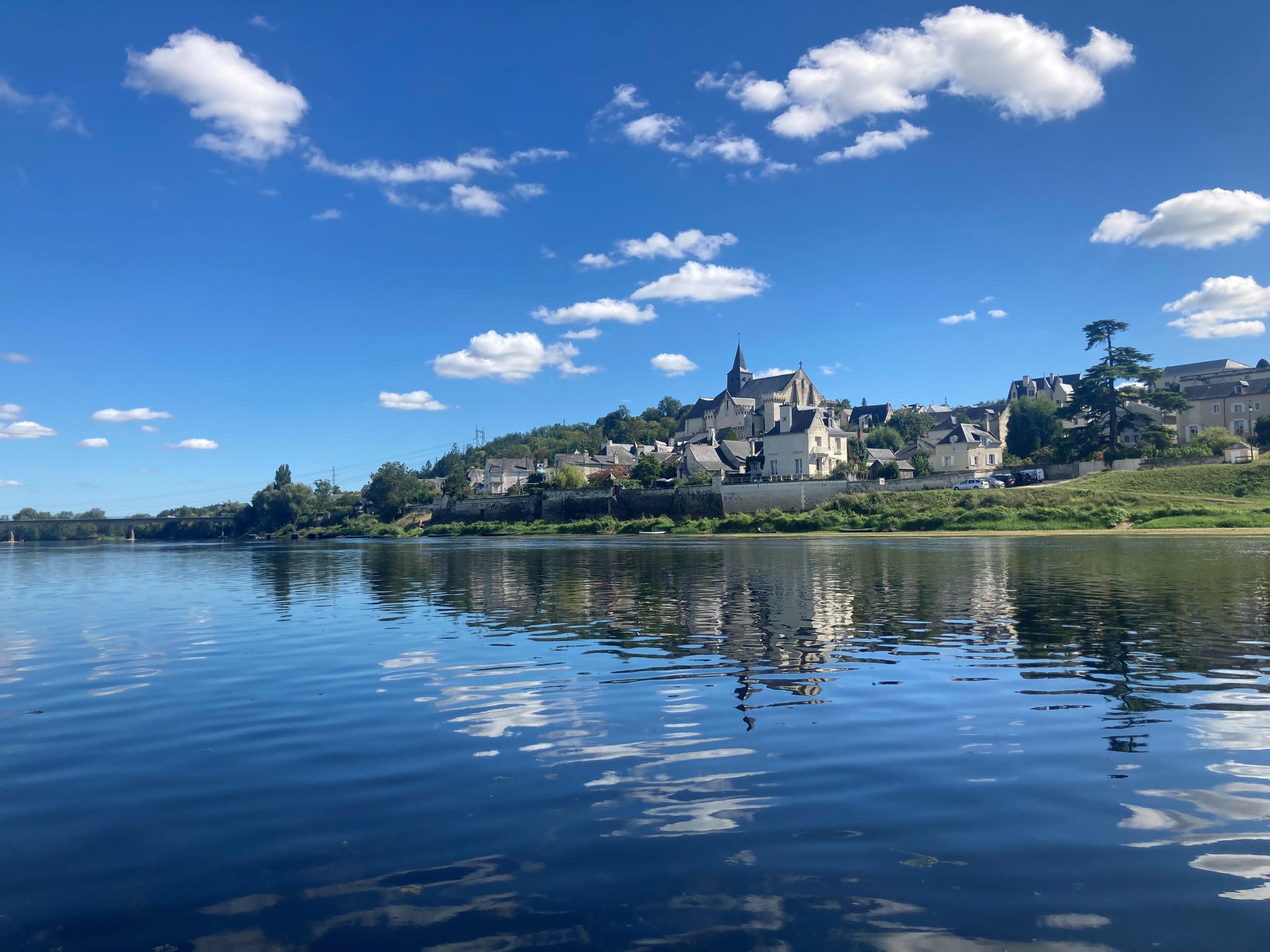



2.4 70 35 75 Million bottles sold Appellations represented Years as a Loire specialist Award-winning growers
Established in 1990, CSW is a dynamic French Wine agency comprising many of the finest family-owned wine producers of the Loire Valley. Our unrivaled portfolio includes around 75 award winning growers from the Auvergne to the Atlantic.
We supply wine to all sectors of the UK trade and offer an exceptional level of service for both our customers and the producers we represent. Our small team means that we can provide a personalised and tailored approach to your business. We visit growers and customers on a regular basis throughout the year and are able to react quickly to meet your needs. Whilst we work predominantly with customers in the UK, we also sell to various other customers around the world including the Baltic States, Scandinavia, the USA, Japan and Australia amongst other countries. For the producer, we offer unparalleled exposure to the most exciting customers in the trade.
We work directly with most of the major supermarkets, specialist chains and luxury department stores, a whole host of mail order and online businesses plus various national wholesalers. We also supply numerous independent wine retailers, who are able to order wines in sufficient volume to merit ex-cellar shipments.
CSW sets the benchmark in the Loire Valley where our knowledge, experience and lean infrastructure enables us to provide quality wines at highly competitive prices.
We hope that you enjoy exploring our wonderful portfolio.
Chris bought Charles Sydney Wines in 2016 and created Charles Sydney Wines Limited. Chris has an active role as Managing Director of this business, which is based in Hertfordshire with an office in Angers, France. Chris has an extensive background in the industry since joining Majestic Wine as a trainee store Manager in July 1994, progressing to Senior Buyer at head office, a position which he held for over 20 years. He bought wines from most regions of the world but being a true Francophile, he chose to focus on the classic regions of France; in particular the Loire, due to the diversity and the quality of wines produced in the region.


Alex joined CSW as Sales Director in 2018, his role has developed to also become Business partner. He was initially attracted by the quality of the producers in the portfolio and the close relationships Chris has with the growers he represented. Alex studied marketing and business management before taking a wine business MBA at the Kedge Business School in Bordeaux. Following his studies, he worked for 5 years as an export manager. He has always been passionate about food and wine for as long as he can remember!

Charlotte started with CSW in October 2024 as our office administrator based in the Loire and has since taken on the role of office Manager. Responsible for processing orders, liaising with logistics companies, as well as managing credit control and accounts. Charlotte also deals with all sample requests for customers and organises CSW’s visits to our producers. Charlotte has a wealth of experience as an export assistant an international partner manager
Lisa joined the CSW team in 2022 with a background in marketing, administration and HR. She manages various projects helping to keep the company and producers up-to-date and compliant with ever-evolving regulations. Lisa is helping to modernise internal systems, deals with our marketing and organises events including our annual portfolio tasting.

Sparkling Page 9
Muscadet Page 17
Anjou & the Coteaux duLayon Page 35
The Touraine Page 47
Vouvray &Montlouis Page 67
The Reds Page 77
Pouilly Fumé Page 99
Sancerre Page 115
The Centre Page 133
Testimonials Page 150
T & C’s and ordering Page 152
Many of our growers are certified organic, biodynamic or under conversion to organic viticulture and the rest use sustainable practices in the vineyards with the majority having HVE (Haute Valeur Environnementale') or Lutte Raisonnée accreditation. We have shown this on our pages using the below key.


HVE, Terra Vitis, Lutte Raisonnée
Organic practices


Bio-dynamic practices In conversion to organic
“It’s great having the expertise and on-the-ground, real-time feedback on happenings in the Loire, as well as access to some of the region’s greatest growers.”
Catherine Jaën MW, Buyer, Lay & Wheeler, Independent Wine Merchant
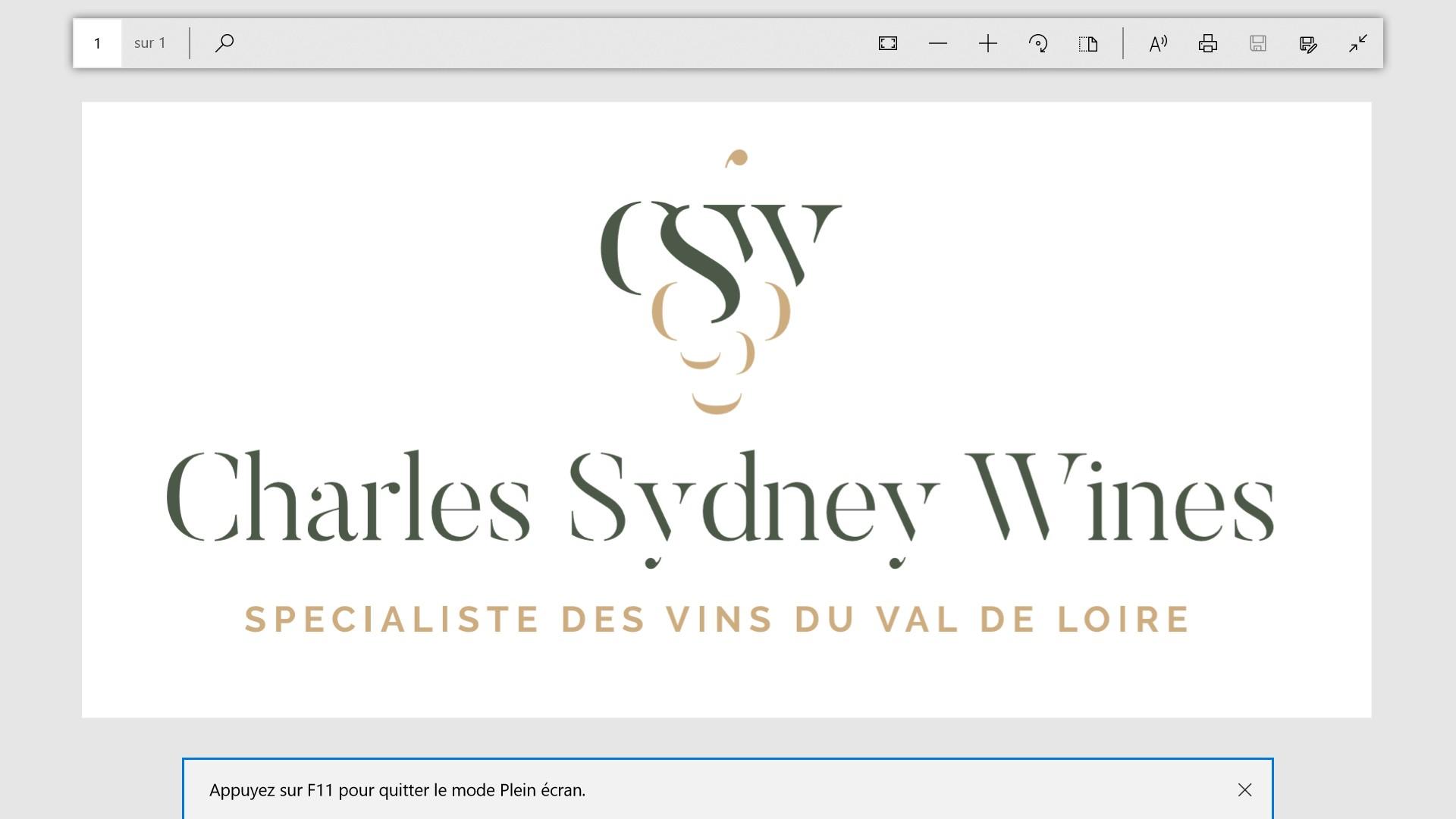
Wehavealwaysvaluedthe professionalismandeasein whichCharlesSydneyWines dobusiness.Theybringevery nookandcrannyoftheLoire Valleytolight;anenormous achievementthatrequires feetonthegroundandfull commitmenttotheregion. ThatChris,Alexand Dominiquehaveenduring, closerelationshipswithsuppliers,andshareinthetrials andtribulationsoftheLoire Valleywinegrower,isborne outinthequalityanddiversityoftheirportfolio–atevery pricepoint.
Mark Dearing, Buyer, Justerini & Brooks
“We wanted to work with CSW because we wanted Grape Minds to have a real specialism in the Loire Valley. Through close work with Chris and his team, we have been able to sculpt our range to cover fantastic Crémant, white, red and rosé wines at all key price points from entry level to fine wine. Moreover, such is the strength of these wines and our relationship, the wines now form a key part of our range and several of our hero products are sourced through CSW. They have also been integral in allowing Grape Minds to have commercially exclusive wines, perfect for the on trade.”
Graeme Woodward, Director Grape Minds, Independent Wine Merchant
“WeworkwithCSWfromthelate90’s! BeingLoirespecialists,withanamazing bookofgrowers,focusedontheUK, CSWiswithnodoubtthebestpartner forourwinesinthismajormarketfor Muscadet.
Madeofbothveryprofessionalskills, deepmutualcommitment,andpassion forgreatwines,ourpartnershiphas beenevencloserwiththearrivalof ChrisandAlexinthepastyears. Thanksforsupportingourfamily wines!”
Famille Lieubeau, Vignerons, Muscadet
“Année horrible…mais tout va bien qui finit
The 2024 growing season in the Loire Valley was marked by complex weather condi ons and significant vi cultural challenges. From early spring, growers faced increased pressure from mildew, exacerbated by regular periods of rainfall and rela vely cool temperatures. Unlike recent years, where drought condi ons were prevalent, 2024 saw rainfall levels twice the annual average in many regions. This made vineyard management par cularly difficult with an increased numbers of treatments across the board required to combat disease at a me when even accessing the vineyards with a tractor was difficult. These clima c condi ons have led to late harvests and lower-than-expected yields across many appella ons.
Despite these challenges, the quality of the wines will largely depend on the vigilance of the growers and their ability to adapt their prac ces. Those who closely monitored the vines, intervened at the right me, and managed to limit the effects of mildew and coulure have achieved healthy grapes and promising juices. On the other hand, vineyards that were unable to react quickly are repor ng very low yields and wines that may lack aroma c complexity. Fortunately, none of our growers fall into this category! Overall, the 2024 vintage is expected to produce wines with freshness and good acidity, although with lower alcohol levels compared to previous vintages, par cularly in the regions most affected by the climate. A good result considering the new, draconian duty legisla on!
Picking started in mid to late September in most appella ons and was mainly finished by the end of September or early October, although it con nued into mid to late October for the reds of Chinon and Saumur Champigny and some dry Chenin and late picked cuvées.
The Muscadet region faced a challenging vintage, characterised by lower yields (between 10/15Hl/ha for organic & 20/30hl/ha for sustainable) due to filage (or “early bunch stem necrosis”) and extreme mildew pressure. Harvest started in mid-September, but the vintage was considered late with difficult ripening condi ons. Although the wines show nice freshness, alcohol levels are generally lower than average, with higher-than-usual acidity, largely due to the cool and wet climate that dominated the growing season.
In Anjou, harvest began in late September and con nued un l early November. While yields are near normal in some parcels, the wet condi ons favoured the development of botry s, requiring rigorous hand sor ng in the vineyards to discard affected bunches. Acidity levels are generally good, with alcohol levels ranging from 10.5% to 11.5%. However, some plots experienced reduced yields due to heavy rainfall and delayed ripening periods.
The rain during the harvest has had an impact on the yields in the predominantly red appella ons of Chinon, Bourgueil and Saumur Champigny and yields were around 35 to 40 hl/ha, with whites being slightly less. Malic acidity is quite high and poten al alcohol around 12% but acidity was adjusted through malolac c fermenta ons and balance of the wines with the fruit ripeness is excellent. Not an outstanding vintage, but very decent none the less.
The 2024 vintage for Vouvray has produced average yields of around 30 hl/ha. Again, the clima c condi ons have been challenging, with significant pressure from coulure affec ng yields. The wines have an alcohol content of approximately 12%, with a total acidity measured at 6.5 g/l. Despite these challenges, the wines show good poten al, and careful a en on to vinifica on and aging will be crucial in revealing the true poten al and quality of the harvested grapes.
Fortunes appear to be fairly varied across Touraine, with those vineyards closer to the Cher generally delivering be er yields and quality than those bordering the Loire. That said, there are winners and losers across the appella on and missed treatments at crucial mes have led to severely reduced yields in some cases. Alcohol levels are around 12% to 12.5% and total acidi es between 5 and 5.5 g/l, providing wines with decent concentra on and excellent freshness. The most successful vineyards have produced yields of around 55 hl/ha but others that suffered from the clima c condi ons will be lower, so average yields of around 40 hl/ha across the appella on.
The rainy condi ons in September significantly affected the appella ons of Reuilly, Quincy, Menetou-Salon and Coteaux du GIennois. Yields are among the lowest in the region (around 15 hl/ha to 35hl/ha with the worst being Menetou), due to frost, coulure, and mildew. Menetou-Salon and the Giennois are possibly the worst affected of the appella ons with organic growers being worst hit despite twice the normal number of treatments.
The 2024 vintage in Pouilly-Fumé was one of the most difficult in recent years. The region was severely impacted by mildew, leading to significant losses. Yields are historically low (although slightly be er than 2021), ranging between 25 and 30 hl/ha. However, the harvested grapes were of good sanitary quality, with alcohol levels between 12.5% and 13%, and well-balanced acidity. The vintage has delivered wines with interes ng aromas, despite a certain astringency related to high malic acidity but astute winemaking and adjustments in the cellar have produced quality wines.
Sancerre was not spared from the challenging weather, with yields varying between 25 and 50 hl/ha (depending on whether organic or conven onal). Mildew pressure and frequent rain during flowering impacted grape quality. However, the white juices show alcohol levels between 12% and 13%, with balanced acidity. The reds also display good freshness, though Pinot Noir yields were lower than normal.
This vintage is characterised by wines with moderate alcohol levels and rela vely high acidity, giving them a more “Ligérien” profile with enhanced vibrancy. The least affected regions, notably certain parcels in Pouilly, Sancerre, and Muscadet, deliver wines with interes ng aromas and good balance. However, careful selec on and blending have been crucial in ensuring op mal quality, par cularly in appella ons where phenolic ripeness was lacking.
The 2024 vintage in the Loire Valley will be remembered as one of the most difficult in recent decades. The season was dominated by excessive rainfall and high mildew pressure, which affected both yields and grape quality. However, this vintage once again highlights the importance of me culous work in the vineyard. Growers who adapted their prac ces and intervened swi ly were able to limit the damage, and their wines offer pleasant surprises in terms of freshness and balance. 2024 is a “good” to “very good” vintage considering all the challenges as we are confident the wines on taste today will demonstrate. Santé!
















Founded in 1811 by Jean-Baptiste Ackerman, a Belgian entrepreneur with a pioneering spirit, Maison Ackerman is one of the Loire Valley’s oldest and most iconic producers of fine sparkling wine.
A true innovator, he was the first to apply the traditional method in Saumur, giving birth to what was then called “vin mousseux façon Champagne” a revolutionary style that laid the foundation for Crémant de Loire.
Ackerman’s story is intimately tied to the United Kingdom. From the 1830s, JeanBaptiste was exporting sparkling wines across the Channel, but it was under his son, LouisFerdinand Ackerman, that the house became a true export force. In 1882, he partnered with London importer W.& A. Gilbey to launch the now-famous Royal brand crafted specifically for the British market. With its Brut Royal and Dry Royal, Ackerman became a fixture of grand hotels, luxury trains, and ocean liners. By 1900, the house was exporting over 1 million bottles per year, with 75–85% bound for the UK.
A London branch was opened as early as 1873, making Ackerman one of the first French wine houses with a permanent UK presence. In 1911, it co-hosted the Wine and Spirit Trade Benevolent Society’s centenary banquet proof of its long-standing prestige in the British trade. Today, Ackerman is France’s leading producer of Loire sparkling wines, and one of the largest exporters of Loire AOPs globally. With more than 100 medals awarded annually, Ackerman continues to innovate while preserving its two-century old savoir-faire. But beyond its role as a historic house, Ackerman is also a major winegrower, with over 430 hectares of vineyards across six domaines and châteaux.

This includes the Domaine des Dames de la Vallée in Saumur, which is dedicated entirely to sparkling production. This direct access to fruit ensures full control from grape to glass, allowing for precision, consistency and true terroir expression. All vineyards are certified HVE3 and/or organic, underlining a deep commitment to environmental stewardship.
Ackerman’s vast troglodyte cellars, 45 metres below the Saumur hillside, maintain a constant 12°C ideal for slow ageing and refined mousse.
Like many Loire houses, Ackerman’s UK presence faded with the disruptions of the First World War and changing trade patterns.
But today, with a renewed focus on export and a range of high-quality, expressive wines, Ackerman is determined to reclaim a position in the UK that reflects its scale, heritage and reputation, a mission it proudly shares with Charles Sydney Wines. Bulle Royale AOP Saumur Brut was awarded a Gold with 95 points Royal AOP Crémant de Loire Brut 2022 Bronze 89 points at the Decanter WWA 2025.
Ackerman Bulle Royale
Saumur AOP Blanc Brut
ABV 11.5%
Ackerman Bulle Royale
Saumur AOP Rosé Brut
ABV 12%
Ackerman Bulle Royale
Crémant de Loire AOP Blanc Brut
ABV 11.5 %
Ackerman Bulle Royale
Crémant de Loire AOP Rosé Brut
ABV 12%
Ackerman Emilie Ackerman
Crémant de Loire
AOP Blanc Brut ABV 11.5%
Ackerman Emilie Ackerman
Crémant de Loire AOP Rosé Brut
ABV 12 %
Ackerman Royal Crémant de Loire
AOP Royal Brut
ABV 12%

NV
NV
NV
NV
2022/2023
NV
2022



Château de L’Aulée was built just outside Azay-le-Rideau by the Cordier family of Bordeaux. After a long history it was taken over in 2004 by Marielle Henrion, a Champagne-trained oenologist who had previously worked for Pommery, Bricourt and for some years with Bollinger. This professional experience is exactly what the Château needed and Marielle’s first concern was to get the vines under control – replacing some 30% of the vines in their first 4 years. Having re-established the vineyards her next step was to create a purpose-built winery to replace the ancient chai.
Today the estate has 30 hectares in production. Including 20 of chenin, 3 chardonnay, 1 ha Grolleau and in Chinon 6 to provide the Cabernet Franc grapes for their crémant rosé. The vines are run according to the rules of La Lutte Raisonnée, with each plot being grassed through and run differently according to site and age of the vines.

Concentrating on making sparkling wines always the mainstay of the Château’s production – Marielle picks the Crémants by hand in small caisses while the Touraines are picked with the latest generation Pellenc machine with its revolutionary built-in tri.
After selection on a table de tri and a gentle pressing in one of the estate’s two pneumatic presses, fermentations are at controlled temperatures in stainless steel vats - or in a choice of barriques and oak vats. The wines are excellent – now with 2 years sur lattes.
The Crémant Brut is made by picking at full ripeness - ie around 12.5° natural at harvest - and finishing the alcoholic fermentation in bottle. Aged for 24 months and made without chaptalization or dosage, this shows a toastiness that is quite remarkable for the Loire.
The richer 'L' includes 30% cabernet franc and a dosage of just 6gm, the liqueur being made from older wines that have been matured in oak. As for the fantastic oak matured cuvée 1856, which celebrates the 150 years of the Domaine, this was so popular that we're continually waiting for the next batch to be released!

produces some 200,000.00 bottles per year, among which 85% are sparkling.
Touraine Brut Methode Traditonnelle
Parenthèse Brut
60% Chenin Blanc, 40%
Crémant de Loire
Crémant L – 70% Chenin ; 30% Cab Fr
NV
ABV 12.5% NV
Domaine/Wine maker Wine
Famille Lieubeau
Jérôme Choblet
Domaine Des Herbauges
Les Freres Couillaud
Domaine de la Morinière
Christophe Réthoré
Domaine Réthoré Davy
Christophe Réthoré
Domaine Réthoré Davy
Alexandre Cady
Méthode Traditionnelle 1816 Brut - Blanc NV 18
Luminescence Mousseux, Melon, Chardonnay, Grolleau Gris - Blanc NV 30
Amélie et Vincent Mille et Une Etoile, Méthode
Traditionnelle Extra Brut, 100% ChardonnayBlanc NV 32
Imagine Brut Méthode Traditionelle - Blanc Chardonay NV 36
Noir d’Imagine Extra Brut Méthode TraditionelleRed, Pinot Noire NV 36
Domaine Cady Crémant de Loire AOPBlanc NV 40
René Papin
Château Pierre–Bise Crémant de Loire AOPBlanc 2023 42
Philippe Socheleau
Domaine des deux Vallées
Jean-François Merieau
Domaine Merieau
Ludivine Marteau
Domain Jacy Marteau
Patrick Vauvy
Domaine Bellevue
Charles Lesaffre
Domaine des Aubuisiéres
Charles Lesaffre
Domaine des Aubuisiéres
Domaine des 2 Vallées Crémant de Loire Brut AOP- Rosé & Demi-sec NV 44
J’Ose les Fine Bulles Touraine Méthode Traditionelle AOP - Blanc 2019 50
Domaine Jacky Marteau Crémant de Loire AOPBlanc NV 52
Domaine Bellevue Crémant de Loire AOPBlanc NV 54
Aubuisières Vouvray Brut AOP - Blanc NV 67
Aubuisières Vouvray Brut Zéro AOP - Blanc NV 67
Bernard Fouquet Vouvray Brut Vouvray Brut AOP - Blanc NV 67
Cyril Robert Vignoble
Alain Robert
Cyril Robert
Vignoble Alain Robert
Troglodyte Brut Vouvray Brut AOP - Blanc NV 70
Le Funambule, Blanc de Noirs Crémant de Loire AOP - Blanc NV 70
Domaine/Wine maker Wine
Cyril Robert Vignoble
Alain Robert
Cyril Robert Vignoble
Alain Robert
Arnaud Hérivault
Domaine D’orfeuilles
Arnaud Hérivault
Domaine D’orfeuilles
Arnaud Hérivault
Domaine D’orfeuilles
Jean-Philippe Blot
Domaine de la Taille aux Loups
Jean-Philippe Blot
Domaine de la Taille aux Loups
Jean-Philippe Blot
Domaine de la Taille aux Loups
Extra Brut Vouvray Brut AOPBlanc NV 70
Alchimiste Pétillant Naturel Vouvray Brut Nature AOPBlanc NV 70
Hérivault Vouvray Brut AOPBlanc NV 72
Domaine d’Orfeuilles Vouvray Brut AOP (5-6gms dosage)Blanc NV 72
Feuilles d'Or Vouvray Brut AOP - Blanc 2014 72
Brut Tradition Montlouis Brut AOP - Blanc NV 74
Triple Zéro Montlouis Pétillant Naturel AOP - Blanc NV 74
Triple Zéro Rosé Montlouis Pétillant Naturel AOP - Rosé NV 74
Jean-Hubert LebretonDomaine des Rochelles Crémant de Loire AOP - Blanc NV 74
Anthony & Cédric
Bonneau Domaine de la Bonneliére
Paul Pisani-Ferry
Château de Targé
Paul Pisani-Ferry
Château de Targé
Thibaud & Michel
Crémant de Loire Blanc & Rosé AOP - Blanc NV 82
Château de Targé Saumur Brut Rosé AOP 2022 & 2023 84
Château de Targé Saumur Extra Brut AOP - Blanc 2019 & 2020 84
Chevré Clos de l'Écotard Saumur Brut AOP - Blanc 2022 88
Thibaud & Michel
Chevré Clos de l'Écotard
Jérôme Billard
Domaine de la Noblaie
Les Quarts St Vincent Saumur Brut AOP - Blanc 2018 88
Monange Brut Nature Rosé Vin de France - Blanc NV 90


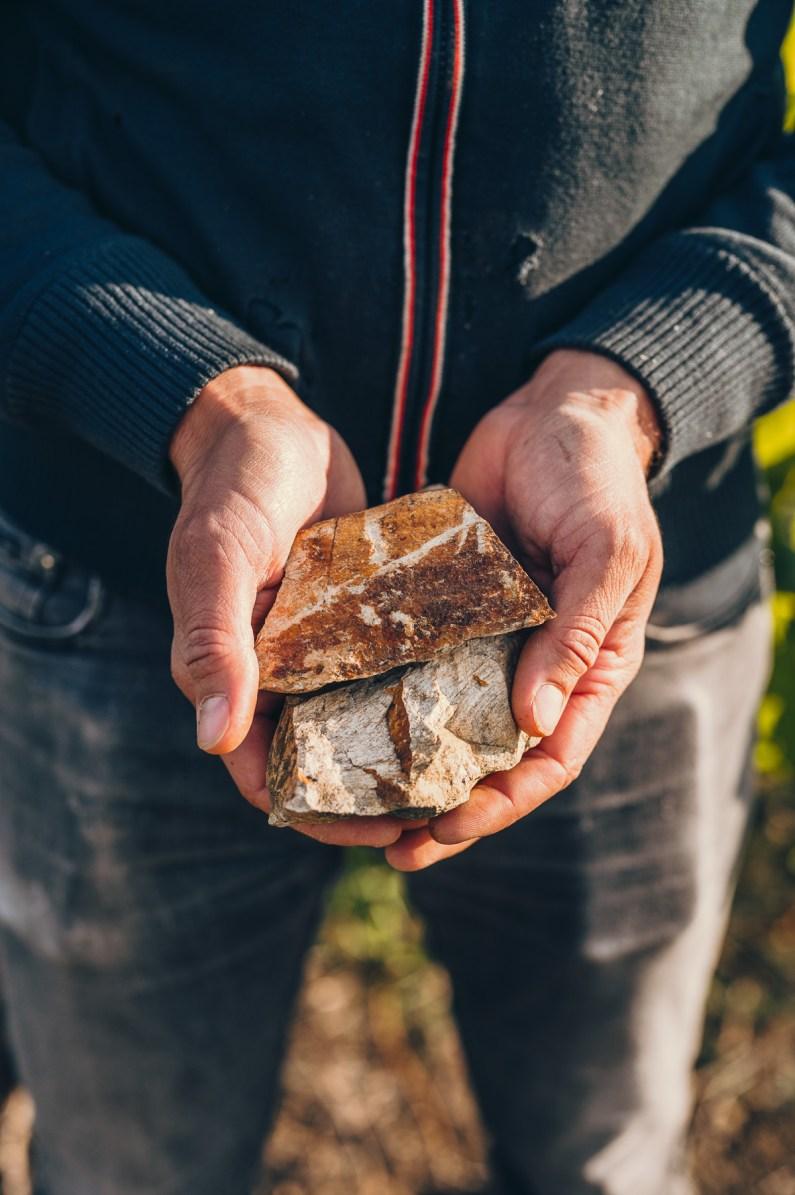
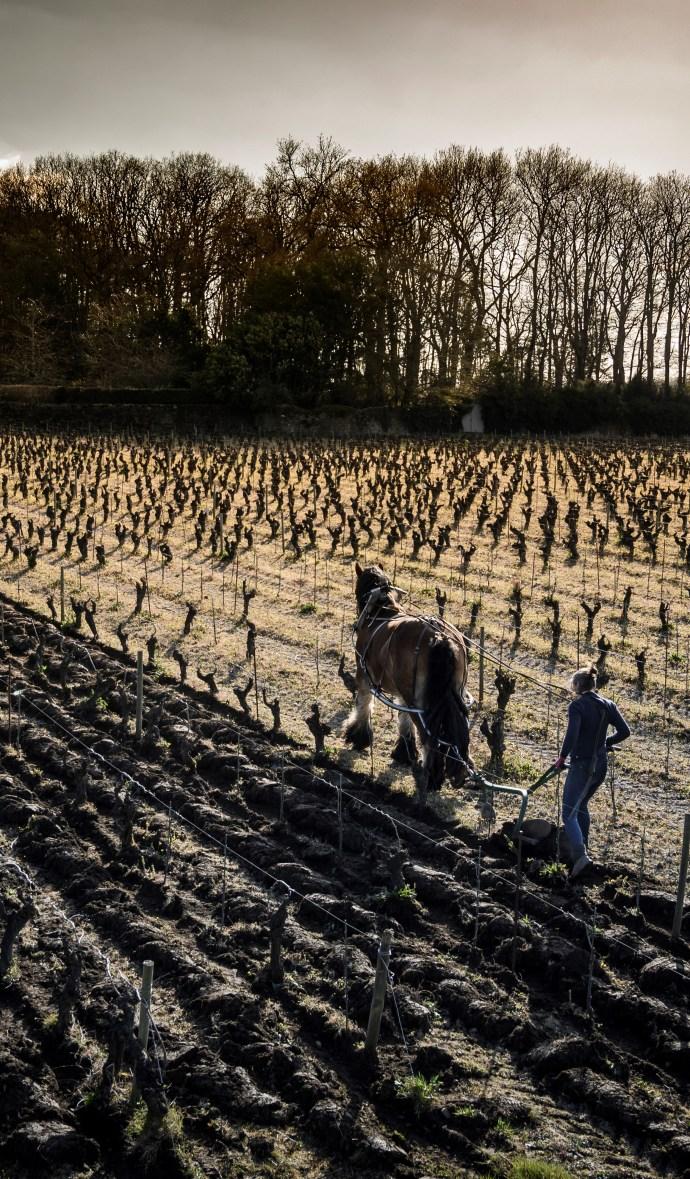






The Lieubeau family history started back in 1816 when Joseph Grégoire was left abandoned under the porch of the Hotel Dieu in Nantes. Those who took him in gave him the name “Lieu-Beau”, meaning “beautiful place” in recognition of where he was found. Today, his name lives on as Pierre and Chantal Lieubeau have been joined at the Domaine by their children Marie, François and Vincent, a qualified oenologist who looks set to become one of the great winemakers from the region. Utter respect for nature, living environment (horses, Ouessant sheep, bee hives in the vineyards) and biodiversity enables them to craft premium terroir wines within the Muscadet region.
Situated at the confluence of the Sèvre Nantaise and the Maine, the estate comprises 65 hectares, very well maintained and split between the schist slopes facing St Fiacre and the granite and gneiss of Chateau-Thébaud. Planted mainly with Melon Blanc, the vineyard has also increased plantings of other varietals such as Chardonnay, Sauvignon and Pinot Noir. The vineyard is farmed organically, and certified.The Muscadet Crus Chateau-Thebaud, Clisson and Goulaine are flagships from both the family and the region. They come from minimum 50 years old single plots which are organically farmed with all soils being ploughed by horse.
For classics, the richness, intensity, and complexity of this estate’s wines makes them intensely satisfying – qualities maintained by a program of investment virtually unique in the region – both in the vineyard (including a battery of frost protection tools) and in the winery. In the vineyard, vines are grassed through to better regulate humidity. Trellising, crop thinning and de-leafing to ensure exposure to the sun and wind, keeping the grapes healthier longer, and at the same time greatly improving the ripeness of the harvest. Harvest and sorting are manual, while grapes are pressed as whole bunches in a brand new grape reception stage and fermented using wild yeast.
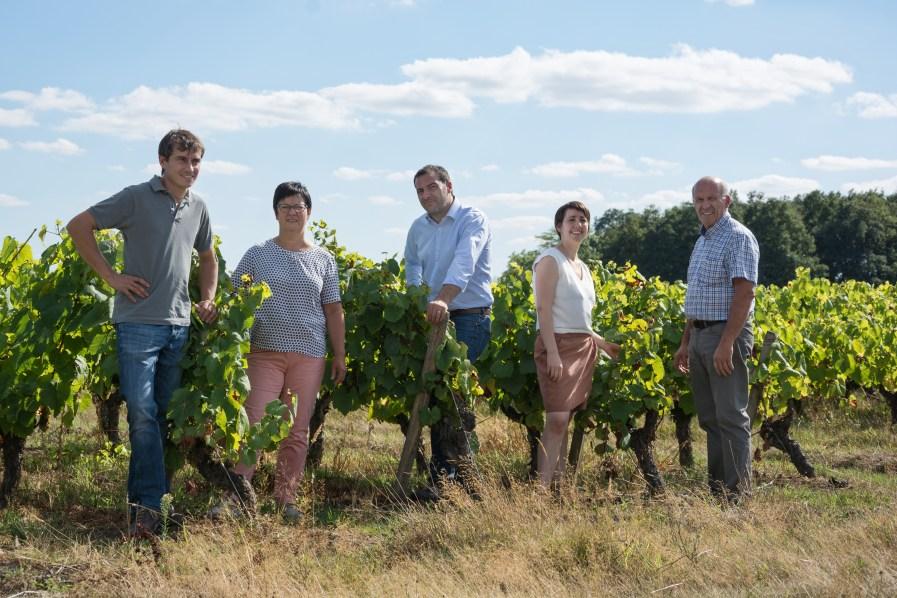

Traditional “sur lie” ageing in subterranean vats are extended to 24 or even 36 months with regular “batonnage” to add depth, texture and complexity for the Crus. After picking and sorting, the harvest is pressed in a pneumatic press (inerted with dry ice for grapes macerating with their skins and protected at all stages against oxygen), before going through a cold settling. Juices are fractioned between “cuvée” and “presse” and go through different winemaking processes, which is something unique in the region. Parcélaire & cru wines are made using only indigenous yiests.


Méthode Traditionnelle 1816 Brut NV
Loire Classics
Folle Blanches, Gros Plant AOP 2023
Loire Classics
IGP Blanc Chardonnay / Sauv Bl / Rosé 2023 & 2024
Loire Classics
IGP Pinot Noir 2023
Voyage Extraordinaire
Muscadet AOP 2023
Muscadet Sevre et Maine Sur Lie Génération 2023
Muscadet Sevre et Maine Sur Lie Confluent 2023
Muscadet Sevre et Maine Sur Lie Clos de la Placelière 2023
Muscadet Sevre et Maine Sur Lie Bel Abord 2023
Muscadet Sevre et Maine Crus Communaux AOP
Cru Chateau-Thébaud 2021
Muscadet Sevre et Maine Crus Communaux AOP
Cru Clisson 2022
Muscadet Sevre et Maine Crus Communaux AOP
Cru Goulaine 2022




The Girard family has been farming the Domaine since the 1940’s, it has passed down through four generations of winemakers and farmers. The estate has grown over the years and now consists of 40 hectares and is ideally located between 2 rivers (Sèvre & Maine), in the heart of the Muscadet area.
The vineyard is planted on schist and gneiss subsoils which gives elegant fruity aromas and very interesting mineral hints to the wine. The wine is left on its lees to increase its richness.
Working hard to update their methods of growing and winemaking over the years, the Domaine invested in robust frost protection methods and the estate is able to protect at least 35 out of 40 hectares, which guarantees them a satisfying harvest.
Guillaume joined forces with his father in 2019, after studying winemaking and marketing. He focused on the development of their export sales and the ecological transition of the field

He focused on the development of their export sales and the ecological transition of the field.
They are HVE3 certified since 2020 for the main domaine. On top of this, they own 5 hectares of Organically farmed vines and are hoping to develop this over time.
Impressively they sell their wines on 4 of the 5 continents. Grape varieties grown on the estate are mainly Melon B and other classic varietals under the Vin de France classification.

Domaine Girard – Tradition

Following direct pressing and fermentations in underground thermo-regulated vats, the wines are left on the lees with one or two bâtonnages (stirring the settled lees back into the wine) to noticeably increase its richness and give the wine a fuller body.
Muscadet Sèvre et Maine sur Lie
Domaine Girard – Le Fleuron
Muscadet Sèvre et Maine sur Lie
Domaine Girard – Monnières St Fiacre
Muscadet Sèvre et Maine Cru Communal
Domaine Du Grand Chene (Organic)
Muscadet Sèvre et Maine sur Lie
2023 & 2024
2023 & 2024
2016
2023 & 2024
Melon B, Vin de France (Organic) 2023 & 2024






Run by Jean-Jacques Bonnet and Vincent Pineau, this environment-friendly estate is based around the ruins of a château dating back to the middle ages and has 35 hectares of vines –including a small parcelle of Pinot Gris used to make a rich, offdry white. Over the last few years, the winemakers have taken a step by step move from lutte raisonnée to organic and now biodynamic viticulture. Their professionalism and the rigour they apply to winemaking is exceptional and we rate them among the finest producers of the region. Having got the vines nicely under control, they are producing rich, balanced and satisfyingly ripe wines.
The cream is in their single-vineyard wines: Clos du Moulin Chartrie: 7ha on mica-schist, giving an intense mineral richness.
Les Gautronnières : 8ha on amphibolite ‘roche verte’ making a leaner, complex and slower-to -open cuvée.
Les Laures - our favourite - is from 3 ha planted on granite in nearby Vallet, giving a rounder, creamier and more approachable style.
True to their ‘green’ convictions the vineyards are grassed through and attention is paid to keeping the bunches as aerated as possible to ensure thicker, healthier skins – and more resistant grapes, giving ever greater ripeness, traits encouraged with crop thinning and regular increases in leaf height throughout the growing season.
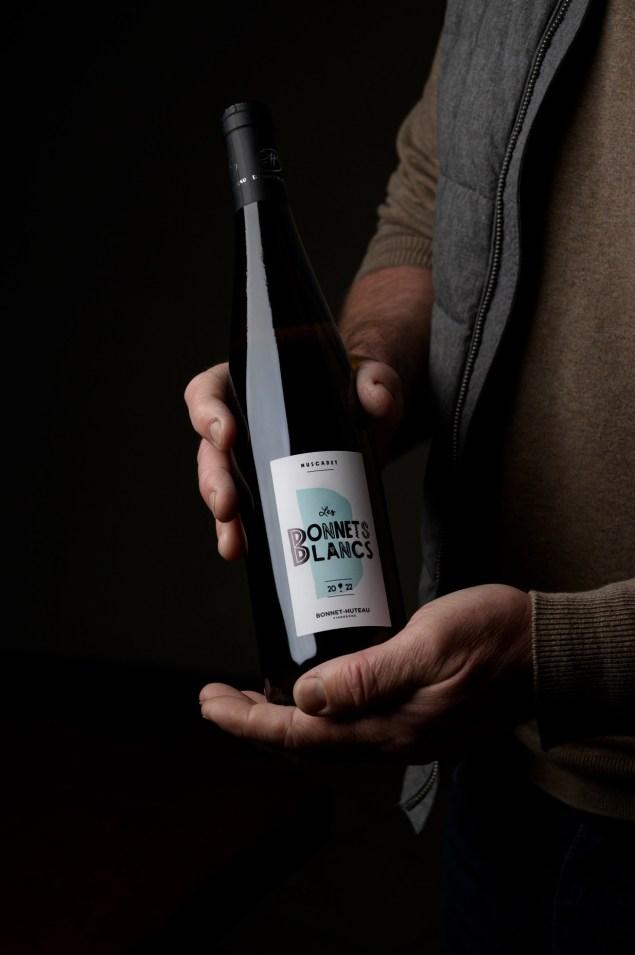
Picking is by hand for the entire estate. Pressing is by pneumatic press. Following a cool débourbage, fermentations are with wild yeasts in thermo-regulated glass-lined underground or stainless steel vats, with temperatures held to 17 – 20°C to ensure maximum fruit and freshness.
Now using maceration pelliculaire and a partial malo on some cuvées to give weight and gras and with around 15% undergoing a cold stabulation before fermentation, the different cuvées are matured with their lees in suspension, gaining further complexity and giving wines with finesse, fruit and volume In the cellar, they take a less intervention approach allowing the so that their wines can live and reflect our the marvelous terroirs.
(Images by Paul Stefannaggi) WINE
Tout Gris (Pinot/Sauvignon Gris)
IGP Val de Loire
Les Bonnets Blancs
Muscadet S&M sur Lie AOP
Les Bonnets Orange (Pinot/Sauv Gris) Vin de France
Les Gautronnières
Muscadet S&M sur Lie AOP
Clos du Moulin Chartrie
Muscadet S&M sur Lie AOP
Les Laures
Muscadet S&M sur Lie AOP
Cru Goulaine
Muscadet Sèvre et Maine Cru Communal AOP

& 2024
&





Having taken over the family estate in 2001, Jérémie has changed it beyond recognition and is seen as the up-andcoming producer in the region. Going from strength to strength, he is continuing to increase the size of his estate, which now covers 64 hectares, of which two thirds is now certified as organic. Jérémie's carefully thought-out program of investment is now clearly bearing its fruits, and the combination of his stainless steel vats, new underground vats and a 'cubist' egg go some way to show his determination and efficiency. Each of the estate’s wines has its own history:
Domaine de la Chauvinière - perched on the edge of the cliff above the Maine river, the heart of the family's vineyards is planted on the edge of Chateau-Thébaud.

Château de la Bretesche - 13-hectare domaine dating back to 1387, when king Louis XIV gave it to his bodyguard Louis Jausseaume. The gneiss rock gives brilliantly balanced fruit and minerality.
Clos des Montys - this 11-hectare Clos includes a plot planted in 1914. Planted on the green amphibolite, this is massively stony, demanding time to open
Château de la Templerie - the most recent addition to the estate. 12 hectares of 40-year-old vines planted on granite, all run organically with Ecocert certification. Its citrusy, mineral concentration contrasts nicely with the clear-cut character of the estate’s other wines.
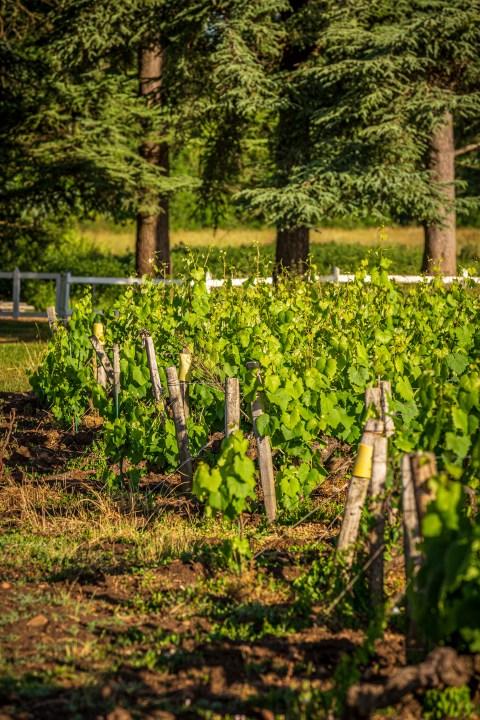
Running the non-organic vineyards according to the principles of sustainable viticulture, yields are held low by a minimal use of fertilisers and with crop thinning when and where necessary.
After picking by machine and pressing in a pneumatic press, the juice is cooled to below 10°C for a cold stabulation before fermenting at controlled temperatures in a range of stainless steel and underground vats.
To add further depth and breadth to the wines, 30% undergoes a short macération pelliculaire. A classic example of the Cru style, the minty and rounded Chateau Thébaud, comes from a plot of 65-year-old vines, maturing for 3 years sur lie before bottling - creating one of Muscadet's top tier Crus Communaux.

Meli-Melon
Vin de France Blanc / Rouge
Domaine de la Chauvinière
Muscadet Sèvre & Maine sur lie AOP
Le Chemin des Prières - Parcellaire
Muscadet Sèvre & Maine sur lie AOP
Monty le Parc - Parcellaire
Muscadet Sèvre & Maine sur lie AOP
Cru Communal Château Thébaud
Muscadet Sèvre & Maine AOP
Cru Communal Clisson
Muscadet Sèvre & Maine AOP
Cru Communal Monnières St Fiacre
Muscadet Sèvre & Maine AOP
Cru Communal Goulaine
Muscadet Sèvre & Maine AOP
2023 & 2024
2023 & 2024
2023
2023
2020
2019 & 2020
2018
2021



Grands Chais de France, the owners of the Château du Cléray, have wisely left Bordeaux-trained PierreJean Sauvion in charge of winemaking on his family's old estate. A choice that makes the most of his local know-how (retaining this prime estate's family-run image) and experience making wine in Australia and California.
A true passionné, Pierre’s wines show the finest qualities of great Muscadet, marrying gras, minerality and elegance, the whole with a touch of modernity that owes much to Pierre’s canny use of his new world skills.
At the centre of the Sèvre & Maine, the Château du Cléray’s 90 hectares of vineyards (Pierre-Jean’s 'jardin'!) are planted on the sand and clay slopes typical of the commune of Vallet, with the last plots of gros plant finally being replaced with Muscadet in 2012.

Under the guidance of Pierre-Jean, the estate is increasingly using the techniques of Lutte Raisonnée – he’s starting to grass through the first hectares - and production is held below 50 hectos/hectare through a long pruning that is followed by a spring épicheonnage (thinning the crop once the flowering is finished) to de-bud and space the bunches.

After pressing in a dry-ice inerted pneumatic press, with a macération pelliculaire and/or cold stabulation to add depth and weight, the wines are fermented in stainless steel vats at controlled temperatures before maturing on their lees until bottling in the spring.
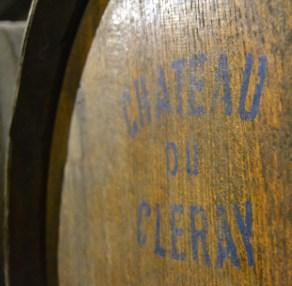
Les Rafelières
Sauvignon IGP Loire 2024
Le Bois Chalard
Chardonnay IGP Loire 2024
La Baronne du Cléray / Sauvion du Cléray
Muscadet Sèvre & Maine Sur Lie AOP 2024
Château du Cléray
Muscadet Sèvre & Maine Sur Lie AOP
Cardinal Richard
Muscadet Sèvre & Maine Sur Lie AOP



From the hills overlooking the Sèvre and Maine rivers rise windmills, all of which have ultimately lost their wings. The surrounding slopes, often stony and steep, are ideal for cultivating vines and producing a refined and distinctive Muscadet. It is in this green setting that the Gadais family has established their estate over generations.
The "Grande Réserve des Moulins" they offer today has been aged in the great Nantais tradition, on its lees, for a minimum of six months. The freshness of its aromas and its inimitable light sparkle make this wine the perfect companion for all fish, shellfish, and crustaceans.
Christophe Gadais has been joined by his son, Pierre-Henri, now the 5th generation running the estate, the most recent vintage being vinified by Pierre-Henri. Pierre Henri has already gained experience in the USA, the UK and New Zealand and brings this knowledge back to the Domaine.
Christophe continues to excel in making the wines in his recently extended, purpose-built cellar. In the 20-odd years that Christophe has been running the domaine the whole place has had a complete face-lift thanks to his steady program of investment.
Eight years running Domaine Laporte in Sancerre before moving back to the Pays Nantais had a lasting effect on his attitude to winemaking and marketing.


After harvest and a cold débourbage, fermentations are at cool temperatures with mainly natural yeasts to give long (6 – 7 week) fermentations in his steadily growing row of thermo-regulated stainless steel vats. A classic élevage on the wine’s lees adds richness and gras, underscoring the character of a wine whose very essence lies in its understated freshness and versatility. With his new battery of tanks set on the first floor, bottling is now all done by gravity.

Domaine de la Tourmaline
This dedication to quality is underlined by a commitment to the environment-friendly minimum intervention rules of La Lutte Raisonnée, systematically replacing vines and keeping check on the health of the leaves and root stock, all to give healthier, riper grapes and to make ever richer and more satisfying wines year-in-year-out.
It is no coincidence that 100% of the 52 hectares that include their vineyard is devoted to the lutte raisonnée (HVE3) of this emblematic grape variety.
Muscadet Sèvre & Maine Sur Lie AOP
Les Perrières Monopole
Muscadet AOP
Peninsula Vieilles Vignes
Muscadet Sèvre & Maine Sur Lie AOP
Peninsula Vieilles Vignes Magnums
Muscadet Sèvre & Maine Sur Lie AOP
300Magsavailable
Plantation 1947
Monnières St Fiacre Cru Communal
Muscadet Sèvre & Maine AOP
2023 & 2024
2023
2023
2023
2020



In the family since 1864, this estate is a regular medalwinner and its evolution is clearly shown in the way it has grown under Jérôme, the 4th generation of his family to run the estate.
Today the domaine has 107 hectares in production, an area complemented by his buying a further 30+ hectares sur pied - making this the largest single estate in the region. Furthermore, Jérôme has replanted 7 ha at the Château de la Pierre (totaling 16ha) and has bought another 17 hectares at La Roche Blanche. More recently, he also took over a new domaine - Les 5 Chemins (12Ha).
After 20 years running the domaine sustainably with the Farre organisation, Jérôme has now gone one step further, gaining Terra Vitis certification. Committed to quality and to offering full traceability, he has also received the highest level of IFS and BRC certification.
Set just south of Nantes, between the better known vineyards of Muscadet’s Sèvre & Maine and the Atlantic coast, the 260 hectare Côtes de Grandlieu Cru benefits from an exceptional microclimate: the warmth of the Atlantic brings spring on early, while the huge Lac de Grandlieu acts like a giant storage heater through the growing season, giving extra ripeness and more fruit to the wines. Careful vineyard management further enhances this ripeness, to the extent that we now expect Jérôme to pick a good degree riper than his colleagues in the Sèvre et Maine!
A spring de-budding separates the bunches to ensure the grapes get plenty of wind and sunlight, reducing the risk of rot and keeping the grapes healthy and this is helped with a systematic de-leafing around the bunches.
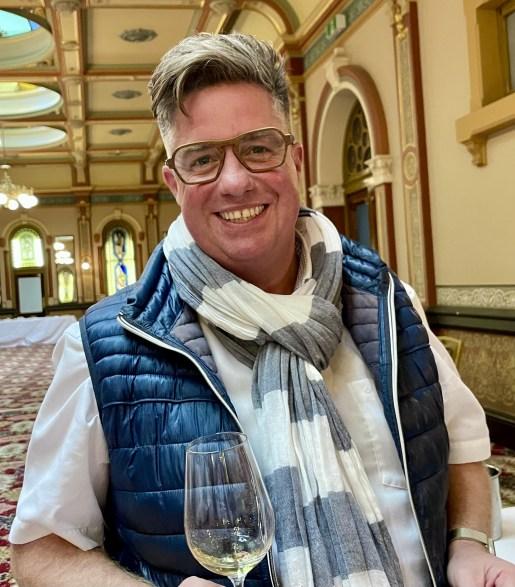
Finally, a summer manual thinning ensures even ripening and ever-greater concentration, a mass of work to ensure a healthy, ripe harvest and to give fruit, depth and concentration. After harvesting with the latest generation 'selective picking' machine, the grapes are gently pressed in CO2 inerted pneumatic presses, with some of the crop now macerating with its skins.
The juice is then racked off and is kept cold with a 4-10 day stabulation à froid bringing out even more flavours and aromas. After a long, cold fermentation in glass-lined underground vats, the wines are left to mature on their lees until bottling sur lies. The results are beautifully poised, fruitdriven wines with intense minerality.
After 3 years of research and development, the Domaine is investing a lot of money to launch a premium range in cans & a low alcohol wine range (8.5%).

Le Moulin d’Argent
Chardonnay IGP Loire 2024
La Salle Bellay
AOP Saumur Blanc 2024
Le Champ Baron 8.5%
Grolleau Gris Blanc/Rosé IGP Loire 2024
Domaine des Herbauges Classic
Muscadet Côtes de Grandlieu sur Lie AOP
Domaine des Herbauges Terroirs;
Le Fief Guérin
Le Clos de la Sénaigerie
Le Clos de la Fine
Les 5 Chemins
Château de la Pierre Vieilles Vignes
La Roche Blanche
Muscadet Côtes de Grandlieu sur Lie AOP
Luminescence Mousseux
2023 & 2024
2023 & 2024
Melon, Chardonnay, Grolleau Gris NV
Saumur Blanc Brut & Rosé NV



The history of Les Freres Couillaud began in 1978 when they bought the Chateau de la Ragotière. The Chateau de la Ragotière is the former home of the aristocratic family Lore de la Ragotière, who settled here in the Muscadet during the fourteenth century.
Bernard, Michel and François were born into a family of winemakers based in Mouzillon for over 150 years. Auguste Couillaud, their grandfather, had nearly 20 hectares of vineyards.
In 1970, Bernard travelled to the United States and Mexico. He returned with the ambition of selling his Muscadet worldwide and decided to start selling the wine in bottle, a real revolution at that time. His brothers, Michel, François and Bernard decided to buy the Chateau de la Ragotière in 1979. Then in 1987, they decided to buy the Chateau de la Morinière, a 30-hectare vineyard 3km away from Ragotière. On this property, they decided to plant a new variety for the region: Chardonnay. This was a major innovation in the Muscadet Appellation and this Loire Chardonnay has an extremely Burgundian expression. Since then the family have continued to develop the vineyards and have included experimental plantings of Viognier, Petit Manseng and Sauvignon gris.
In 2006, the new generation Amélie, daughter of Bernard and her husband Vincent joined the business. Amelie is a graduate in business and languages and handles exports while Vincent, an agricultural engineer is in charge of the vineyards.


In 2018, François retired after working for 12 years with the new generation who have bought in innovative projects with ecological alternatives in the cultivation of vines and the creation of new cellars.
New projects are flourishing at the estate: development of wine tourism, conversion to organic, development of historic cellar, while remaining focused on the identity of the estate, exports and the diversity of grape varieties. This vast vineyard planted on a single plot of 70 hectares is located on one of the highest hillsides in Sèvre et Maine.
These stony slopes which face south/south-east produce fine and aromatic wines. Here Melon de Bourgogne, Chardonnay, Pinot gris and Sauvignon are planted.
Domaine La Morinière
Muscadet Sèvre et Maine
Domaine La Morinière
IGP Val de Loire Chardonnay
Bernier
2023
2023
Vin de France Chardonnay 2023
Domaine La Morinière
IGP Val de Loire Sauvignon 2023
Domaine La Morinière
IGP Val de Loire Pinot Gris 2023
Château La Morinière – Vieilles Vignes
Muscadet Sèvre et Maine sur Lie 2023
Amélie et Vincent – La Petite Etoile
Muscadet Sèvre et Maine sur Lie 2023
Amélie et Vincent – Mille et Une Etoile Méthode Traditionnelle Extra Brut 100% Chardonnay NV
Amélie et Vincent – La Nouvelle Lune
IGP Val de Loire Chardonnay 2023









The beautifully run vineyards of this 40 hectare estate are planted on the rolling hills of the Pays des Mauges - the broken metamorphic rock lying between Muscadet to the west and the Coteaux du Layon and the Anjou to the east. That provides great drainage and a mix of bedrock that includes micaschist, quartz, flint and slate - a pocket handkerchief-sized microcosm of all the western Loire's greatest terroirs!
Set up in 1953 by Christophe Réthoré and JeanMichel Davy's parents, the domaine has grown and evolved into one of the most carefully thought-out estates of them all. The Domaine continues to be passed down through the generations as Lise, Christophe and Martine’s daughter has joined the team in helping to run the estate. Benefitting from the lack of a regional AOC, all their vines are run to produce IGPs, so they can mix and match varieties to soil types as they please. Committed to the welfare of the environment being Terra Vitis (responsible viticulture) and HVE (High value environment) certification. The Domaine is currently undergoing organic conversion.
Whatever the variety, the rule is the same - plant around 4400 vines/ hectare, which allows Christophe to grass through the vineyards, to raise leaf height to 1.90 m and to systematically de-bud and de-leaf the vines so as to get good yields of healthy and super-ripe grapes. Harvesting by machine in the cool of the early morning, vinifications are by parcelle and by variety, each in CO2-inerted vats.
The schist-grown Chardonnay does an 8 - 12 hour maceration pelliculaire before fermenting - adding depth and fat and eliminating the need for a malo, while the 7 hectares of Sauvignon are grown on

The reds are equally remarkable, with a great selection of traditional Loire varieties topped-up with less traditional Malbec and Syrah. Each is vinified to bring out the sucrosité of ripe fruit, with use of pigeage where useful to extract softer tannins.
The whole is further split into two clear styles: the Parcelles which are vinified for easy fruit and mineral complexity and the Pertinence range from schist and slate.

Parcelles

Sauvignon Blanc IGP Loire 2024
Parcelles
Chardonnay IGP Loire 2024
Parcelles
Chenin Blanc IGP Loire 2024
Parcelles
Gamay/Côt Rosé IGP Loire 2024
Parcelles
Pinot Noir IGP Loire 2024
Parcelles
Pinot Gris IGP Loire 2023 & 2024
Pertinence
Syrah VdF 2023 & 2024
Pertinence
Malbec IGP Loire 2023 & 2024
Pertinence
Viognier VdF 2023 & 2024
Imagine Brut
100% Chardonnay Méthode Traditionelle
Noir d’Imagine
100% Pinot Noir Méthode Traditionelle
NV
NV



Although his father Claude is still to be found pottering round the cellar, the current success of this estate and the quality of the wines is down to son Stéphane and his wife Séverine. Their 50 hectares of vines include something over 30 hectares of Chenin Blanc – of which 7 are on the steep slopes in the great Chaume 1er Cru.
The Chenin also includes a finely-placed 1 hectare parcelle in the Loire's only Grand Cru - the Quarts de Chaume - and plots in 3 separate sites in Savennières : the sand-onschist Moulin du Gué and 1 hectare each in the mineral cru of the Roche aux Moines and in the Clos du Papillon.
We used to describe Stéphane as ‘delightfully unassuming’ but these days he is increasingly sure of his ideas on wine-making techniques, yields and ruleshelping Chaume gain its Premier Cru status and Grand Cru for Quarts de Chaume.
His wines express to perfection the qualities of the extraordinary terroir of this corner of France, finding its apogee in the variety of schist and carboniferous soils that mark the finest parcelles of the region.
Ensuring both quality and ripeness of the grapes by grassing-through the vineyards, pruning short and doing a summer thinning and leaf plucking around the bunches by hand, picking is in perfectionist tris – and yields seldom rise above 25 hectos/hectare for the Chenins.
In the winery, a steady program of investment has brought its share of crossflow filters, thermo-regulated vats and an enlarged barrel cellar. After a careful pressing, a controlled débourbage (and a cold pre-fermentation maceration for the reds), the Cabernet, Chardonnay and Sauvignon ferment at controlled temperatures in a series of stainless steel and underground vats.

Meanwhile, after filtering the juice to ensure extra purity, the Layons, Savennières and the increasingly elegant Audace Anjou Blanc, Stéphane ferments the wines slowly, parcelle by parcelle and tri by tri, in vat or in new to 4 year old 400 litre barrels. Using a partial malo on the dry Chenins depending on vintage and careful élevage sur lie to ensure extra gras and concentration, Stéphane uses a crossflow filter to stop the fermentations of the moelleux, helping to massively reduce sulphur levels.
The results are wines of a richness and intensity that show clearly the world-class potential of fine Loire Chenin. In 2022, the Quarts-de-Chaume Grand Cru was voted best sweet wine in the world at the Concours Mondial de Bruxelles.


Rosé de Loire / Caberrnet d’Anjou AOP 2024
Sauvignon Blanc IGP Loire 2024
Chardonnay IGP Loire 2024
Chenin de Loire IGP Loire 2024
Tondresse (Chenin Blanc) 30g RS IGP Loire 2024
Anjou Rouge AOP 2023 & 2024
Poil de Lièvre
Anjou Rouge AOP 2023 & 2024
L’Audace
Barrel-fermented Chenin Blanc 2024
Moulin du Gué
Savennières AOP 2023 & 2024
Clos du Papillon
Savennières AOP 2024
Roches aux Moines
Savennières Roche Aux Moines AOP 2023
Coteaux du Layon AOP 2023 & 2024
Coteaux du Layon St Aubin AOP 2023 & 2024
Coteaux du Layon AOP 1erCruChaume 2022
Les Onnis
Coteaux du Layon AOP 1erCruChaume 2021 & 2022
Quarts de Chaume AOP GrandCru 2021 & 2022





Alexandre has taken over from his dad Phillipe and is the 4th generation in this family to run the family estate. Alex's touch is most visible in his immaculately precise dry Chenin 'Cheninsolite', a single vineyard in the Layon that he picks by hand in selective pickings before fermenting and maturing it with its lees in new to 10year-old 225 litre double barriques, with a percentage doing malo in oak.
The domaine’s 32 hectares of vines include 21 of Chenin Blanc planted on some of the finest schist, quartz and carboniferous slopes of St Aubin and Chaume. The domaine suffered a devastating fire in early spring 2021, which destroyed the entire winery, the new winery was completed in 2023 and has just produced the 2023 vintage. Alex has also opened a new cellar in Rochefort sur Loire.
Ensuring maximum concentration by holding yields to between 20 and 35 hectos/hectare through a combination of short pruning and spring de-budding in vineyards which are now all run organically with ecocert classification. Alex picks the Chenins by hand in successive tris, bringing in grapes at optimum concentration and ripeness.

This policy is rewarded with a quality exemplified by wines with a lovely, almost delicate balance of power-fruit. They were delighted to introduce the new cuvée to the range - the Clos du Moulin Sainte Catherine purchased in 2018. The wine is fermented and aged in amphora and has incredible purity and expression on minerality plus an abundance of perfectly ripe Chenin fruit.
With vinification’s in temperature-controlled vats, permitting a long maturation with the fermentation lees, the domaine produces rich, concentrated yet delicately balanced cuvées of Coteaux du Layon, wines evocative of whipped cream and honey that are filled with fruit confit flavours and freshness. Working the land using organic practices since 2011, the domaine is certified organic since 2014.
As for the Cheninsolite, well… move over Sancerre - this is what Loire dry whites are all about!

Tulipa Chenin Blanc - IGP Val de Loire 2023 & 2024
Anjou Blanc AOP Sec 2023 & 2024
Cheninsolite
Barrel-Fermented Chenin Blanc - Anjou AOP 2023
Clos Moulin Sainte Catherine
Amphora-fermented Chenin Blanc – Anjou AOP 2023
Rosé de Loire AOP 2024
Anjou Rouge AOP 2023 & 2024
Coteaux du Layon St Aubin AOP 2023
Les Varennes
Coteaux du Layon St Aubin AOP 2024
Coteaux du Layon AOP 1er Cru Chaume 2024 (Nov)
Crémant de Loire NV



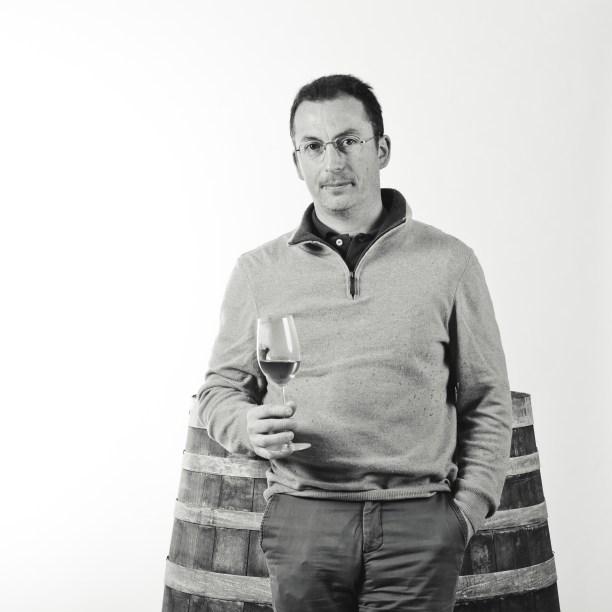

A cult figure among local producers, Claude Papin is most evangelical about the qualities of his differing terroirs – and as cartesian as can be when it comes to understanding and putting into practice the latest techniques of vineyard management and wine making skills.
Characteristics passed onto his son René, whose influence is more and more evident now he’s really imposing his own character on the estate as Claude has now officially retired.
The domaine has 10 hectares of Cabernet and some 36 of Chenin that include 3 hectares of the prestigious Quarts de Chaume, one of the syndicats of which Claude was President (and given the interminable arguments in this pocket handkerchief-sized Grand Cru, he’s welcome to that.
46 hectares of the vines are fully managed using organic regenerative farming. This is achieved using plant cover which allows an absolute minimal intervention on the soil meaning the presence of micro-organisms stabilising the soils year after year improving fertility. René works in the strictest respect of the ideals of Lutte Raisonnée, to allow an absolute minimum of treatments, the vineyards are run to a standard not seen elsewhere, with massive care in the vineyards. These are all grassedthrough, with long pruning, manual leaf-plucking around the bunches and a spring de-budding keeping the grapes healthy and ensuring low yields of perfectly ripe grapes.
Harvesting is by hand in successive tris, picking bunches or part bunches as they reach full ripeness -before being reassembled tri by tri once fermentations are finished to make just the one wine per parcelle, a unique guarantee that each wine is the true expression of its terroir.


Using both a Bücher and a Coquard press (depending on the wine), The Chenins ferment either in the thermoregulated vats of the family’s recently finished winery - or in new oak foudres or a row of 10 hecto amphorae, with a full malo on the dry whites adding breadth, making for eminently drinkable classics.
Filtration is by crossflow filter, ensuring minimal use of sulphur. Vinified by vineyard site and terroir - the Soucherie is classic ‘carbonifère’, the Rouannières ‘spilite’ and the Chaume is from ‘schist’ - all the estate’s moelleux are part-fermented and matured in oak, with the Chaume and Quarts de Chaume 100% oak fermented. This integrity combines with a willingness to squirrel cuvées away until they are ready to drink, giving us some of the most exquisite Chenins produced anywhere in the Loire
Le Haut de la Garde
Anjou Blanc AOP Sec 2023
Clos de Coulaine
Savennières AOP 2020 & 2021
Clos le Grand Beaupréau
Savennières AOP 2022
La Roche aux Moines
Savennières La Roche aux Moines AOP 2022
Les Rouannières
Anjou Rouge AOP 2022
Coteaux du Layon Rochefort AOP 2022 & 2023 50cl
Les Rouannières
Coteaux du Layon Beaulieu AOP 2021 & 2022 50cl
Quarts de Chaume AOP Grand Cru 2022 50cl
Crémant de Loire 2023





Philippe’s father had a large business comprising apple orchards, although his maternal grandfather was a vigneron. After his father sold the apple business in 2001, Philippe and his father bought the 36 ha Domaine des Deux Vallées with the proceeds. After gaining his professional agricultural qualifications, Philippe went to hone his winemaking skills with a nearby vigneron friend whilst his father tended the vines. Fifteen years later and having bought additional small parcels of vineyards here and there, the Domaine now currently comprises 44 ha of vineyards.
One of the first things Philippe did was to rip out the plantings of Sauvignon and Chardonnay and to replant with Chenin with the intention of becoming a specialist of Chenin Blanc. Then in 2018, the Domaine grew further with the acquisition of Domaine des Gaudrières, which has been organic since 2021. This brings the total surface under vine to 61 ha, of which 41 ha are planted with Chenin. In 2020, Philippe took over 3ha of Savennières. The rest of the Chenin are either Anjou Blanc or Coteaux du Layon (incl a plantation of 3.5 ha in Chaume.
The property’s vineyards lie on 2 main terroirs: The first is schist on the slopes between the Loire and the Layon and this is where the name “Deux Vallées” comes from.

The domaine works exclusively with natural yeasts except for the Anjou Blanc and the P’tit Rosé en Terrasses. The dessert wines are treated with a cross-flow filtration which dramatically reduces the use of sulphur throughout the winemaking process, in fact sulphur is only used to arrest fermentation. Phillipe was awarded Loire Winemaker of the Year for 2022 in the Guide Hachette
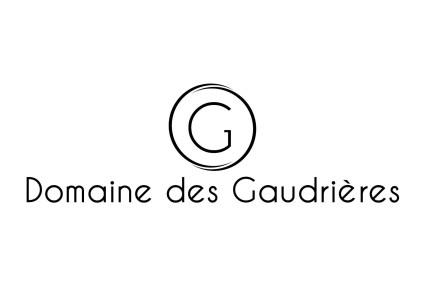
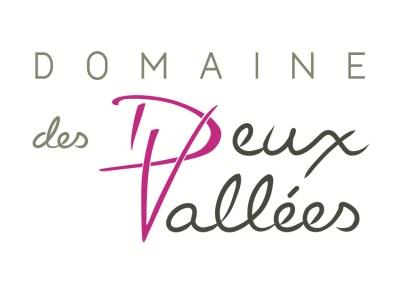

Domaine des 2 Vallées
AOP Rosé de Loire (sec) 2024
Domaine des 2 Vallées
AOP Rosé d’Anjou 2024
Clos du Bois
AOP Anjou Rouge 2023
Vin de France Chenin Blanc 2024
P’tit Blanc En Terrasse Demi-Sec
IGP Val de Loire Chenin Blanc 2024
En Terrasses
AOP Anjou Blanc 2024
Clos de la Casse
AOP Anjou Blanc (oak fermented) 2023
Domaine des 2 Vallées
AOP Savennières 2023
Clos du Petit Beaupreau
AOP Savennières 2023
Domaine des 2 Vallées
AOP Coteaux du Layon 2023 & 2024
Domaine des 2 Vallées
AOP Coteaux du Layon St Aubin 2023 & 2024
Domaine des 2 Vallées, Clos de la Motte
AOP Coteaux du Layon St Aubin 2022 50cl
Domaine des 2 Vallées
AOP Coteaux du Layon 1er Cru Chaume
Domaine des 2 Vallées, Privilège
2023 50cl 2023 75cl
AOP Coteaux du Layon 1er Cru Chaume 2022 50cl
Domaine des 2 Vallées
AOP Crémant de Loire Brut, Rosé & ½ sec
NV








Paul Buisse's 100 year old family négociant firm was based in cellars under the castle town of Montrichard on the Cher Valley - just upstream of the celebrated Château de Chenonceau. As well as working as a négociant, the firm owned its own vines - some 250 hectares split between Paul's original domaine in Pouillé and vineyards in the Touraine and Vouvray.
After building a great reputation for the quality of his wines, Paul retired in 2010, merging his firm with the Chainier family based at nearby Amboise. Philippe Chainier has now taken over the running of the estate, with his highly skilled brother François running the vineyards and vinifications – an impressive duo whose aim is to offer great quality and wonderful value.
The Maison Paul Buisse works from an impeccably maintained cuverie and rock-hewn cellars and from a purpose-built winery set among the firm’s vines up above the Cher.
Specialising in the classic Sauvignon Blanc of the Loire, the domaine wines are supplemented by buying-in grapes and juices which are vinified on site before bottling in Chainier's BRC certified site in Amboise, allowing screw cap and even bag-in-box filling.

Using up to 100% macération pelliculaire to add gras to the Domaine Sauvignon, they vinify the bought-in grapes to create the crisply typé cuvée, that has just a small percentage of skin contact, adding a touch of fat to the crunchy aromatic style so typical of the cool fermented Sauvignons of the region.
Working to high viticulture standards, focusing on sustainable agriculture, vegan wines, green practices. Certified in safety, hygiene and high environmental value: HVE, BRC, IFS.
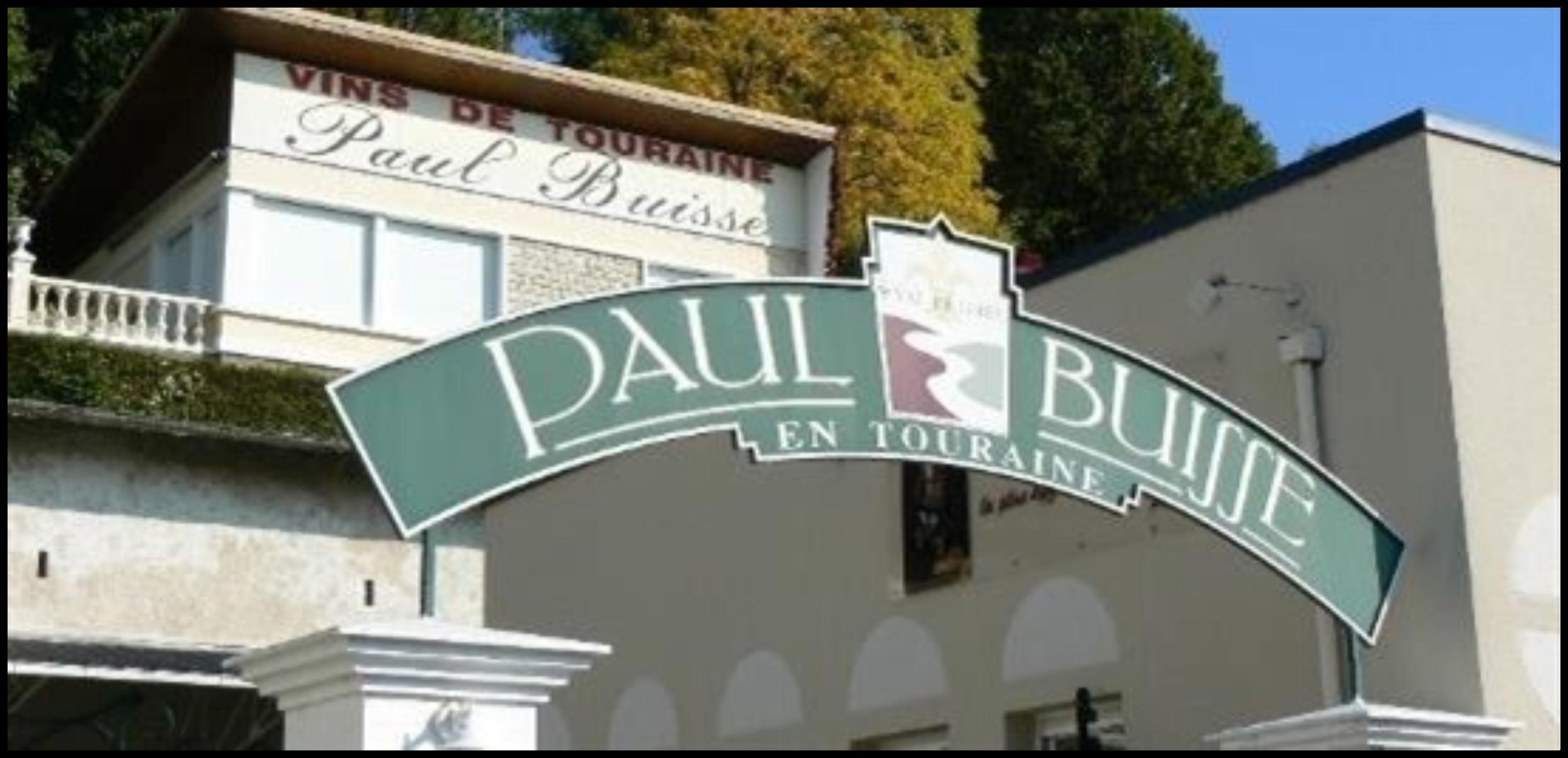
Sauvignon Blanc, Chardonnay
Vin de France 2024
Pinot Noir, Pinot Noir Rosé
Vin de France 2024
Rosé d’Anjou
Rosé d’Anjour AOP 2024
Paul Buisse Muscadet
Muscadet AOP 2024
Paul Buisse
Touraine Sauvignon AOP 2024
Domaine Roc de Châteauvieux
Touraine Sauvignon AOP
Paul Buisse
Vouvray AOP
Paul Buisse Chinon
2023 & 2024
2023 & 2024
Chinon AOP 2023 & 2024




Having finished his studies at Amboise and at Bordeaux, and showing all the messianic enthusiasm you could ever hope for from a recently-qualified and highly motivated wine maker, Jean-François finally took over his family’s 40 hectare domaine in 2000 – and he’s already fulfilled initial promises of high quality and took-over the beautiful former winery from Paul Buisse in the heart of Montrichard and transformed it into a beautiful ‘oenotouristique’ place.
He has now reduced the size down to 35ha (100% organic from the 2023 vintage) and will be building a brand-new state of the art winery very shortly in St Julien de Chédon.
Today the domaine comprises 9 hectares of Sauvignon, 9 of Gamay and 9 ha of Côt (including 1 ha that has been surgreffé) that is in many ways the estate’s pride and joy. The rest is planted with various grapes such as – Chardonnay, Sauvignon Rose, Cabernet Franc, Grolleau & Pineau d’Aunis.
Planted on south-facing slopes made up of hard ‘tête de chat’ limestone with pebble and flint topsoil, Jean-François’ vineyards are run
Committed to low yields and high ripeness, a long pruning is followed by a spring debudding to space out and thin the bunches, and Jeff then does a further green harvest wherever necessary in the summer. Picking some 25 hectares by hand, after pressing in pneumatic press and a long cold stabulation, fermentations (up to 6 weeks for the Sauvignon) are in temperature controlled stainless steel or underground vats, with a high percentage of macération pelliculaire and long sur lie maturation adding depth and concentration to the exceptionally rich Sauvignon. The reds are equally carefully vinified, using micro-bullage to soften the tannins and balance the wines – still a rarity in this region. A complex and fine Gamay is complemented by a spectacular old vines Côt – Le Cent Visages – that is full of ripe, soft blackberry fruit and spice. The domaine is currently in full conversion to becoming organic.

Hexagonale Sauvignon Blanc
Touraine Sauvignon AOP 2023
Arpent des Vaudons
Touraine Sauvignon AOP 2023
Cœur de Roche
Touraine Sauvignon AOP 2022
Les Grands Champs
Cabernet Franc / Côt Vin de France 2022
Hexagonale Pinot Noir
Vin de France 2023
Le Bois Jacou
Touraine Gamay AOP 2023
Le Cent Visages
Touraine Côt AOP 2022
L’Alliance des Générations (Cab/Côt)
Touraine Rouge AOP 2019
J’Ose les Fine Bulles
Touraine Méthode Traditionelle AOP 2019



Jacky Marteau and his wife, took over the estate in 1977 and made it a success. In 2010 Ludivine and her brother Rodolphe (4th generation), took over father Jacky Marteau's flagship Touraine estate and are doing an impressive job - actually improving on already impeccable quality by imposing an even more demanding style. Ludivine, alone, is now in charge of the estate.
Today the estate has 29 hectares of vines - an area steadily rising with regular plantings - that include 21 of Sauvignon Blanc, 4.5 of Gamay and a smattering of Cabernet, Malbec and Chardonnay. Run according to the philosophy of Lutte Raisonnée, the family’s vines are planted on some of the finest sites of the Touraine: a series of south-facing pebble and flint slopes on the south bank of the Cher. Yields are kept low and grapes at full ripeness through a combination of short or controlled pruning, supplemented by severe de-budding whilst they also grass through the vineyards, de-leaf and then thin the crop if necessary with a ‘green harvest’ at véraison
The harvest itself is by hand or machine depending on the variety, the site and the vintage. After a gentle pressing, dry ice is used to inert, this protects juices and reduces the need for any SO2 doses. At least 25% of Sauvignon goes through a skin maceration. It lasts on average 4 hours but during the day not at night.
The percentage (25%, 50% or more) is chosen according to the vintage. Skin maceration is a natural way to lower the acidity of musts, in addition to providing enhanced aromatic complexity. Followed by a 7-10 cold stabulation, fermentations are at controlled temperatures in stainless steel or in specially created steel-lined underground vats.

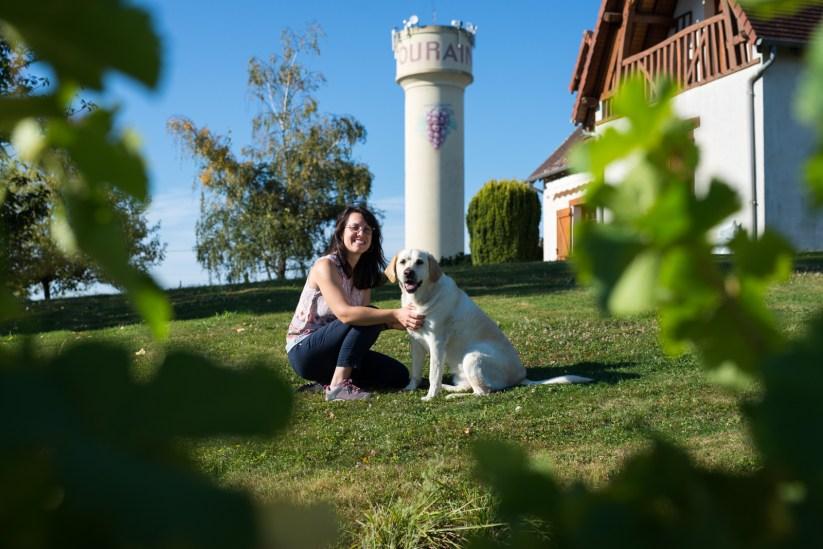
The domaine’s red wines are consistently superb – the rich, fleshy Gamays are picked by hand with a severe triage at harvest and vinified with a semi carbonic maceration to give a lovely rich, pulpy fruit that is almost unique in the region.
The Sauvignons are however the domaine’s speciality – and yet again stand out for their balance. Picked at full phenolic maturity, a gentle pressing, a cold maceration and partial macération pelliculaire all add up to give rich, intense wines with a fine balance of acidity, fruit and concentration. Despite their richness, both the Sauvignon and the remarkably intense Touraine Chenonceaux – the new Touraine Cru - retain their classic Loire aromas and balance.
Committed to the environment, by the end of 2023, 2/3 of the domaine was herbicides free thanks to a robotic autonomous soil worker ‘vitibot’’.
Ludivine aspires to be carbon neutral and is investigating ways to take the Domaine forward in this way.
Domaine Jacky Marteau
Touraine Sauvignon AOP
La Chipie
Touraine Chenonceaux AOP
Domaine Jacky Marteau
Touraine Gamay AOP
Tandem
Touraine Chenonceaux Rouge AOP, Cot, Cabernet Franc
Domaine Jacky Marteau
Crémant de Loire AOP, Cabernet Franc, Chardonnay, Chenin Blanc
2023 & 2024
2022 & 2023
2023 & 2024
2019 & 2020
NV



Patrick has been running the family estate for over twenty years now and continues to amaze us with his continual advances and experiments in both winery and vineyards. Recent investments include a new Bucher Xplus pneumatic press and a nicely up to date bottling line, two additions that bring clear improvements in both the wine and the finished bottles.
He has also become an adept of thermovinification’s, micro-oxygenation and the use of dry ice to inert press and vats… impressive! Today the estate has over 40 hectares of vines, including 30 of the region's classic Sauvignon Blanc, supplemented by his buying a further 10 hectares of Sauvignon sur pied that he picks and vinifies in the estate’s recently extended and updated winery.
Set above the banks of the Cher, on the deep sand of the south-facing slopes of Noyers, a terror of flint, sands with a clay-limestone subsoil. This makes Patrick’s vineyards ideally suited to the creation of immediately appealing and aromatic wines of great finesse. A very precise management of the vineyard in terms of fertilisation, using no chemical herbicide and being very attentive to the microbial life of the soil.
Harvesting the young vines by hand and the rest by machine, the juice is kept cold (below 8°) for a week before fermenting. Applying the method of controlled oxidation and using indigenous yeasts in a range of thermo-regulated stainless steel and fiberglass vats. Using a semi carbonic maceration for his Gamay and experimenting with thermo vinification’s to soften the Cabernets and Malbec, Patrick produces reds with soft, rich fruit.
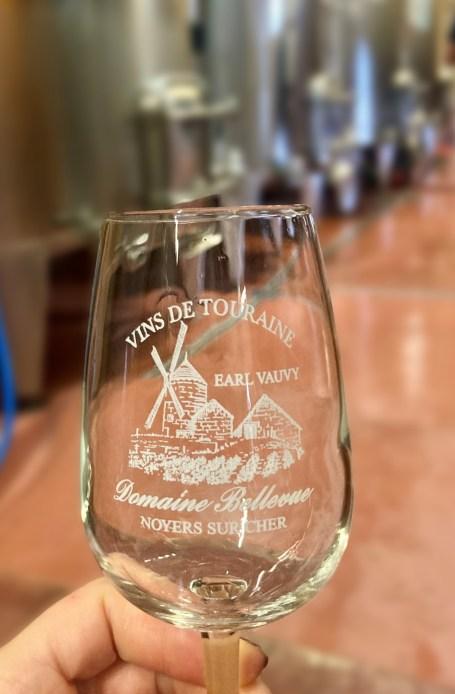

Patrick’s classic, however, is his Sauvignon. This is full, uniquely rich in flavour and structure yet immediately ‘Loire’ in style – the result of picking at full ripeness to gain maximum flavours, an overnight maceration pelliculaire on 15% of the crop, indigenous yeasts and a long, cool, controlled fermentation that starts at 14° and rises to 18° to add depth and complexity to this lively and aromatic wine. With a hint of malo too, adding a great touch of ripe, exotic fruit to the palate. The ‘XXL’ style Chenonceaux is richer still…. Fantastic.
Patrick has recently been joined at the Domaine by his son Matthieu, who from the 2023 vintage is also making his Touraine Sauvignon from 7 ha of organic vines. One is a blend from all the vineyards and the top wine is a specially selected single vineyard plot where a little, carefully managed maceration péliculaire adds an additional level of finesse and complexity. The quality is excellent and the concentration up there with Touraine Chenonceaux - see next page for more information.
Domaine Bellevue
Chardonnay IGP Loire
Domaine Bellevue
2023 & 2024
Rosé de Touraine AOP 2024
Domaine Bellevue
Touraine Gamay AOP
Domaine Bellevue
2023 & 2024
Touraine Malbec AOP 2022
Domaine Bellevue
Touraine Sauvignon AOP
Domaine Bellevue
2023 & 2024
Touraine Chenonceaux AOP 2023
Domaine Bellevue
Crémant de Loire AOP
N.V.




Matthieu Vauvy: A New Generation Serving the Terroir. At just 26 years old, Matthieu represents the next chapter in a lineage of passionate winemakers. Inspired from a young age by his father, Patrick Vauvy, he chose to follow in the footsteps of his ancestors, perpetuating a craft passed down for five generations. Determined to blend tradition with modernity, Matthieu didn’t just join the family business; in March 2023, he took a bold step forward by creating his own estate in Noyers-sur-Cher, on the right bank of the Cher River, in the heart of the Touraine appellation.
The estate spans 7 hectares and carries a valuable legacy, having been cultivated organically for over 25 years. Acquired from a neighboring winemaker upon retirement, this vineyard forms the foundation of Matthieu’s ambitious project.
Primarily planted with Sauvignon Blanc (90%), it also includes Gamay and Chardonnay, allowing for a diverse range of expressions in his wines.
The estate stands out for its remarkable geological diversity, offering three distinct soil types. Sandy soils with clay at depth, located on the top of the slopes, lending finesse and freshness to the wines. Clay with flint, found on the slopes, contributing power and minerality. Sandy soils with flint, at the bottom of the slopes, favoring expressive and aromatic wines.
This variety of terroirs enables Matthieu to experiment with specific vinification techniques, crafting wines that reflect both the identity of the grape and the soil.
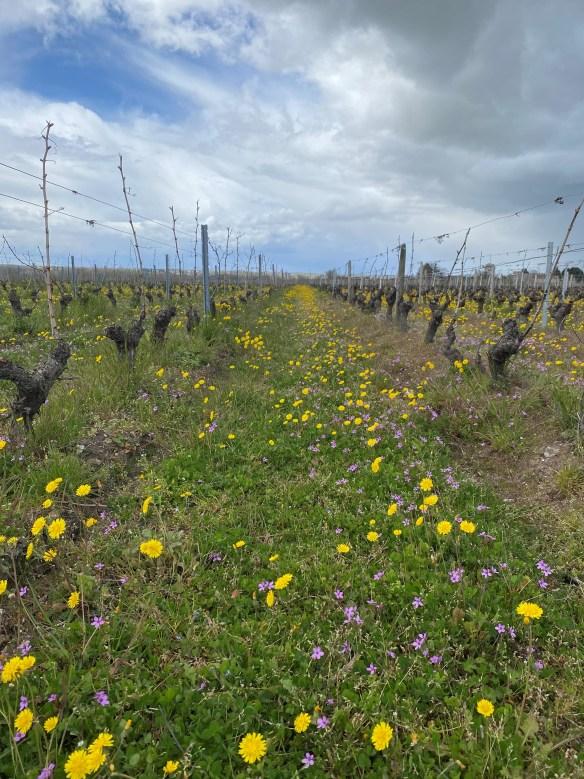
Offering signature cuvées that balance tradition with innovation.
The main Touraine Sauvignon cuvée is a blend of parcels from the upper and lower slopes. It embodies the quintessential Sauvignon from the Cher Valley, bursting with citrus and exotic fruit aromas, complemented by refreshing vivacity.
The Touraine Sauvignon ZK 114 is crafted from a single parcel selection of vines on the slopes, this premium cuvée is hand-harvested and fermented with indigenous yeasts. It highlights the purity of the terroir, with smoky notes, white fruit aromas, and a vibrant acidity balanced by a lingering saline finish. The name, ZK 114, honors the cadastral parcel from which the grapes are sourced.

With a vision for the future, Matthieu Vauvy is committed to environmental preservation while innovating to elevate the reputation of his estate. Adhering to organic farming traditions, he prioritises sustainable practices and strives to showcase the unique character of his terroirs. With passion and ambition, Matthieu crafts honest, balanced, and authentic wines that captivate wine enthusiasts with their finesse and personality.
Domaine Mathieu Vauvy
Touraine Sauvignon AOP Organic 2023
Domaine Mathieu Vauvy Parcéllaire ZK114
Touraine Sauvignon AOP Organic 2023



One of the central Loire’s last independent cooperative cellars, Beaujardin in the sleepy riverside town of Bléré was created in 1925. Today the cellar has taken on the smaller neighbouring caves of Athée and of La Croix, giving a total 170 hectares of vines.
The winery is still independent and produces the following appellations: Rosé and Crémant de Loire, Touraine blanc, rosé, rouge and Chenonceaux.
Unusually for a Loire co-operative, almost half of the vines are now owned by the cave itself, guaranteeing supply and quality of vineyard management techniques such as enherbement and the spring de-budding best suited to limiting yields.
In addition domaine des 7 Lieues sell all of their fruit to the co-operative, therefore allowing Beaujardin to create domaine quality wines and the domaine des 7 Lieues branded wine to be sold on site.
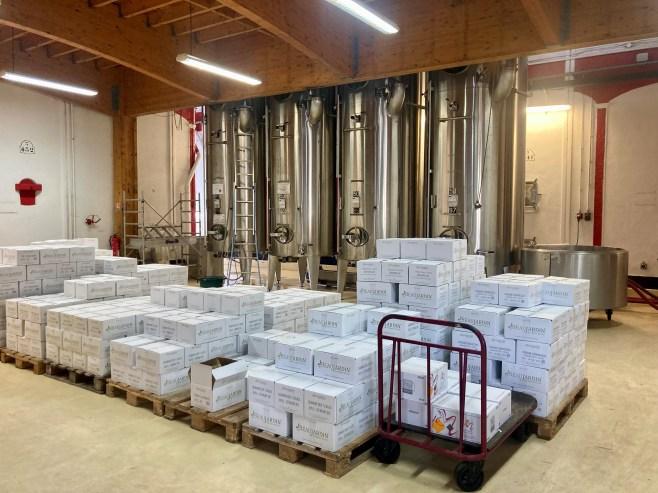
Over the last few years, Kévin the Director has evolved the vinification’s so as to make a more internationally acceptable style and he now vinifies this with a semi macération carbonique to emphasise the wine's fruit - reserving the vin de presse for the more traditional blends sold in France. The result is a balance of violet and redcurrant aromas with sweet, fat fruit that is all too rare with Loire reds and that seems to be appealing more and more to demanding export markets.

After a fire in 2014, Kevin has been making the most of the opportunity to continue its program of investment, to modernise the winery building itself and the practice’s used. The entire roof of the cellar is now solar panels (500 m2) which provides up to 40% of all their electricity needs. The vats are now all epoxy lined and complemented with a battery of stainless steel, all with temperature control.
He has encouraged the growers to move towards the local Côt – Malbec to us mortals – and away from the less complex and more fragile Gamay. The cave now produces 25 hectares of Malbec and Kévin is steadily pushing for riper harvests and more modern vinification’s and happily using oak chips and micro oxygenation to better emphasise the pulpy fruit of the wine.

Le Moulin des Aigremonts
Touraine Sauvignon AOP 2023 & 2024
Touraine Chenonceaux AOP 2022 & 2024
Le Moulin des Aigremonts
Touraine Rosé AOP 2024
Le Moulin des Aigremonts
Touraine Malbec AOP 2023



Led for 4 generations by the Trotignon family, the estate was bought in 2022 by two brothers, Arnaud and Albéric LECHAT. Arnaud spent 12 years working in supermarkets and Alberic spent 10 years in the army. Driven by a desire to work in viticulture, as a family they decided to buy the Domaine from Philippe and Véronique.
Domaine Beauséjour has been constantly transforming over the recent decades to become one of the most beautiful cellars in the appellation.
Arnaud and Albéric intend to maintain this dynamic and aim to make the estate an essential place for wine tourism in the region.
Of the 20 hectares in total, 16 hectares are planted with Sauvignon Blanc, including 1 hectare with Sauvignon Rose Fié, which brings weight and additional complexity during the blend.
Although mostly planted with Gamay, the reds include a small portion of Malbec (a massal selection).

The estate's vines are split equally between the deep sands of Noyers - perfect for adding immediacy to the varietal character of Sauvignon - and the heavier soils of St Romain, resulting in wines that marry intense aromas with great depth.
Managing their vines according to the principle of reasoned control, Arnaud and Albéric are fanatical about controlling yields and the maturity to produce healthy grapes. Using the technique of controlled natural weeding of the vines; they prune long and late so as not to pack the grapes around the vine, whilst de-budding to maintain the yields and the health of the grapes.
Followed by thinning around the bunches, if needed in the summer – the result of this extra work ensures healthier grapes with higher ripeness, lower acidity and greater complexity.

After pressing in a pneumatic press, fermentation takes place in thermoregulated stainless steel vats and the wines are kept on the lees in suspension by gentle stirring for as long as possible before racking.
The results are delicious - superb, rich and aromatic Sauvignons with depth and complexity.
Les Fossiles
Touraine Sauvignon Blanc AOP
Les Silex
Touraine Sauvignon Blanc AOP
Les Fossiles
Touraine Gamay/Malbec AOP
2022 & 2024

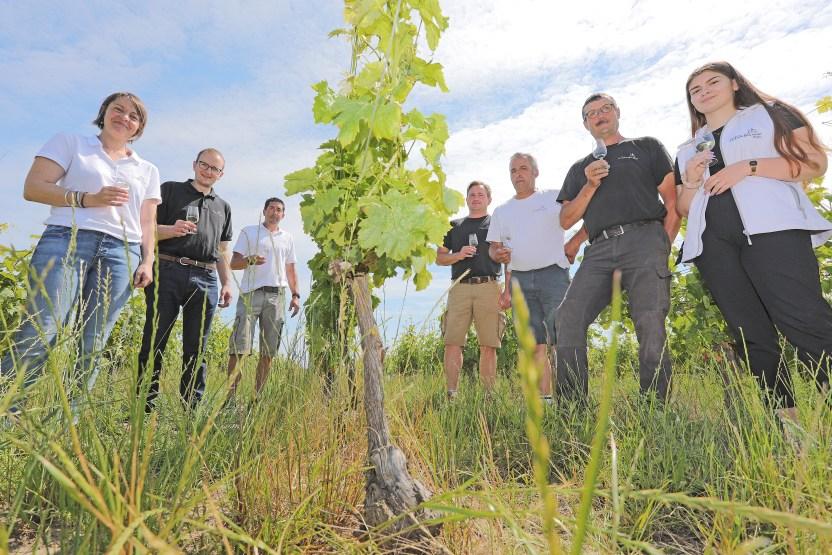

Despite being offered posts as winemaker in New Zealand and Burgundy, on leaving viticultural college, Pierre decided to take on the family estate in the southern Loire region of the Haut Poitou in 2009 - becoming the 5th generation of his family to make wines on the estate.
That's tough for the others – Pierre might be shy and retiring but they missed out on one of the best of the new generation winemakers!
Clearly benefitting from the dry, sunny climate and cooling breezes from the nearby Atlantic coast, this corner of the Southern Loire is ideally suited to producing finely balanced Sauvignon Blanc and Pinot Noir. Better still, its hard limestone soil retains the heat of the day, further helping the grapes reach full maturity. That said, true quality only really comes when you run the vineyards properly and use your brains in the winery.
Pierre runs his 32 hectares sustainably, achieving a certified high environmental value. He focusses on Chardonnay, Sauvignon, Pinot and Gamay but with some Malbec planted in 2017. Planted at 5000 vines/ hectare, the vineyards are grassed through on least alternate rows and he’s raised leaf height to over 2 metres so as to be able to leaf-pluck around the bunches, giving the grapes the best possible conditions to ripen.

After picking by machine, pressing is in a nitrogen-inerted pneumatic press - the domaine produces its own nitrogen, so the juice and wine is kept sheltered from oxidation at every stage - with the fin de press opened up to air and vinified separately. Fermentations, in part using natural yeasts, are in temperature-controlled stainless steel vats and the finished wines are kept on their fine lees with regular batonnage until bottling early spring.
The results are impressive!

Sauvignon Blanc
Haut Poitou AOP 2024
Fié Gris
Haut Poitou AOP 2024
Rosé
Haut Poitou AOP 2024
Rouge Cabernet Franc
Haut Poitou AOP 2023 & 2024
Rouge Gamay
IGP Val de Loire 2024

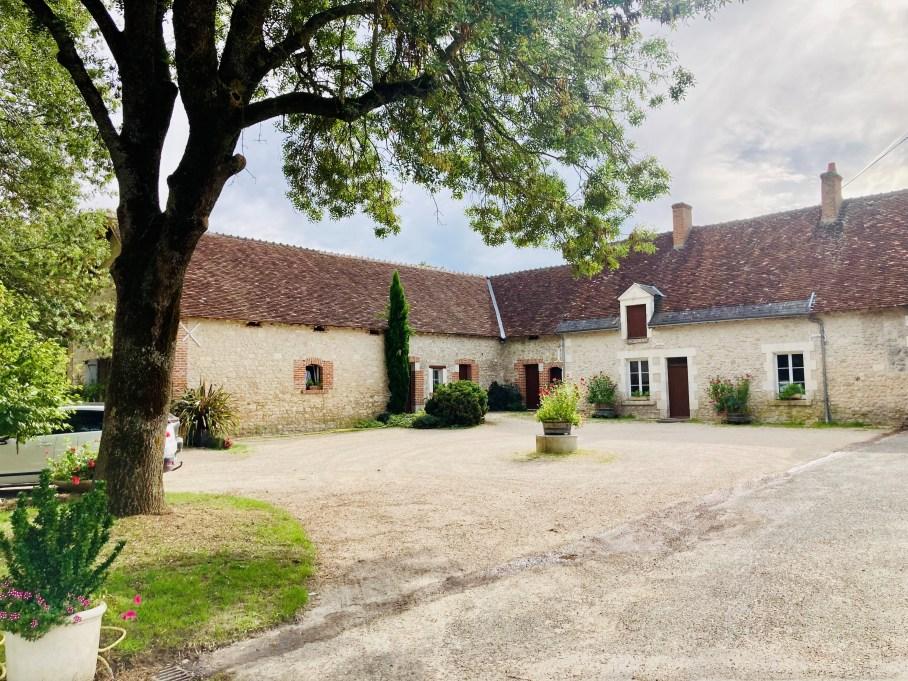

Vignerons de père en fils, Emmanuel and his brother Thierry Delaille represent the fifth generation of the family to run the domaine. Florian (Emmanuel's son) and Maxime (Florian's cousin) have just joined the company and are now working on the estate. Although the estate has now grown to a substantial 40
hectares, they supplement supply by buying-in 3 – 4 ha sur pied. Emmanuel’s emphasis is very firmly on his 40 hectares of Sauvignon Blanc Cheverny, underlining a decision to move away from tradition and into the 21st century that is reflected in their exporting some 80% of the production. The domaine has recently been granted HVE Level 3 status.
Set on the sand-on-clay vineyards, Domaine du Salvard is located in Fougères sur Bièvre, on the banks of the Loire, between Cheverny and Chenonceau.
Encouraging quality and ripeness by deliberately restricting yields by grassing over the vineyards (this shows up nicely in the improved quality of the domaine’s light but intense Pinot-Gamay red), Emmanuel and Thierry also thin the crop with a green harvest where necessary.
Picking by machine, pressing is by pneumatic press with a severe cold débourbage to settle the juice. Fermentations are at controlled temperatures in a series of thermo-regulated stainless steel and epoxy-lined underground vats in the family’s recently extended chai. The wine is then matured till the spring with the lees held in suspension with a regular batonnage.
The Domaine's newest team member is a "Vitibot Bakus" robot, an electric and autonomous vineyard robot - for soil work (weeding in particular). They are proud to be the first in the Cheverny appellation to have acquired this type of robot, which can only improve again, the quality of production.
The consistently delicate yet intensely aromatic Cheverny (Sauvignon Blanc with just enough Chardonnay to keep the INAO happy…) is paired with tiny quantity of Romorantin 'Cour-Cheverny' and with a prestige cuvée, the Héritière. Produced from a careful tri of extra-ripe Sauvignon grapes, this is selected from a parcelle of old vines.
Slowly fermenting for up to a year in new oak barriques, with no chaptalisation or addition of yeasts, this is really quite some bête! Working to high viticulture standards, focusing on sustainable agriculture. Certified in safety, hygiene and high environmental value: HVE level 3.

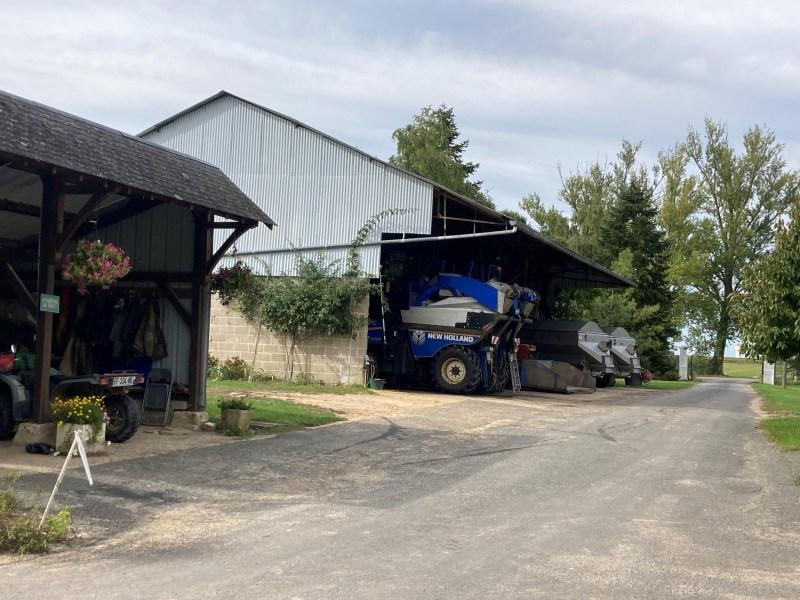
Le Petit Salvard
VdF Sauvignon Blanc 2024
Emmanuel Delaille
Cheverny Blanc AOP 2024
L’Héritière
Cheverny Blanc AOP 2023
Emmanuel Delaille
Cheverny Rouge AOP 2024







Since January 2022 Charles Lesaffre has taken over the domaine, Charles’ grandfather used to own the domaine so he is returning to his ancestral roots!
Charles vinifies nearly 30 hectares of Chenin parcelle by parcelle, carefully separating the grapes they grow on the argilo-calcaire ‘tuf’ limestone from those from the flintier slopes of the arrières côtes.
Running his vineyards en lutte raisonnée, he has grassed through the entire vineyard and raised foliage height a good 20 cm to 1.60 m to get greater ripeness at harvest (given the highdensity planting in Vouvray, this height gives a huge boost to maturity), holding yields low through a spring de-budding.
Harvesting is 90% by hand in successive tris with just the base wines for the bubbly being picked by machine Charles is steadily moving away from the traditional demi-sec style to concentrate more and more on the dry Silex, Marigny and his new cuvées, vinified either in oak or on clay amphoras. After pressing by pneumatic press and a cool settling, fermentations are at cool temperatures in CO2-inerted steel and glass-lined vats set into the rock for the dry Silex.
Using un-toasted 'white' oak chips during fermentation to boost the weight and complexity of the wines, Charles also uses a partial malo to add breadth.


Bottling for these cuvées is as early as possible - and in screw cap - so as to best retain the wines’ primary fruit aromas.
Smarter still, the single vineyard Parcélaires and the estate's beautifully balanced moelleux are fermented in various vessels - tank, oak and grès amphorae, spending the spring and summer on their lees until bottling in September.
The Cuvée Saint Jean Moelleux is a classic with 60 gms/L residual sugar, while the Cuvée Alexandre is huge… picked with a potential 21° at harvest, it has around 140 gms/L residual sugar.
Bernard Fouquet Silex
Vouvray Sec Tendre AOP
Bernard Fouquet Vouvray Brut
Vouvray Brut AOP
Bernard Fouquet St Jean
Vouvray Moelleux AOP
Aubuisières Silex
Vouvray Sec AOP
Aubuisières Le Marigny
Parcélaire Vouvray Sec AOP
Aubuisières Le Petit Clos
Parcélaire Vouvray Sec AOP
Aubuisières Le Bouchet
Parcélaire Vouvray Sec AOP
Aubuisières Gérald
Vouvray Demi-Sec AOP
Aubuisières Armelle
2023 & 2024
NV
2022
2022 & 2023
2022 & 2023
2022 & 2023
2022 & 2023
2022 & 2023
Vouvray Moelleux AOP 2022
Aubuisières Alexandre
Vouvray Moelleux AOP
Aubuisières Brut
Vouvray Brut AOP
Aubuisières Brut Zéro
Vouvray Brut AOP
2015 & 2018
NV
NV




Set just behind Vernou, on the argile à silex slopes of Vouvray, Cyril and his sister Catherine’s 37 hectare domaine dates back to their great grandparents who (as most every 'vigneron') were polycultural farmers. When their father Alain Robert founded the domaine in 1973, he started with a grand total 2 hectares of vines.
Cyril joined the estate in 2000 after studying viticulture at the excellent Amboise wine college, while Catherine studied wine business before working with the great Jacky Blot at the Domaine de la Taille aux Loups across the Loire in Montlouis. After 10 years with Jacky, Catherine re-joined the family domaine in 2013, bringing some nice ideas on how to really take the domaine and its wines a step further. Together, they officially took over the estate from papa Alain in 2014 - though it is good to see the 'retiree' still knows how to drive a tractor!
It's the attention to detail that makes this estate special: the attention they take to running the vineyard itself, working to keep the grapes healthy and to get real ripeness at harvest. It's easy to see the improvements in winemaking techniques and equipment over the last years, but it's the way Cyril and Catherine run the vines that give the wines that edge.

In the winery, they’ve got it right too: after picking by hand (for the still wines) and machine (for the sparkling), pressing is in pneumatic press. A cold settling and then fermentations in thermo-regulated stainless-steel vats or oak barrels or their new 20 hectolitre oak foudres.
The results are a fascinating cross-section of Vouvray, with the dry oakfermented Ammonite complementing the classic but precise Empreinte, with a brace of fine moelleux just to show off. The sparkling Vouvrays are models of the genre, with the non-dosé Extra Brut benefitting from 30 months sur lattes.
Certified HVE 3 (High Environmental Value), this guarantees that the agricultural practices used on the entire farm preserves the natural ecosystem and minimizes the pressure on the environment (soil, water and biodiversity).

Carpe Diem
Vouvray Demi-Sec AOP
Les Charmes

2023 & 2024 (May)
Vouvray Sec Tendre AOP 2024 (May)
Empreinte
Vouvray Sec AOP 2023 & 2024 (May)
Ammonite
Vouvray Sec AOP 2023
L'Enchanteur
Vouvray Liquoreux AOP 2015
Troglodyte Brut
Vouvray Brut AOP
Le Funambule, Blanc de Noirs
Crémant de Loire AOP
Extra Brut
Vouvray Brut AOP
Alchimiste Pétillant Naturel
Vouvray Brut Nature AOP
NV
NV
NV
NV





Set up in 1947 (just in time for the Loire's 'mythic' vintage!), our old friend Bernard Hérivault's domaine had grown to 21 hectares when he was joined by his son Arnaud, who has now imposed his own approach on the estate's vineyards and winemaking, converting to organic and biodymanic viticulture and investing heavily in thermo-regulated vats, inertage and pneumatic press.
Set on the 'arrières côtes' of the appellation - away from the river - the domaine benefits from an unusual terroir for Vouvray, with the deep limestone 'tuf' run through with layers of flint that add a crisply refreshing minerality to the ripe chenin that make the estate's wines.
In a region where too many organic producers tend to an extreme 'natural' approach, Arnaud stands out for the rigour of his vineyard management and vinifications. The vineyards are beautifully run, with nicely separated bunches keeping grapes healthy, a trait encouraged by grass planted between the rows (but ploughed beneath), spring de-budding and summer thinning as necessary. Added to an early de-leafing to keep the bunches nicely aerated, that makes for all the elements that are needed to keep organic grapes healthy in the Loire but which are too often avoided because of the cost and hard work involved.

After harvesting by hand (in successive tris) or machine depending on the parcelle and the cuvée and pressing by pneumatic press (a small 8 hl pneumatic for the moelleux), fermentations are in either thermo-regulated and CO2 inerted stainless steel vats or 500 litre casks in the cellar's impeccably maintained rock-hewn cellars.
As ever with the chenin, picking at different levels of ripeness allows the estate to make a range of wines running from a pair of sparkling Vouvrays (the flint minerality gives a great lift) through to fine moelleux and liquoreux stickies, depending on the year.

There are two dry whites - the classic, vat-fermented Sec and the Silex, from a south-facing single plot of old vines where the soil is covered with flint, giving a mineral twist that is balanced with a partial malo and by fermenting 50% in oak barriques of which 25% are new each year. The demi-sec Les Coudraies - again a single vineyard of old vines - is also part-fermented in oak, picking around 14° at harvest to leave a natural residual sugar that is in harmony with the crystallized fruit character of concentrated Chenin.
Lipizzan
Vouvray Sec AOP
Terra Loquitur
Vouvray Sec AOP
Domaine d’Orfeuilles
Vouvray Sec AOP
Silex
Vouvray Sec AOP
Les Coudraies
Vouvray Demi-Sec AOP
Hérivault
Vouvray Brut AOP
Domaine d’Orfeuilles
Vouvray Brut AOP (5-6gms dosage)
Feuilles d'Or
Vouvray Brut AOP
2022 & 2023
2022 & 2023
2021 & 2022
2022 & 2023
2020 & 2022
NV
NV
2014




Having created the domaine in 1988, Jacky Blot is now widely recognised as the greatest producer of Vouvray and Montlouis.
After Jacky’s sad passing, his son JeanPhilippe took over the reins of the estate on his own, after many years working alongside his father, supported by a close-knit and passionate team, creating precise, pure and totally dry secs.
Planted entirely with Chenin Blanc, the estate has over the years, acquired many of the finest terroirs in the Montlouis appellation, following a golden rule: to remain self-sufficient and not to buy either grapes or wine.
Among the most beautiful terroirs : 3 ha. Clos Michet, 12 ha. Clos Mosny and just over 5 ha planted on two truly exceptional sites in Vouvray which are classified as Vins de France.
Across all the terroirs, massal selections have been practiced for twenty five years ; the estate even has its own nursery to meet its needs.


Organic methods have been used from the beginning at the estate, combined with almost manically short pruning, which keeps yields down to their hoped-for target of 30 hectolitres per hectare. Picking is by hand in successive tris, with a further grape-by-grape manual sorting prior to pressing, a double selection that helps explain the concentration and purity of fruit of the estate's wines. This attention to detail continues in the rock-hewn cellar where, after a double débourbage, fermentations for all the wines are in Burgundian barriques (1000 in all, 10% new per year) at the naturally cool temperatures of the cellar. The newer oak (15% max) is almost exclusively used for the single vineyard Clos and for the old (70-80 years) vines Les Hauts de Husseau. The wines are full and complex to an almost unprecedented degree, with a fresh minerality in their youth that is intensely appetising – and (according to the great Blot himself) quite unintentional!
Rémus

Montlouis Sec AOP 2023
Clos Michet
Montlouis Sec AOP 2023
Clos du Hochet
Montlouis Sec AOP 2023
Les Hauts de Husseau
Montlouis Sec AOP 2023
Clos de Mosny
Montlouis Sec AOP 2023
Clos de la Bretonnière
Vin de France (Vouvray) 2023
Clos de Venise
Vin de France (Vouvray) 2023
Moelleux
Montlouis Moelleux AOP 2020
Cuvée des Loups
Montlouis Liquoreux AOP 2018
Brut Tradition
Montlouis Brut AOP NV
Triple Zéro
Montlouis Pétillant Naturel AOP NV
Triple Zéro Rosé
Montlouis Pétillant Naturel AOP NV
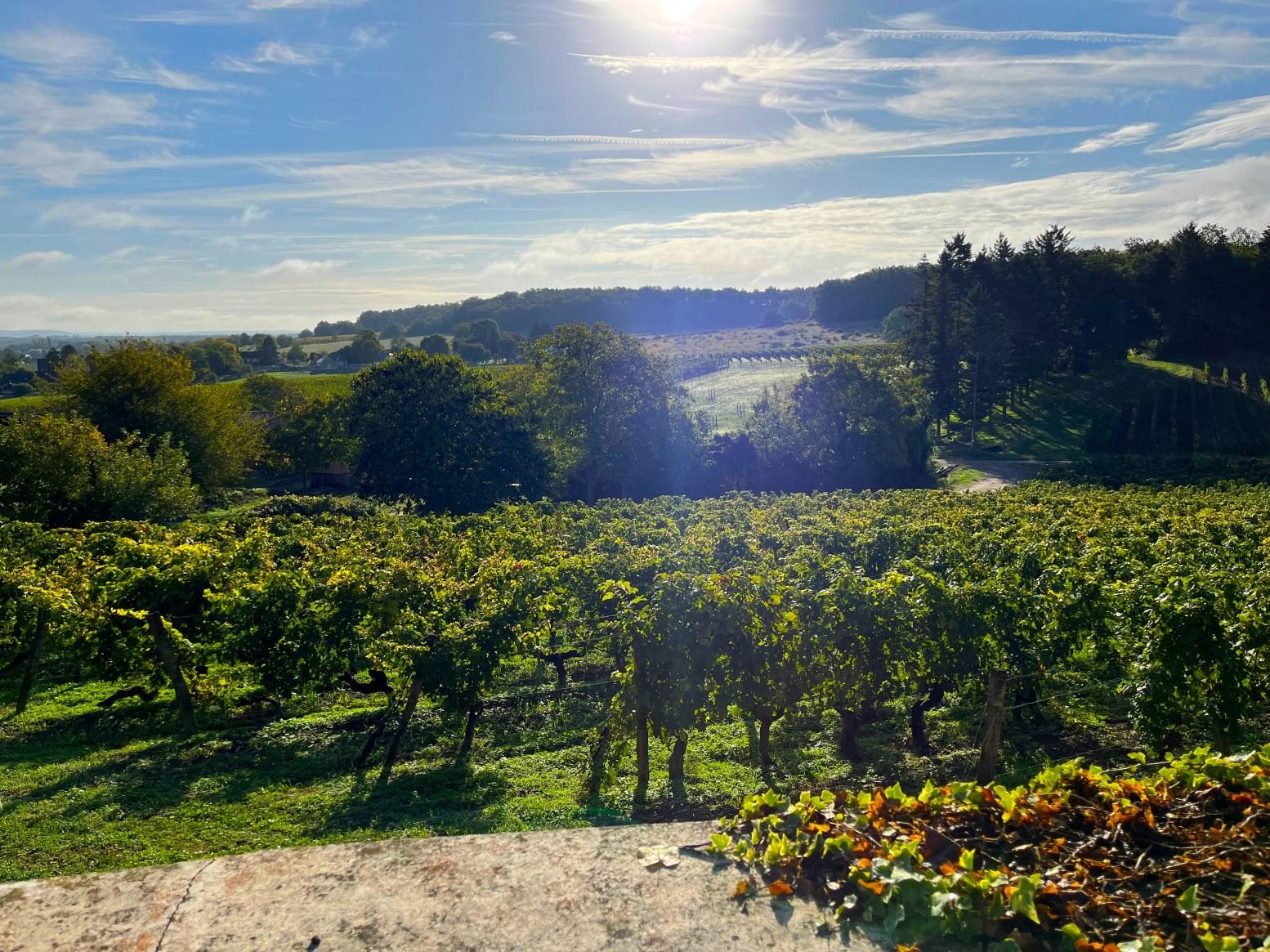








Vignerons de père en fils for 5 generations, the flagship estate of the AnjouVillages is today run by Jean-Hubert Lebreton in partnership with his father Jean-Yves. Set close to the south bank of the Loire in the small Aubance - Brissac region, the estate has 50 hectares in all, with an unusually high proportion of Cabernet Sauvignon complementing the Cabernet Franc for the ‘classic’ reds. He also has 12 hectares of Chenin … and now 3.10 ha of Malbec, (in production since 2014). The result of this real-life trial is delightful - ripe round and yet juicy with creamy soft tannins - with picking a full 3 weeks before the Cabernet Sauvignon.
With the vines planted on a mix of sand, slate and schist soils, Jean-Hubert concentrates on making reds in the prestige Anjou-Villages Brissac appellation, carefully running the vineyards to pick at full phenolic maturity. 2015 is the 15th vintage in a row not to be chaptalized. To achieve this, he has grassed the vineyards through and de-buds and de-leafs the vines where necessary to be sure to get healthy, ripe grapes. The estate was certified organic from the 2015 vintage.
After picking by machine with a built in 'tri' and with a final hand selection at reception, fermentations are in a series of concrete, stainless steel or enamelled steel thermo-regulated vats, with a couple of ‘egg’ vats complementing the oak for the hugely ripe ‘Millerits’ cuvée.
Guided by consultant Didier Coutenceau, vinifications have evolved quite dramatically so as to make increasingly fruit-driven wines, making this the uncontested star producer of red Anjou. Changes include thermovinification techniques on certain cuvées, long, gentle ‘chapeau immergé’ macerations, micro-oxygenation, a refusal to ‘bleed’ the reds to make rosé and, equally importantly, a refusal to blend the press wines back into his cuvées.

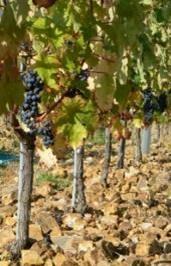
The easy-going and juicy Ardoise is made from super-ripe Cab Franc grapes vinified in the main with thermo-vinification to emphasise its immediate pure-fruit character. The 80% Cab Franc Breton has huge ripeness and natural sweetness on the palate, while the Croix de la Mission and the Millerits (with malo and 12 months’ maturation in oak) are effectively pure Cabernet Sauvignon. The Croix de la Mission has star status in the region, showing huge fruit and silky-soft tannins.
As for the whites, the barrel-fermented Chenin Roche des Rochelles is beautifully pure and intense – traits also found in the different cuvees of Coteaux de l’Aubance moelleux, with the delightfully balanced and yet intense Ambre a 50/50 botrytis-passerillage cuvée from slate.
L’Ardoise
Anjou rouge AOP 2023 & 2024
Breton
Anjou-Villages Brissac AOP 2022
La Croix de la Mission
Anjou-Villages Brissac AOP 2022 & 2023
Les Millerits
Anjou-Villages Brissac AOP 2020
Les Rochelles
Coteaux de L’Aubance AOP 2023 & 2024
Ambré 50cl
Coteaux de L’Aubance AOP 2020 & 2022
Rosé de Loire AOP 2024
Roche des Rochelles
Anjou Blanc AOP 2022
Sauvignon Blanc IGP Loire 2024
Chenin Blanc IGP Loire 2024
Malbec
IGP Loire 2023
Crémant de Loire AOP NV




Set in the ancient winemaking village of Varrains with its tuf houses surrounded by vines, Didier & Céline Sanzay's estate dates back to 1880. Didier represents the 5th generation to run the estate and son Ludovic has also studied viticulture.
Today the domaine has 28 hectares of vines that include 25 of Cabernet Franc and a few hectares of Chenin to go to his dry and sparkling and whites.
The vines are planted predominantly on the 'tuf' limestone in Varrains and the surrounding communes, with one hectare on the prime lieu dit Les Poyeux, where the sand topsoil adds a layer of soft fruit to the wine. Following the sustainable rules of lutte raisonnée, Didier practices organic farming, grassing-through the vines that he then ploughs under the row. Yields are severely restricted to concentrate the fruit.
Running the vineyards for full maturity, the Cabernet Franc grapes are machine harvested. Using natural yeasts, the grapes are then gently macerated for up to 21 days (more or less depending on origin and vintage) in thermo-regulated vats, with the avowed aim of making reds to be enjoyed young.

The Les Dares cuvée - from a tiny single plot of vines planted in 1963 - is left to macerate longer than the other cuvées and is then let to age 18 months in barrique before being bottled.
The cuvée "Vieilles Vignes " comes from several plots of vines that are more than 50 years old, the grapes macerate for one month and the wine is aged for one year in cellars in old barrels.
Since 2016 all the vineyards began conversation to Organic viticulture, which is now complete.


Just outside Saumur, the Domaine la Bonnelière is located in the town of Varrains, in the heart of the Saumur - Champigny appellation.


Coming from a large family of winegrowers, it was in 1972 that André Bonneau and his wife decided to create the Domaine la Bonnelière in the premises of the former Caveau Saint-Vincent.
Today, Anthony and Cédric Bonneau have been running the estate since 2000 and they represent the fifth generation of Bonneau family winegrowers.
The Domaine la Bonnelière covers an area of 42 hectares on the Varrains terroir. The terroir of this major Loire Valley appellation is located on predominantly clay-limestone soil with a tufa subsoil. The particularity of this type of soil, like a sponge, is that it absorbs excess precipitation in winter and gradually returns it to the vines over the summer.
The Varrains sector of the Saumur-Champigny appellation also benefits from a microclimate, created by its geographical location in a triangle formed by the Loire, its tributary the Thouet and the forest of Fontevraud. Six meters underground, the cellar dug into the tufa is not only the place where wines are aged in barrels but also the place of a pretty statuette of St Vincent de Varrains-Chacé (the Patron Saint of Winegrowers) and many other unusual objects and collections.
Most of the vinification takes place in the cellar in temperature-controlled vats and some cuvées are aged in French oak barrels in the underground cellar.

At La Bonnelière, the wines are made from the two main grape varieties of the Saumur appellation : Cabernet Franc and Chenin. With 2 other complementary grape varieties: Cabernet Sauvignon and Pineau d’Aunis.
To produce this wide range of wines, the Domaine combines tradition and modernity while respecting the environment. The Bonneau family has obtained HVE certification, level 3, since 2020 and works the soil to naturally promote good vine growth. Their ethos is one of minimal intervention both in the vineyards and in the cellars.
The Domaine strives to produce wines which characterize the different terroirs and each cuvée is vinified separately to maximise the expression of each vineyard plot.






Presented ‘for services rendered’ to the family in 1655 by Louis XIV, the Château de Targé has been the home of a good dozen ministers and is now in the capable hands of Paul Pisani-Ferry, 35, who has explored the vineyards of the USA, Argentina, Chile and South Africa before coming back to join his father Edouard and prepare a new future for Château de Targé.
Paul started by passing the whole estate to organic production as soon as he arrived in 2017 and lowered the yields by 20% to increase the Cabernet Franc's maturity and produce ripe and juicy red wines. He immediately developed new cuvées alongside his father's, in order to explore the insane aromatic expressions of chenin and Cabernet Franc. Paul has made enormous improvements in the vineyards and in the cellar, resulting in increasingly fruit-rich and enjoyable wines.
The château’s vineyards are planted on the deep limestone tuf plateau that overlooks the Loire just east of Saumur itself. They include 5 hectares of Cabernet Franc and 7 of Chenin Blanc. Now, new experiments are taking place in the vineyard, with the planting of varietals from other areas. Pinot Noir, Grolleau Noir, Côt (local name for Malbec), Savagnin and Gamay are being tested on the plateau, and should soon produce original wines, preparing new perspectives for this region.
Global warming has meant the family is reacting by preparing the vineyard to sustain more extreme temperatures. New plantations are made in "Agroforesterie", the concept of planting vines and trees together on the same plots to sustain biodiversity and to make use of the partial shade that the trees provide during the day. The vineyard is now 100% grassed through, there is no use of chemical fertilizers or herbicides, and the vines are worked with the great care.
In the chai, temperature control and a few light remontages are the main tools Paul uses in order to craft his wines, and very little else. A serious drive to reduce extraction has helped boost the quality, finesse and fruit at this estate, and the wines are getting recognition by the press and public alike. Paul kept most of his father's range, which includes the Château's bestseller 'Château de Targé Tradition' and 'Cuvée Ferry', both fruity reds with a light fresh finish on the Tradition and a more intense structure on the Cuvée Ferry.
The cream of the reds is undoubtably the single vineyards ‘Clos du Moulin’ and 'Le Gory', brainchild of friend and one-time employee Pierre Saillan (the only vigneron to be awarded 100/100 by Robert Parker 16 times). With huge, ripe fruit and the natural sucrosité that comes with full phenolic maturity, the wines undergo a 6-day long cold maceration before finishing its alcoholic fermentation and malo in 400 litre barrels where it remains for up to 18 months.
The other star is the intense and pure oak-fermented dry white ‘Les Fresnettes’. This is one of the very finest examples of the new-style barrel-fermented Chenins that the Loire has started to produce - and father and son really know how to make Chenin sing. New cuvées are in the modern style of fruity and fresh red wines with ripe and explosive aromas assorted to an aerial mouth, which Paul developed. two different aspects in 'Les Cerisiers' and 'Clos Saint Père'. Sparkling wines are available with a Méthode Traditionnelle kept 3 years on lees for the white, and a lively and plum Méthode Ancestrale for the rosé.
Le Pavillon
Saumur Champigny AOP
Clos St Père
Saumur Champigny AOP
Chateau de Targé
Saumur Champigny AOP
Cuvée Ferry

2020
2022 & 2023
2020
Saumur Champigny AOP 2019
Clos du Moulin
Saumur Champigny AOP 2020
Le Gory
Saumur Champigny AOP
Le Chenin de Targé
Saumur Blanc AOP
Les Fresnettes
2019 & 2020
2023 & 2024
Saumur Blanc AOP 2021
Rosé de Targé
Saumur Blanc AOP
Saumur Brut Rosé AOP
Saumur Extra Brut Blanc AOP
2023 & 2024
2022 & 2023
2019 & 2020




Since taking over the family château and vineyards back in 1987, Philippe Vatan has used skills learnt in the family’s orchards to get the healthiest fruit possibleand is arguably the instigator of the radical changes in vineyard management seen in the Loire over the last 10-15 years.
His search for genuine ripeness has turned the estate into what is perhaps the finest source of pure, fruit-driven Cabernet Franc in the entire Loire Valley. He’s now easing his way gently into partial retirement with two of his loyal employees taking on the day-to-day running of the domaine with Philippe always on hand when needed and at harvest time of course!!
The château's vineyards (Cabernet Franc with just 1.6 ha of Chenin) are planted on the deep limestone tufa plateau and on the cliff top overlooking the Loire, a site that combines great terroir with a remarkably favourable microclimate.
The particularly high natural ripeness of fruit in their wines is achieved by using all the tricks of intelligent vineyard management with soil management being determined by the different parcelles and the climatic conditions of the vintage. In warmer years de-budding and particularly high foliage is employed throughout the vineyards, all with the declared aim of avoiding stressing out the vines through excessively low yields. The estate is now 100% organic.
At harvest, Philippe and Yann assess the perfect level of maturity parcel by parcel. After destemming, the grapes are put into stainless steel tanks in the tuffeau cellars beneath the vineyards. Macerations involve minimum intervention using the Vinifair system which provides the optimal contact between juice and grape skins, extracting ripe, supple tannins rather than green, bitter ones.

The white Chenin grapes are pressed immediately on arrival at the winery and are then transferred immediately to a combination of 500 and 600 litre demi-muids where they are fermented to dry to ensure not even a trace of residual sugar remains. This results in wines packed with finesse and elegance.
Full phenolic maturity at harvest, a careful maceration using his patented Vinifair system to keep the juice in contact with the skins with no pumping or pigeage gives the reds great purity of fruit, offering wonderfully balanced, soft tannins… and great wine to enjoy young or mature.

Tuffe
Saumur Champigny AOP
Les Fevettes
Saumur Champigny AOP
Lisagathe
Saumur Champigny AOP
Argile
Saumur Blanc AOP
& 2023


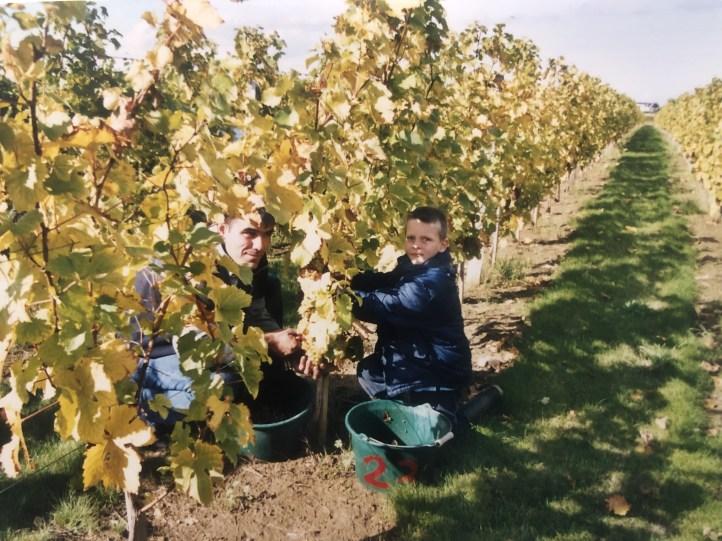

Le Clos de L'Écotard is a 15-hectare family wine estate. Created by Michel Chevré in 2007, the passion for wine has been passed down from father to son. Thibaud, the youngest of the siblings, who arrived on the estate in 2017, completely took over the reins of the property in December 2023. The father-son duo continues to work together on the estate accompanied by Guillaume, their right-hand man. Since 2009, the estate has been fully certified in organic farming. Biodynamic farming techniques are also used and are in the process of being certified. Their objective is to always be as close as possible to nature and to obtain a real ecosystem on each plot. The planting density is high, with 8,000 vines per hectare on most plots. Of the 15 hectares of vines, 4 are worked with horses for arduous tasks such as ridging, digging and scratching.
The planted Chenin Blanc vines are the result of massal selection, supplemented by a selection of clones from different nurserymen. The other grape varieties worked are Cabernet Franc, Grolleau Gris, Grolleau Noir, Sauvignon Blanc, Gamay and Chardonnay. The estate produces four white wines from Saumur (Chenin), two reds from Saumur (Cabernet Franc), one Gamay and two Saumur Brut (one 100% Chenin – Les Quarts Saint Vincent, and the other Saumur
Brut – a blend of Chenin, Cabernet Franc and Grolleau Gris), as well as a Coteaux de Saumur (Chenin).
Fermentation begins in stainless steel vats, then the juices are transferred to a selection of oak barrels and a stoneware jar.


Only 10% of the barrels are made of new oak, from various cooperages. The Clos de l'Écotard produces four slender Chenin Blancs, rich in ripe fruit aromas, with real complexity and finesse. These are La Haie Nardin, Les Pentes, Clos de l'Écotard and Le Clos de la Huberdière (new wine from plots added in 2023). These wines are already recognized as among the best dry whites of the Saumur appellation. Haie Nardin was planted in 1967 on a specific terroir of 0.70 hectares on sandy soils. The wine is fermented and aged in a mixture of stainless steel, barrels and stoneware jars.
Les Pentes is a very small cuvée of only 25 hectolitres, made from Chenin on limestone soils, at the top of the Écotard slope. Since the 2021 vintage, Les Pentes spends 2 years in barrels, compared to 1 year previously.

The Clos de l'Écotard is the main cuvée, with vines planted on soils rich in limestone and clay.
The Clos de la Huberdière is a 1.9 hectare plot on clay and limestone, facing north, fermented and aged in oak barrels. These three wines can be kept for a long time in the cellar, where their complexity and elegance will develop further.
Clos de la Huberdière
Saumur Blanc Sec AOP 2023
La Haie Nardin
Saumur Blanc Sec AOP 2022
Clos de l’Ecotard
Saumur Blanc Sec AOP 2022
Les Pentes
Saumur Blanc Sec AOP 2021 & 2022
Saumur Brut
Saumur Brut AOP 2022
Les Quarts St Vincent
Saumur Brut AOP 2018
Clos de l’Ecotard
Saumur Rouge AOP 2022




Jérôme and his wife Elodie have been running the estate since 2003. Jérôme studied oenology in Dijon, worked at the Château Pétrus and the Dominus Estate in Napa for a year before heading on to the Sacred Hill Winery estate, New Zealand.
Consisting of beautiful plateaus and clay/chalk hillsides, the vineyard shelters 20 hectares of cabernet franc and 6 of chenin, the only varieties permitted in Chinon AOC.
To improve the vineyard management and adapting to global warming they have replaced the grass cover between the rows of vines with a mulching-covercropgrazing rotation system. This technique allows the vine to adapt to the availability of water and nutrients provided each season, which is vital given the sudden changes in weather.
The manual harvest allows them to identify the most phenolic maturity of each of their vintages. Gravity cellaring ensures that the grapes aren’t damaged and that oxidation is avoided. When harvesting the reds, picking earlier from the higher-yielding ends of the individual plots, is a trick that allows Jérôme keep the rosés nice and fresh whilst reinforcing the ripeness and concentration of the reds. These are selected and vinified by terroir, with the main parcelles kept firmly separate under the old ‘cadastral’ vineyard names, with the Blancs Manteaux referring to the Knights Templar.

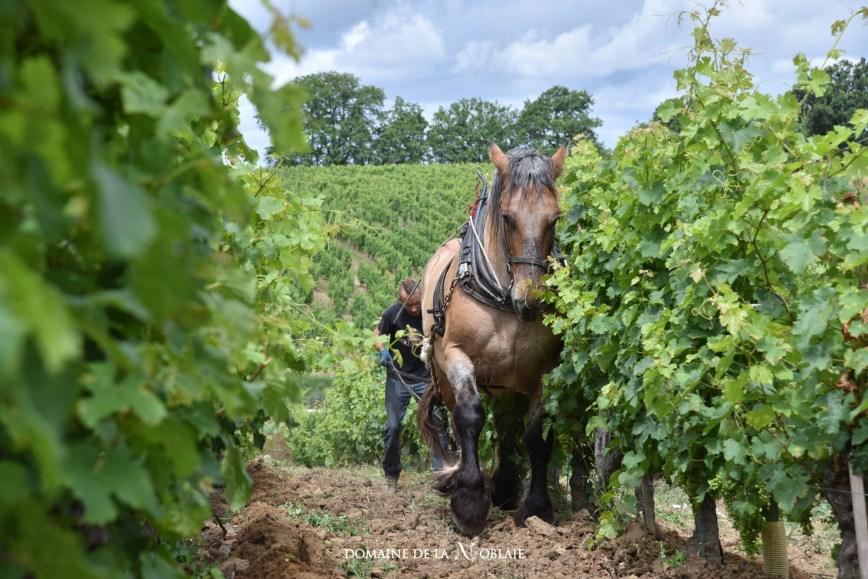
After fermentation with mainly natural yeasts and minimum sulphur in stainless steel vats –except for the Pierre de Tuf mcuvée, which is fermented in the cellar’s original ‘tuf’ stone vat – maturation for the Chiens Chiens, the Blancs Manteaux and Pierre de Tuf is in oak double-barriques in the estate’s 15th century vaulted cellar. The ‘domaine’ cuvée “Le Temps des Cerises” is soft and ripe, with a cold maceration and fermentation'chapeau immergé' to avoid excessive extraction.

The results are impressive. Recent years have seen Jérôme’s wines gain in precision and fruit - proof that in capable hands, Cabernet Franc can ripen happily in the Loire Valley, giving rich, concentrated and complex wines.
Le Temps des Cerises
Chinon AOP 2023 & 2024
Les Chiens Chiens
Chinon AOP 2022
Les Blancs Manteaux Vieilles Vignes
Chinon AOP 2022
Pierre de Tuf
Chinon AOP 2022
Goutte de rosé
Chinon Rosé AOP 2024
Chante le Vent
Chinon Blanc AOP 2023
La Part des Anges
Chinon Blanc AOP 2022
Monange Brut Nature Rosé
Vin de France NV



More than ably run under the direction of Anne-Charlotte Genet, Chinon’s most celebrated domaine now has 36 hectares of Cabernet Franc and 3 hectares of Chenin Blanc. With a committed move to organic vineyard management methods, the domaine continues to go from strength to strength as the team moves away from the belief that quality comes with mere concentration to search for an intensity and elegance of fully ripe fruit.
The estate produces a stunning range of single-vineyard cuvées, each reflecting the particularity of its terroir and the age of the vines – over 80 years for the Dioterie.
On the left (southern) bank of the river, the Petites Roches, Varennes and Dioterie are planted on gentle limestone tuf slopes. These are complemented by a fine parcelle on deep sand near the confluence of the Vienne and Loire rivers – the origin of the fresh and juicy Silènes. The star Clos du Chêne Vert is on the steep south-east facing limestone slopes of Chinon itself.
With all the vineyards now grassed-through, yields are held low and the quality and ripeness of the harvest is assured by a long, relatively late pruning followed by a spring de-budding, a summer de-leafing and a further thinning in August. Harvesting is by hand in caisses to ensure purity of fruit and minimum oxidation and the domaine’s willingness to selectively tri the grapes at harvest is primordial in its search for the greatest expression of fruit in the different wines… an expression that is further emphasised through the single-vineyard clos being bottled unfiltered.

In the winery, after a cold maceration, fermentations are in thermoregulated stainless-steel vats which have been inerted to protect the juice from oxidation. While the Silènes is tank-fermented and aged, the Cure does its malo in oak barriques before maturing in oak vats for a year before bottling.
Maturation in oak is an essential part of the more intense cuvées and the new Charmes cuvée from old vines in the village of Anché (the plot is named after the local hornbeam trees) ferments in oak vats.
The stars have always been the hugely ripe and balanced Varennes, Chêne Vert and the wine from the ancient vines of La Dioterie. Microoxygenation and careful barrel-ageing keep tannins soft behind the intensity and structure of these cuvées, arguably amongst the finest reds of the Loire
Les Silènes
Chinon AOP 2022 2021
Les Petites Roches
Chinon AOP 2022 2021 2020
La Cure
Chinon AOP 2022 2021
Les Charmes
Chinon AOP 2022 2021 2020 2019
Les Varennes du Grand Clos
Chinon AOP 2021 2020 2019 2018
Clos du Chêne Vert
Chinon AOP 2021 2020 2019 2018
Clos de la Dioterie
Chinon AOP 2021 2020 2019
Les Petites Roches Blanc
Chinon AOP 2024 2023
Les Charmes Blanc
Chinon AOP 2022 2021



Gérald took over the family estate in 1994 and has since turned it into one of the region’s most highly reputed producers of fine, ripe reds. Today this 27 hectare estate is 100% organic and makes some of the most succulent reds of the Loire.
The secret lies in impeccable work in the vineyards, a careful use of oakand in a choice of fine terroirs.
One of the first estates to really understand the importance of careful vineyard management, Gérald’s vines are all grassed through, ploughed just under the vines themselves, all with nicely raised leaf-height to ensure the grapes get every chance to reach full phenolic maturity while retaining that fresh edge that is the hallmark of fine Loire Cab Franc.
Picking by hand at full ripeness with a team of up to 50 pickers, Gérald uses an optical tri to eliminate any unripe berries, taking the pickers’ selection one step further. After de-stemming, the wines ferment in rows of 35 hectolitre oak vats in the domaine’s new winery, using gentle maceration to avoid any excessive extraction.
The Domaine cuvée is from the sand and gravel ‘terraces’ around the village of St Nicolas. After fermentation and a 10-12 day maceration, it matures in oak vat for 3 months before bottling in the early spring.


Le Vau Jaumier is planted on south-facing argilo-calcaire ‘tuf’ and is generally the last parcelle to be harvested. De-stemmed 100%, fermentations are in thermo-regulated oak vats with a 20 day maceration. This matures in oak barriques for 6 months before being bottled unfiltered.
L’Envolée is from 75 year old vines planted on gravel slopes, giving low yields of around 35 hectolitres / hectare. Destemmed 100%, after fermentation and a 25 day maceration, it does its malo in barriques and matures in barriques for 1 year before being bottled unfiltered.
Domaine de la Cotelleraie
St Nicolas de Bourgueil AOP 2023
Pigeur Fou
St Nicolas de Bourgueil AOP 2023
Les Perruches
St Nicolas de Bourgueil AOP 2023
Le Vau Jaumier
St Nicolas de Bourgueil AOP
L’Envolée
St Nicolas de Bourgueil AOP
2022
2022




After 20 years working at the cutting edge of the Chenin Blancs of Vouvray and Montlouis, Jacky Blot took over this prime 16 hectare vineyard and its cathedral-esque cellars in 2002, and used the years to put the vineyard into the sort of condition he really likes - healthy vines having to work hard to produce masochistically small yields of beautifully ripe grapes.
After Jacky’s sad passing, his son JeanPhilippe took over the reins of the estate on his own. After many years working alongside his father, supported by a closeknit and passionate team.
Running the south-facing slopes of the Domaine de la Butte very much the same exacting way as the Chenin vineyards, applying a Burgundian approach to the vineyard, separating the plots by geological strata as they go up the hill. This effectively creates his own cru system as he picks, ferments and matures each cuvée according to its position on the slope and the age of the vines.
Picking is by hand and - as in Montlouis - he does a manual tri at the end of each row, something we've not seen elsewhere. This is followed by a further automatic tri as the grapes are de-stemmed.
Once in the vat, there is virtually no extraction and fermentations are in epoxy-lined cement vat or open oak foudres, with maturation and malo in either foudres, with maturation and malo in either fodres or barriques depending on the cuvée.
The wines are gorgeous: big, intense wines with the cab franc’s natural freshness balanced with that natural sucrosité that comes from picking at full phenolic maturity. Yields are so low that they produce a velvety, generous texture.
It is worth noting that the top 3 cuvées, the Perrières, the Haut de la Butte (fermented in oak vats and with 50% matured in barriques) and the grand Mi-Pente (fermented in oak vats and matured in new and one year old barriques) represent between them around 80% of the estate’s production, leaving just 20% for the so-called ‘base’ cuvées.
There are definitely no half-measures here!
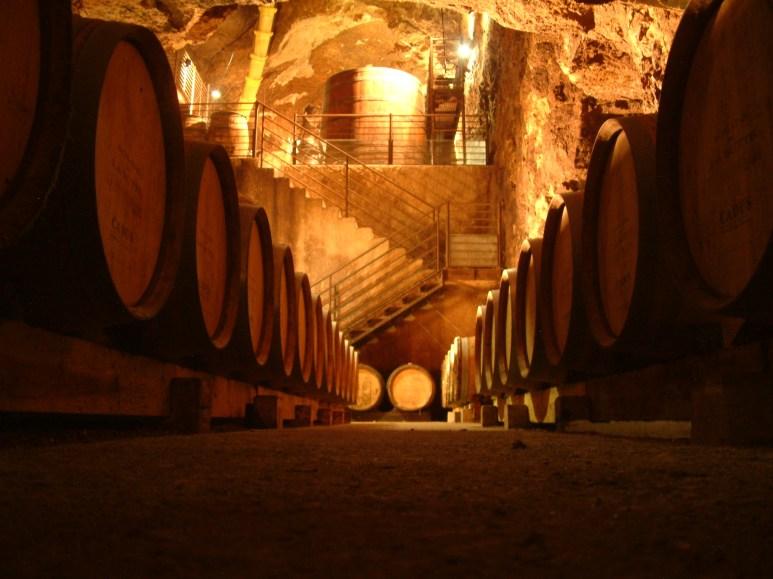

Le Pied de la Butte
Bourgueil AOP 2023
Les Côteaux du Levant
Bourgueil AOP 2023
Le Haut de la Butte
Bourgueil AOP 2023
Mi-Pente
Bourgueil AOP 2022
(Images courtesy of Kevin Rabillier)








Set up just after the war, the Cave des Moulins à Vent has taken on a new and dynamic lease of life under the direction of Christophe Denoël and oenologist François Poirier, and is today producing Pouilly Fumés of a quality to match the finest independent domaines.
When he took over the cave, Christophe’s first priority was to get ISO and BRC certification, a move requiring considerable improvements in traceability and in management – and a great opportunity to put the Cave right back on a quality-orientated mode.
Having substantially improved work in the winery, with major investment in a screwcap bottling line, in 2015 they extended the whole building by a massive 40%, gaining bottling and storage facilities and increasing vinification capacity from 5,000 to 7,000 hectolitres, a reflection of the quality and success that the team are now achieving.
Not satisfied with 'just' improving things in the winery, Christophe has recently been concentrating on the vineyards, aiming to precisely identify soil-types so as to better vinify the appellation’s main terroirs. On a technical level, and with François’ aid, there have been equally dramatic improvements in selection of juice at the grower’s door and of vinification's in the thermo-regulated stainless-steel vats of the Cave’s spotless winery. 100
Unusually for the Loire, the Cave relies on its grower-members to press their own grapes, supplying the Cave with juice from selected plots equivalent to over 100 hectares, about 10% of the appellation.
After a cold settling, the juice is then fermented by terroir (and in some cases by domaine), with wines from sand, chalk, marne and flint being vinified separately, with a small percentage from the finer vineyards and older vines being fermented and matured in oak barriques.

The results are classically fresh and delicious.
Coteaux de Giennois AOP 2023 2024
La Bergerie
Pouilly Fumé AOP 2023 & 2024
Domaine Eric Crochet
Pouilly Fumé AOP
Vieilles Vignes / Silex
2023 & 2024
Pouilly Fumé AOP 2022
Tonelum
Pouilly Fumé AOP
Old Vines Silex (20-30% vinifié en fût)
Poirier Fou
Pouilly Fumé AOP
2022
2022 & 2023



This 16-hectare domaine is set in le Bouchot, commune of St Andelain, with its winery surrounded by vines on the slopes coming out of Pouilly. A little Chasselas complements the Sauvignon blanc and the vines are split 2/3rds on the argilo-calcaire at Le Bouchot with the rest planted on the marne at St Andelain and the sandier soils around Pouilly itself.
Although very much a family affair, co-owned by her brother, the driving force is unquestionably Katia Mauroy-Gauliez, a qualified ingénieur agronome – oenologue, joined now also by her daughter Alexandra Gauliez.
This estate has shown an increasingly professional approach since Katia has fully taken on the direction of the winemaking. The winery, built in 2002, is a model of its genre, with its thermo-regulated stainless-steel vats and pneumatic presses.
The improvements still continue, with recent investments being in a new Bücher pneumatic press, a new bottling line and transforming the epoxy into stainless-steel on all her underground vats. invested in a nitrogen generator, to reduce dissolved oxygen and therefore SO2 doses required.


In the vineyards, the great majority of the vines have now been grassed through but in response to the droughts and heatwaves have greatly reduced the grass cover which has become too competitive on certain plots. And what remains grassy is no longer mowed, but crushed (Rolofaca tool) to prevent regrowth.
Spring de-budding is now the norm and pruning and de-leafing methods have also been adapted to protect the grapes from extreme heat and sunshine. Additionally, further changes are being made to combat climate change and they have recently made large investments in frost protection.
The resulting harvests have produced perfectly balanced grapes exhibiting both maturity and freshness - a ripeness demonstrated by the fact that Katia has only had to chaptalise once in the last 12 years. The wines are elegant, mineral and aromatic, nicely precise and complex Pouillys that offer high quality at keen prices.
The domaine has been certified as a high environmental value level 3 (HVE3) since the 2019 harvest.
Les Papillons
Pouilly Fumé AOP
Riquette Pouilly Fumé AOP
Les Acoins
Pouilly Fumé AOP
2023 & 2024
2023 & 2024
2022 & 2023

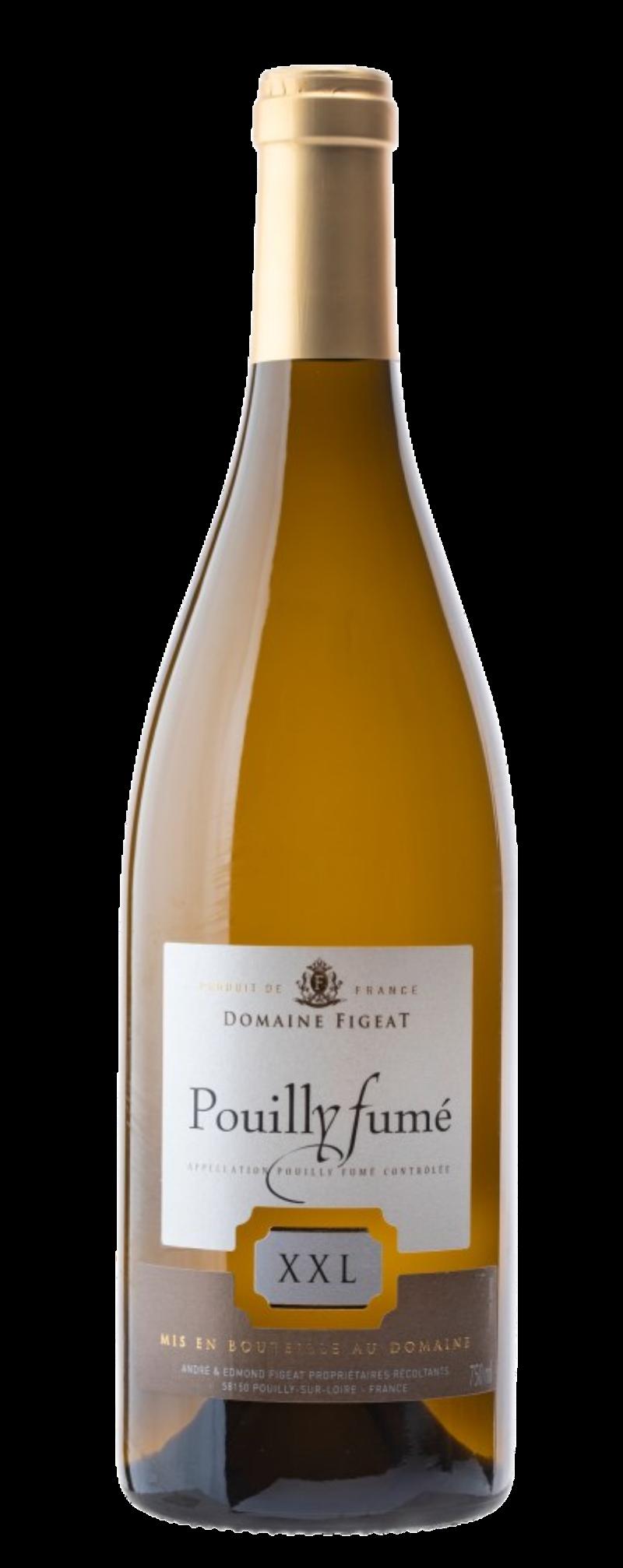

Amongst the oldest families of vignerons in Pouilly, the Figeats have handed down the estate from père en fils for longer than anyone would care to remember and the old Roman road running among the vines immediately behind the winery gives some indication of just how ancient the vineyards really are.
Today, having studied viticulture at Beaune and after having worked in surprising harmony with his now retired father Edmond, André produces a range of full, flavoursome Sauvignons from just over 17 hectares of vineyards - now 100% Sauvignon Blanc since he finally ripped up the remaining Chasselas.
Since 2019, André’s daughter Anne-Sophie has taken on the day to day running of the domaine. Trained as a pharmacist, she is well-placed to oversee the vinifications and the results of her first full harvests are most impressive. André remains at her side to offer advice and assistance in all areas.
With their completely re-built chai, the use of dry ice to inert specially-built trailers as well as press and vats so as to avoid any oxidation of the juice, the Figeats have shed their old world image of the ‘traditional’ producer to underline the continuing professionalism of an estate remarkable for its genuine oldfashioned warmth.


The vineyards are split between Pouilly itself, the flintier soils of St Andelain and the steeper calcaire slopes that run down to the river by Les Loges
Working hard in the vineyards to control the vigour of the vines, AnneSophie keeps yields low by using partial enherbement and a summer crop-thinning whenever necessary to get fully ripe, healthy grapes.
It also has to be said that the Figeats are often bemused at the hurry the average local seems to be in to harvest.
In the winery, after a gentle pressing by pneumatic press and a cold débourbage, fermentations are in thermo-regulated stainless-steel vats. The wines from the different plots are vinified apart, with some macération pelliculaire for the aptly-named XXL before being left to mature on their lees until being bottled separately or assembled according to the style of the vintage.
The final wines show the concentration that comes with low yields of ripe grapes, the aromas of Sauvignon at its peak and an extra gras that comes from careful use of skin contact.





Founded in 1620, this estate is now in the safe hands of 12th generation brothers, Fabrice and Vincent Grebetalthough their father Gérard always keeps a close eye on business.
Located in the pretty vignerons’ village of Les Loges, Domaine des Rabichattes now has 23 hectares of vines planted on a mixture of chalk, clay and flint soils.
The brothers acquired 3 hectares of vines in the IGP Côtes de la Charité, which is a historic vineyard discovered by the monks of the Abbey Cluny in the 11th century.
The Grebets have 1.5 hectares each of Chardonnay and Pinot Noir in La Charité so we are closely following the progress of this latest project!
In Pouilly, with their vineyards planted on three distinctly different terroirs, the Grebets understood they they obtained the best results by vinifying these separately thereby producing three different main vintages.


They have their limestone vineyards on the plateau above the hamlet "Les Girarmes", the marne soils between SaintAndelain and Les Loges and then the clay and flint terroirs near the commune of Puisac. The wines are traditionally fermented at low temperatures without the use of aromatic yeasts in order to preserve the true expression of the terroir. Once fermentation is complete, the wines are aged on fine lees for 5 months before bottling in order to enhance the elegance and structure of the wines. The estate was certified in 2023 in organic viticulture, without pesticides or herbicides since 2011.




Domaine Corty Moreux spans three centuries of history. The origins of the Domaine date back to 1677 when Edme Corty laid the foundations of a small Domaine in Pouilly. André Moreux bought his first vines in 1702, but on the other side of the Loire, in Sancerre. These two appellations of Sauvignon Blanc were united in 1955 by the marriage of Jeannine Corty and Raymond Moreaux, direct descendants of Edme and André. Today sons Arnaud and Julien Moreux run the estates. The domaines include 30 hectares of vines in Pouilly-Fumé and 6hectaresinSancerre, around the villages ofCrézancy and Chavignol.
Vineyard management, which is both sustainable and respectful of nature, is their passion. This philosophy means limiting intervention in the vineyard, reinforcing their understanding of the terroir. Treatments are kept to the minimum, (no chemical fertilisers; ploughing the soils several times a year), which allows them to maximise the plants’ physiology and its natural resilience.
Voluntarily pruning short, the vines are manually de-budded, whilst observing and respecting the flow of the sap, in order to obtain the optimum durability of the vines and thus a higher concentration of grapes. The yields average between 35 and 55 hl/ha depending on the vineyard site and cuvée.
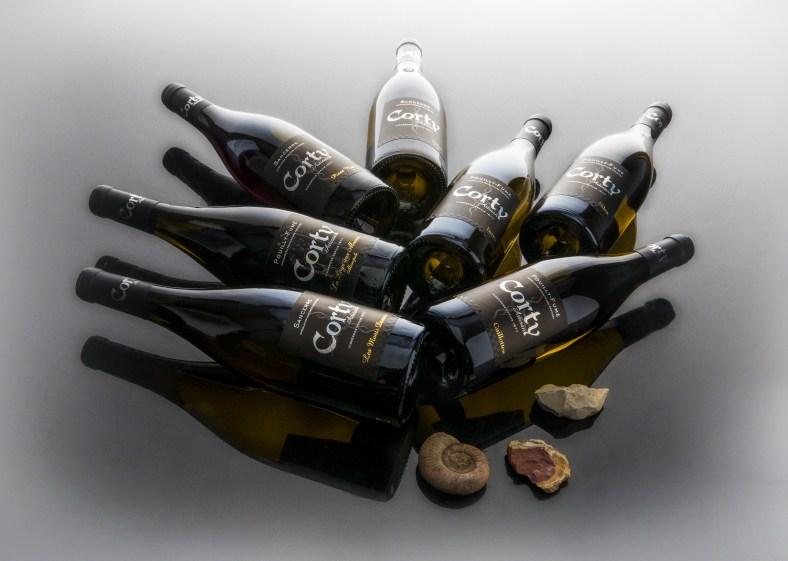
The brothers work by combining ancestral knowledge with modern techniques and always using restraint. Modern equipment and processes such as a pneumatic press, thermo-regulated tanks in the cellars and the addition of oxygen at various stages of the vinification are balanced with older methods by vinifying on fine lees and only allowing spontaneous fermentations using indigenous yeasts.

Additionally, all stages of vinification are carried out following the lunar cycle. Each parcel is vinified separately, in thermo-regulated stainless steel tanks, producing long and slow natural ferments at low temperatures. This allows the wines to preserve their unique character, and fully express each individual terroir.
Corty Artisan Chasselas
Pouilly sur Loire AOP 2023
Corty Artisan Intro
Pouilly Fumé AOP 2023
Corty Artisan Silex
Pouilly Fumé AOP 2022
Corty Artisan Caillottes
Pouilly Fumé AOP 2022
Corty Artisan La Loge aux Moines
Pouilly Fumé AOP 2022
Corty Artisan Les Terrasses
Pouilly Fumé AOP 2022





Domaine MARCHAND ET FILS was established in 1650 in the vineyards of Pouilly Fumé. In 2012, Clément, the son from the current generation took over. Having worked for several years in various prestigious French and foreign vineyards, Clément was perfectly qualified to surround himself with the best advisers to relaunch his family estate.
Located in the vineyard village of “Les Loges”, on the steepest hillsides overlooking the Loire, the vineyard consists of the best terroirs of the appellation Pouilly Fumé: limestone, Kimmeridgien marl, argilo-calacaire and sand, which enable Clément to make cuvées of the finest quality.
The estate is not certified organic, but Clément has stopped using chemical fertilisers and weed killers and limits the use synthetic pesticides, preferring instead to allow nature to work its magic.
Harvesting most of his vines by machine, Clément picks the wines for the K cuvées by hand. Pressing gently in a CO2inerted pneumatic press, the vinifications take place terroir by terroir in stainless steel thermo-regulated tanks.

The cuvée’s Les Kerots, Prestige, Kalcaire and Kimmeridgian are vinified and aged in 400-litre oak barrels.
Maturation takes place on fine lees with regular batonnage throughout the winter. The cuvées are classic for the appellation, expressing their round and mineral terroir with great potential for ageing.
The wines are refined yet expressive with decent concentration and fruit for the Kerots and Prestige cuvées, whilst the two terroir cuvées have wonderful precision and minerality, although production is extremely limited - please contact us if of interest.

Les Kérots
Pouilly Fumé AOP
Prestige
Pouilly Fumé AOP

2023
2023





Since Didier’s death in a flying accident in 2008, this key estate has been run by his equally skilled son, Louis-Benjamin. The quality of the harvests he has brought in since being on his own is proof of this skill, with wines standing head and shoulders above the other wines of the appellation. This dedication to quality clearly explains the respect the Domaine holds internationally.
The estate currently includes 11.5 hectares, split between some of the finest vineyard sites of Pouilly Fumé – and a further 60 ares (the 1st vintage was in 2005) on the Côte des Monts Damnés in Chavignol. With quality and sustainability in mind, bio-dynamic and organic farming techniques are followed.
The estate’s wines are made in a purpose-built chai that dominates the butte of St Andelain. Following a manual harvest in successive tris, the different cuvées are all fermented and matured in new to 3 year old oak (a selection of elongated cigare pipes, barriques, 600 litre demi-muids and foudres) before spending a further 6-10 months 'marrying' in vat en masse.
The estate’s entry Pouilly Fumé Blanc Etc, is a finely balanced assemblage of vines on chalk and argilo-calcaire,while the interesting Buisson Renard is from a flint-on-clay parcelle in Les Berthiers.
Fermenting and ageing in oak barriques, these mature with their lees until bottling before the following harvest.


After selective picking, the celebrated Pur Sang (from St Laurent, with smaller, more polished flints than at St Andelain) and Silex are fermented and then matured in cask until bottling in the autumn, resting as long as possible on their lies fines, with a regular batonnage to ensure maximum contact with the lees, giving even greater complexity to wines already concentrated by particularly low yields.
There is no doubt that the domaine makes wonderfully intense wines, bringing changes and imposing a re-evaluation on the otherwise insular world of Pouilly-surLoire, so it will be interesting to see what effect the domaine’s Le Mont Damné has on Sancerre!
All that and 3 hectares in Jurançon, making a beautifully elegant and intense moelleux that is now complemented with the Dagueneau interpretation of a Jurançon sec, using a mix of old varieties. Both are fermented and then matured in oak for a year before spending a further year in vat to “marry”.
Blanc Etc.
Vin de France 2022
Buisson Renard
Vin de France 2022
Pur-Sang
Vin de France 2022
Silex
Vin de France 2022
Astéroïde
Vin de France 2022
Clos du Calvaire
Vin de France 2021
Memento Mori
Vin de France 2018
Mont Damné
Sancerre AOP 2022
Jardins de Babylon
Jurançon AOP Moelleux 2019

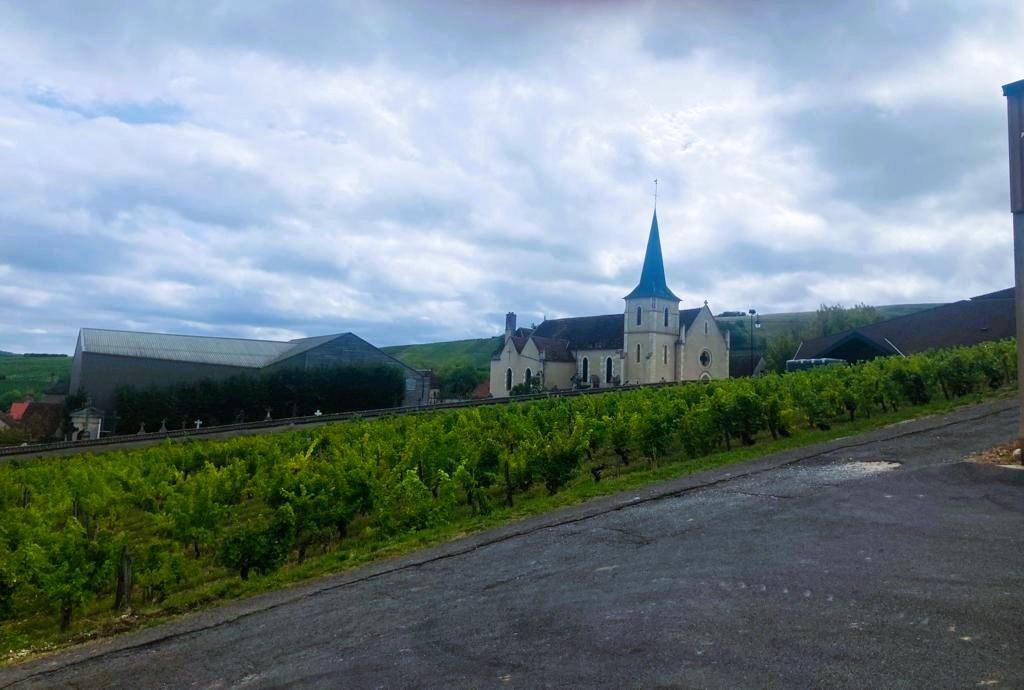
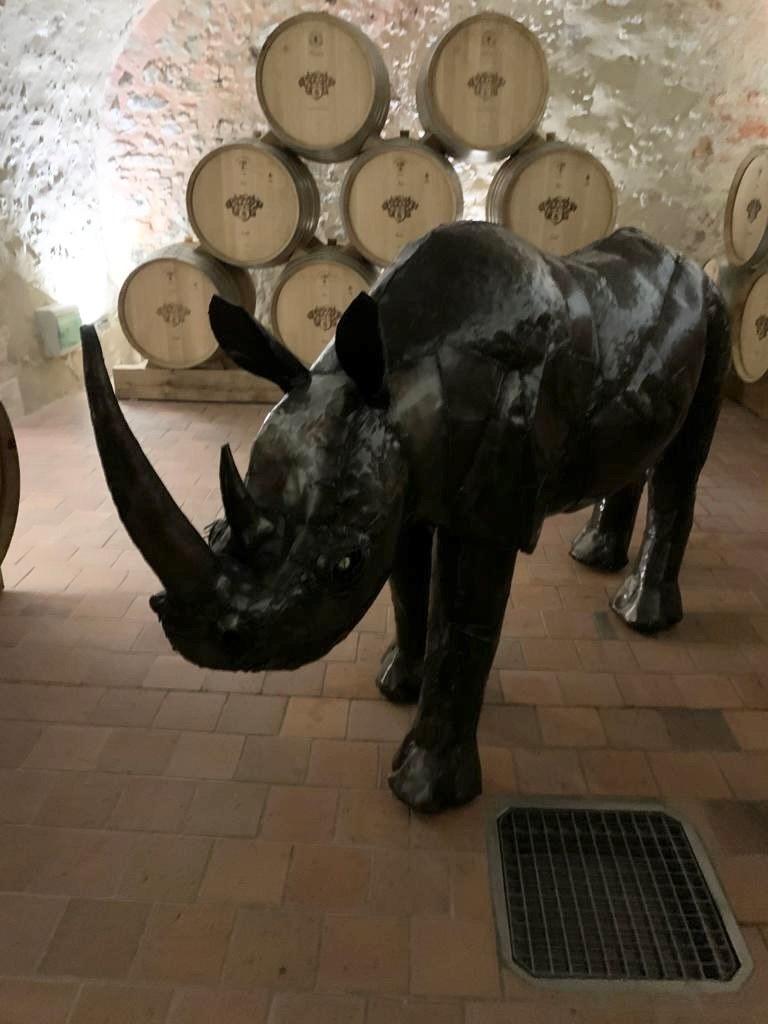




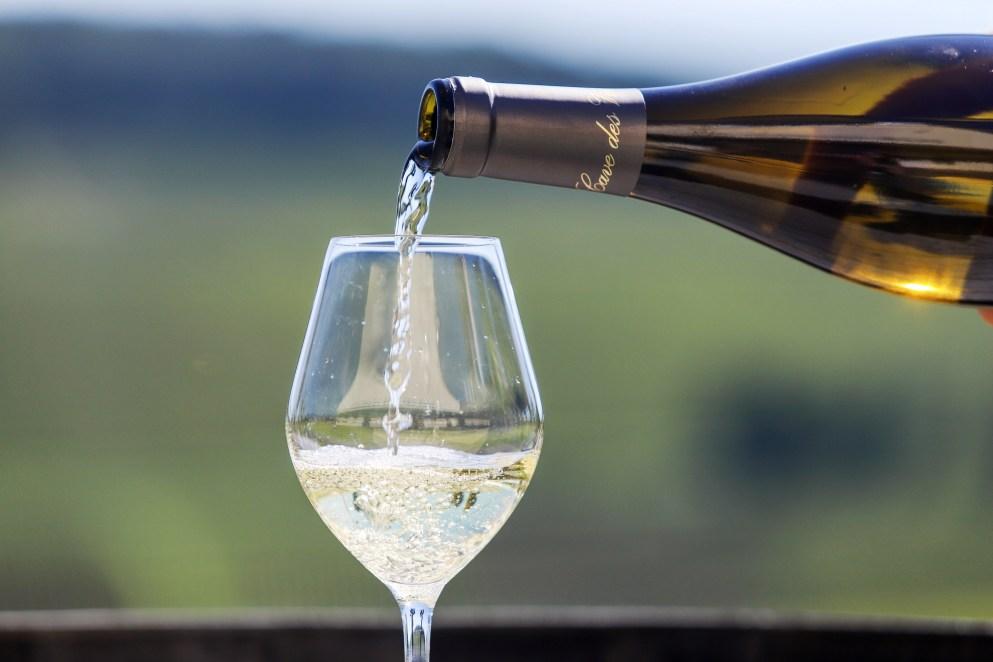
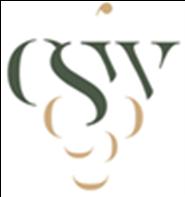
Founded in 1963, the Cave des Vins de Sancerre now represents some 76 vignerons, 270 hectares of vines and 9% of the appellation, with a total production of some 1.6 million bottles each year. Vincent Creton is the director of the Cave and continues the excellent work and modernization.
The total is of course representative of the appellation, with 85% white (classic assemblages, but also wines vinified by terroir) and the remaining 15% spit between red and rosé.
This is a classic cooperative cellar, offering extremely high quality, attractive and sensibly priced wines in significant volumes. The Cave is unusual in that it 'only' vinifies 1,500 hectolitres a year, roughly half of its total production, bringing the rest in as finished wine from the grower members.
The wines that are vinified on site are generally fermented with their indigenous yeasts in a range of thermo-regulated 50 - 1,000 hectolitre stainless steel vats, leading to long fermentations that often last through to the end of the year.
The cave's policy of not only vinifying wines but also of bringing in finished wines from its members may limit Vincent’s control over all the production, but at the same time it has the advantage of offering a broader range of styles that reflect the different terroirs of this appellation. Better still, it also gives us almost endless possibilities for making our own blends.
The result is a cellar that has become an essential tool for the region. The cellar is managed by Héléna Berneau who makes lovely wines - with a level of maîtrise that has allowed him to achieve IFS accreditation - and his rôle at the cave allows him to help regulate supply, demand and quality in the appellation as a whole.

L’étincelle
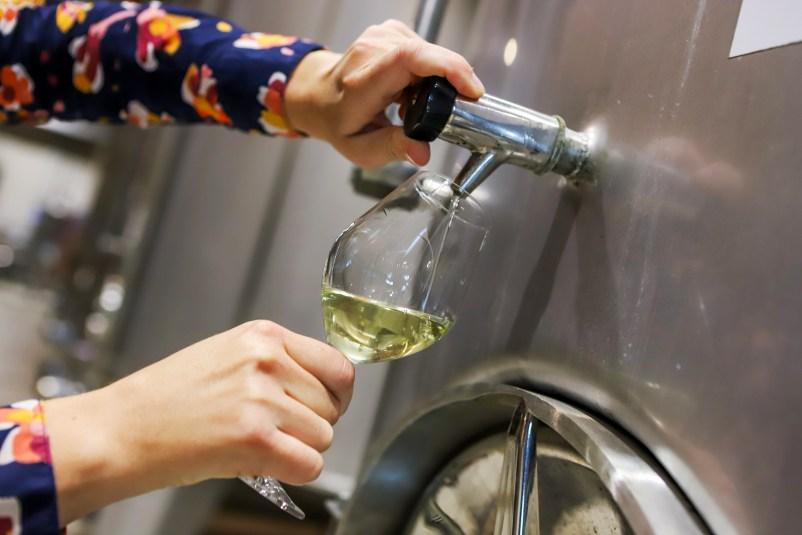
Sancerre Blanc AOP 2022 & 2023
Sancerre Rouge AOP 2022



The first recorded mention of this estate dates back to 1550 and makes Laurent Reverdy the 14th generation to run this smart and dynamic domaine. Having studied at Amboise and Beaune, Laurent took over from father Alain back in 2000 and has continued a careful program of investment and care. Today this beautifully equipped, designed and somewhat palatial estate covers 35 hectares. The total includes 5 of Pinot, with blocks run differently depending on whether they are destined to his finely balanced reds or the vibrant pressurage rosé.
Although the majority of the Domaine’s vineyards are in and around the commune of Verdigny, the estate also has a range of fine parcelles planted on different crus and soil types across the appellation – notably on the argilo-calcaire at Bué, the silex in St Satur and the hard chalk caillottes in Crézancy. Following a gentle pressing in pneumatic presses and cold settling, fermentations take place in temperaturecontrolled, CO2 inerted steel or glass-lined vats. The vinification in amphorae is a recent investment at the Domaine and is in essence very natural.. The diversity of soils adds a layer of complexity to the final assemblage, producing a fine, typé Sancerre with good fruit, genuine minerality and finesse.
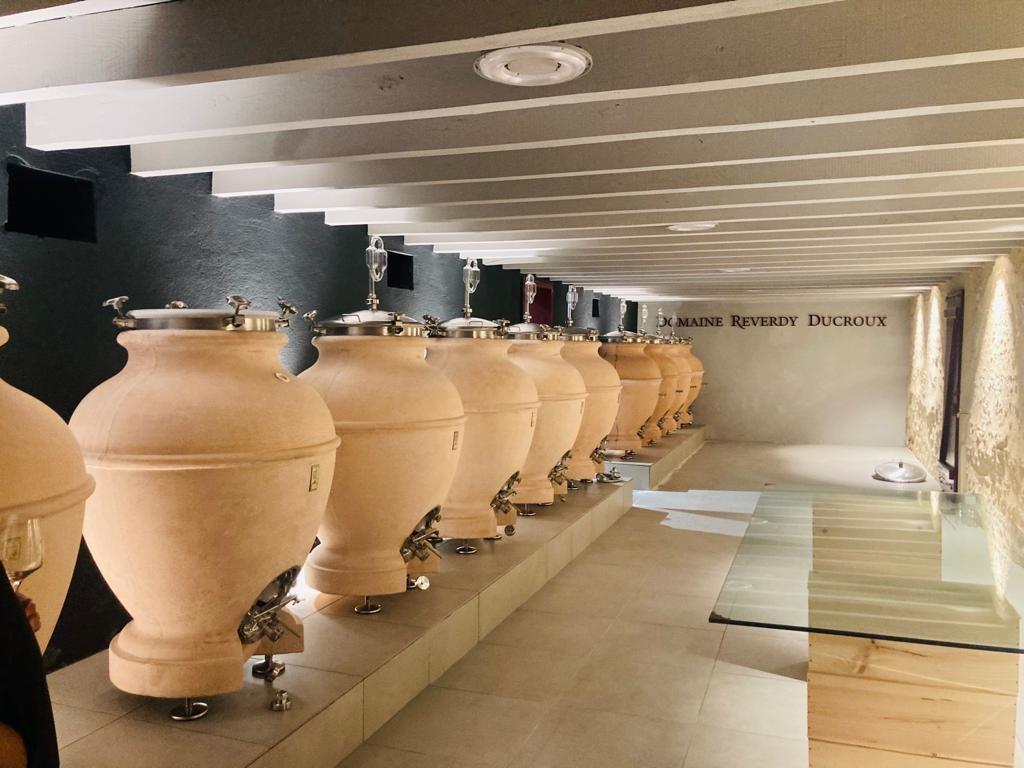
Running the vineyards according to the sustainable principles of Lutte Raisonnée, Laurent grasses through the vineyards and controls the quality of the crop by using a contre-ébourgeonnage and a systematic thinning for all the reds and wherever necessary with the hardier Sauvignon Blanc.
While Laurent's domaine cuvées are classic crunchy and aromatic, the two single vineyard white cuvées go a large step further - as does the whole bunch Grappe Entière red.
The Vieilles Vignes Silex shows all the punch of this classic terroir, while the oak-fermented old vines cuvée, the Montée de Bouffant, from 50 year old vines on a perfectly exposed argilo-calcaire slope in Sancerre itself has richness and gras, the oak nicely matched with its fruit, holding a balance and the fraîcheur of the best wines of the region.

Beau Roy
Sancerre Blanc AOP 2024
Clos du Roy
Sancerre Blanc AOP 2024
Chêne Marchand
Sancerre Blanc AOP 2023 & 2024
Grand Chemarin
Sancerre Blanc AOP 2024
Montée des Bouffants
Sancerre Blanc AOP 2023
Domaine Reverdy Ducroux
Sancerre Rouge AOP 2022 & 2023
Louys Marie
Sancerre Rouge AOP 2022 & 2023
Grappe Entière
Sancerre Rouge AOP 2022

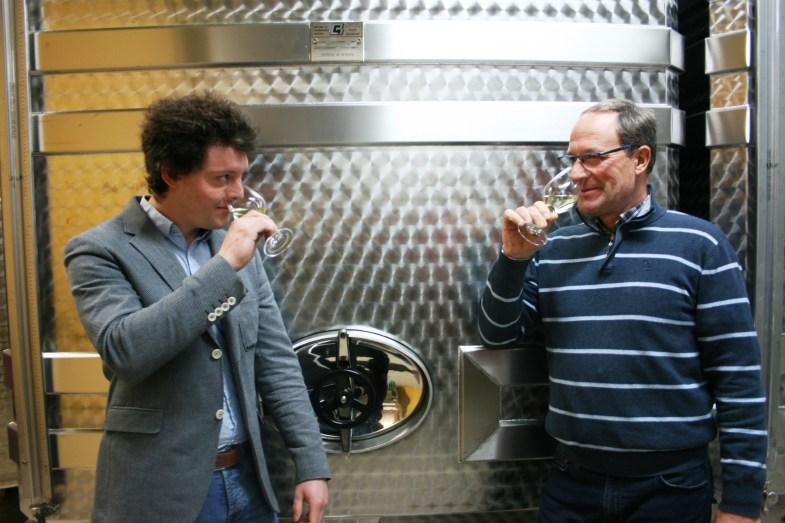

A genuine cartesian, Joël's commitment to the 'raisonnée ' side of things is clear and he runs his vineyards and winery with a rigour that is too often lacking elsewhere. This head-on-his-shoulders approach that has led Joël to work to the principals of lutte raisonnée for over 20 years - and that has quietly turned him into the go-to person for reducing the damage caused by esca.
Joël has now handed over the day to day running of the domaine to his son Fabien, who studied in Burgundy during which time he travelled to New Zealand. Fabien’s study and travels has positively influenced the way this neat 10.8 hectare domaine is run.
Grassing through 100% of his vineyards, Joël and Fabien pick all their grapes - red and white - by hand 'en caisses', with a further selection on the table de tri for the reds at reception of the harvest. After a gentle pressing, fermentations are at controlled temperatures in stainless-steel and enamelled-steel vats.
Although based in the prime village cru of Bué, Joël and Fabien also have vineyards in nearby Crézancy and on the slopes of Sancerre itself.

The reds from the family's 3.7 hectares of Pinot are vinified to avoid any excess of extraction, with malo and a 10–12-month maturation with batonnage of the lees in barriques to further soften the wines. Given low yields of around 40 hectos/hectare, fine ripeness and careful vinifications, these are among the most attractive reds of the appellation.
The white is classic 'Bué', each vat fermenting with a different yeast and then being left on its lees with no added sulphur until bottling - giving fine concentration to back the cru's blackcurrant-leaf purity.
The 'classic' domaine cuvée is complemented with tiny quantities (30 hectos or less) of two smart, barrel-fermented cuvées from the prime Chêne Marchand and Grand Chemarin vineyards. Committed to the welfare of the environment, the domaine is Terra Vitis certified.

Domaine de la Croix St Laurent
Sancerre Blanc AOP 2024
Domaine de la Croix St Laurent
Sancerre Rosé AOP 2024
Domaine de la Croix St Laurent
Sancerre Rouge AOP 2022

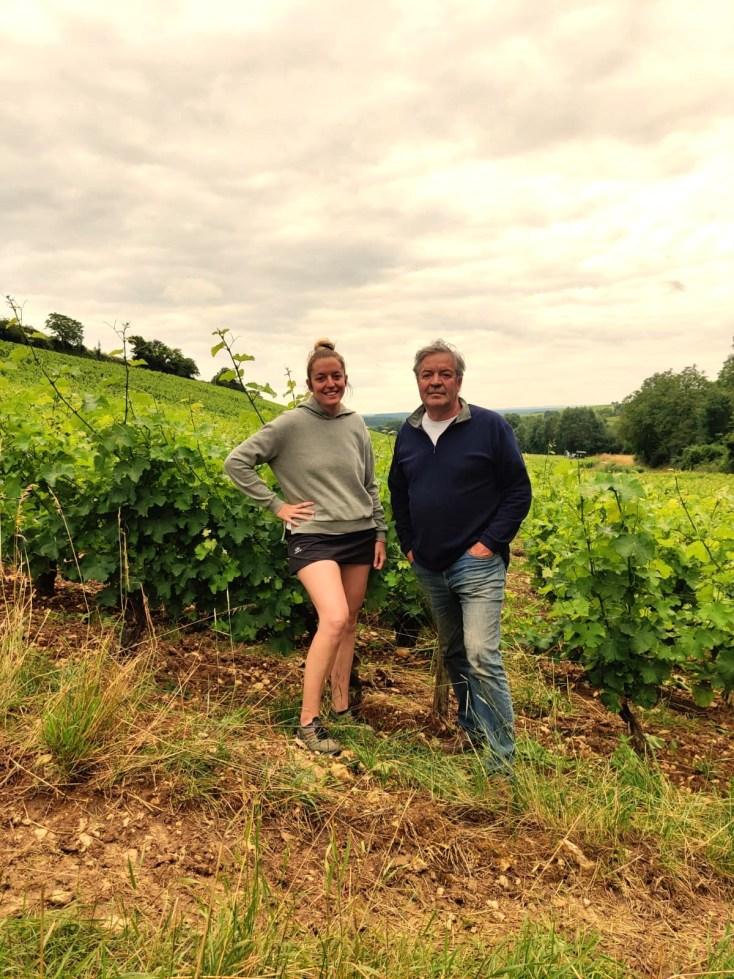

Thierry worked at the head of the estate for more than 45 years, but his daughter Agathe has now taken the helm and brings with her diversity and introduces a feminine side to the winemaking. The estate comprises just over 13 hectares and is based in the ‘premier cru’ village de Bué, where it has one hectare of the famous Chêne Marchand vineyard. Planted mainly in Sauvignon Blanc, the estate includes 2 hectares of Pinot Noir.
With their vineyards spread across the hard calcaire caillottes and the softer griottes calcaire and marne soils of the village, Thierry and Agathe’s wines are typical Bué –marrying good structure with an aromatic and tangy ripe blackcurrant character on white fruit.
After more than thirty years in sustainable cultivation, the estate is now certified HVE (High Environmental Value). Thierry and Agathe have grassed through the plots they own on richer and heavier soils and they maintain low yields and high quality using spring de-budding on reds and whites and summer thinning for reds when necessary. For about five years, the domaine has been stripping off the Sauvignon and Pinot leaves, letting the wind and sun dry the grapes. The results are ever finer, more intensely aromatic whites and richer and more supple, juicy reds.
After gentle pressing in a pneumatic press and cold settling, fermentation takes place parcel by parcel at controlled temperature in stainless steel and enamelled steel tanks. Working closely with the consultants of the local Sicavac, Agathe now vinifies the ends of the presses separately.
The wines from the different plots are then aged on their fine lees before being blended in spring. The Chêne Marchand from one of the oldest vineyard sites called Sancerrois is bottled after a long fermentation and 18 months of ageing on its lees.
Since 2018 a new cuvée has been produced at the domaine: the Grand Chemarin. The terroir of Grand Chemarin, composed mainly of clay and limestone, brings tension, richness and elegance. 18 months ageing partly in vats and the other part in oak barrels enhances the aromatic bouquet and adds a beautiful roundness in the mouth.

Domaine Merlin-Cherrier
Sancerre Blanc AOP 2024
Le Chêne Marchand
Sancerre Blanc AOP 2023
Synopsis
Sancerre Blanc AOP 2022
Grand Chemarin
Sancerre Blanc AOP 2022
Domaine Merlin-Cherrier
Sancerre Rouge AOP 2022 & 2023



Jean-Max has to be one of the most well-natured personalities in the region, perhaps matched only by his sons Etienne and Thibault for their genuine good humour and friendly, down-to-earth character.
Together they make one of Bué'sand therefore Sancerre's - great estates, but they got there the hard way. Although the family can trace its winemaking ancestors back to the 17th century, the reality is that Jean-Max started up in the early 1970s with all of 4 hectares of vines.
Today they have 33 hectares in production, an area that they're gently increasing as they plant half a hectare a year on land Jean-Max acquired way back. This includes 27 hectares in Sancerre (22 Sauvignon and 5 Pinot) and 6 in Morogues, the prime village cru of Menetou-Salon.
Set at the heart of Bué, the domaine is based in the old tithe barn of the village, growing steadily in each direction as Jean-Max and his sons have extended the winery, the ageing cellar and storage facilities.
The concept is classic - sustainably run vineyards worked 'raisonnée' so as to get fine ripeness at harvest. Soil conservation viticulture has been used for several years now to preserve the terroirs and biodiversity further. Picking is by machine for the Domaine's 'classic' whites, by hand for the older vines and for all the reds.
Bringing the grapes into the cellar in inerted trailers and crates, after gentle pressing and a cold settling, fermentations are by soil type and start with indigenous yeasts, finishing with cultured yeasts, when necessary, all at controlled temperatures in the ranks of stainless steel or enamelled steel vats.
Making a clear difference, the Vieilles Vignes cuvée is part fermented in 400 litre oak and indeed 5% of the wine from each parcelle is vinified in oak before being reintegrated into the cuvée, adding a further twist of complexity to the wines.
Exceptionally for the appellation, the domaine has a policy of only releasing wines when they're ready – i.e. once the Sauvignon has 'burnt-off' its primary fermentation aromas and started to develop more complex secondary flavours.
In addition to the cuvée wines, the estate make three plot-based wines from remarkable and exceptional lieux-dits (small geographical locations bearing a traditional name): “Grand Chemarin” and “La Côte de Bué” in Sancerre, and “Le Petit Clos” in Menetou-Salon.
In Sancerre, the best plots of two different soils are selected, “Grand Chemarin” and “La Côte de Bué”, to produce single vineyard wines which express all the typicity and the specific characteristics of the place they were grown.

“Grand Chemarin” come from a single plot of Caillottes (limestone) soils. This selected plot produces the village’s finest, most delicate wines.
“La Côte de Bué” is an exceptional, unique locality consisting of a steep Kimmeridgian marl slope (up to 50%) that benefits from southeastern exposure. The grafts chosen were from a local massale selection (SICAVAC) for wines offering greater complexity and typicity.
The result is clear - lovely, complex wines, showing the personalities of the main caillottes, calcaire and marne terroirs. The reds and rosé from Pinot Noir are pretty damn good too!
Le Clocher d'Amélie
Menetou Salon Blanc AOP 2022
Le Clocher d'Amélie
Sancerre Blanc AOP 2024
Marnes et Caillottes
Sancerre Blanc AOP 2024
Vieilles Vignes
Sancerre Blanc AOP 2022
Grand Chemarin
Sancerre Blanc AOP 2022
La Côte de Bué
Sancerre Blanc AOP 2018 & 2019
La Grange Dimière
Sancerre Rosé AOP 2024
La Grange Dimière
Sancerre Rouge AOP 2020
Vieilles Vignes
Sancerre Rouge AOP 2017,18 &19





One of the most highly acclaimed producers of the Loire Valley, Vincent Pinard's domaine has slowly risen to a grand total of 17 hectares comprising 12.5 of Sauvignon and 4.5 of Pinot Noir (including a plot specially grown to make the rosé). Mainly planted on the steep calcaire slopes of Bué on the prime Chemarins, Châteaux and Chêne Marchand crus, the vineyards include a plot on the argilo-calcaire of Thauvenay, with all new plantations at 10,000 vines/hectare.
Taking Vincent’s famed rigour several steps further in a mesmerizing search for quality, his sons Florent & Clément use almost excessively low yields, Guyot Poussard pruning, a spring de-budding, summer thinning and hand harvesting to get that extra ripeness, complexity and character of terroir that is the reflection of manically hard work. Grassing some of the vineyards where necessary to further control the crop, Florent is also experimenting the influence of higher leaf height on ripeness and aromas.
Focusing on biodynamics by philosophy since 2017 and organic cultivation for more than 20 years. From the 2024 vintage all wines are now fully organic. Harvest is by hand in small crates, only allowing a single layer of grapes, resulting in not having to sulphite the mouts as the harvest remains intact. At the winery, pressing is as gentle as possible. The vats are inerted with dry ice then after a cold settling of the juice and fermentations are parcelle by parcelle, raising temperatures slightly to encourage the expression of each wine’s terroir. Each cru then matures on its lies fines until the final blending is carried out in March/April for Florès and Nuance and August for the other whites. The wines are aged naturally without sulphites. Where sulphur adjustment is required, the Pinards produce their own sulphur from volcanic rock in preference to using petrochemical sulphur. They also cultivate their own yeasts from their plots (similar to the ‘mother’ in sourdough baking).
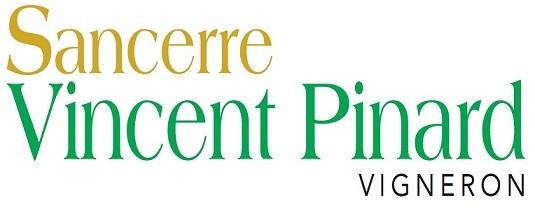
The emblematic Florès cuvée is now almost entirely fermented in oak vats, adding yet another layer of complexity to one of Sancerre's finest wines. Although this intense and aromatic cuvée makes up the majority of the estate’s wine, the family also delights in producing highly individual white cuvées and the Pinards celebrated Nuance and Harmonie cuvées are now supplemented by a growing 'family' of ‘garagiste’ single vineyard wines from the domaine's finest vineyard sites.
Fermented in 600 litre Centre France 'tonnes' these are from the Chêne Marchand, Petit Chemarin (first vintage from 2007) and Grand Chemarin vineyards (first vintage 2010) , with the first Château released in 2014. If the whites are models of purity, intensity and balance, the reds are equally fine.
Hand-picked and then fermented and matured in oak barrels or vats, these have that lovely depth of fruit and intensity that is perhaps the essence of fine Sancerre. A sign of their dedication to perfection is the Vendanges Entières red – a ‘fermentation pédicelle’ using whole grapes cut from the stems.

Florès
Sancerre Blanc AOP 2023 & 2024
Les Créots
Sancerre Blanc AOP 2023 & 2024
Nuance
Sancerre Blanc AOP 2023 & 2024
Harmonie
Sancerre Blanc AOP 2023
Le Château / Petit Chemarin / Grand Chemarin / Chêne Marchand
Sancerre Blanc AOP 2023
Sancerre Rosé
Sancerre Rosé AOP 2023
Pinot Noir
Sancerre Rouge AOP 2023
Charlouise
Sancerre Rouge AOP 2022
Les Vendanges Entières
Sancerre Rouge AOP 2022
Pinard Brothers « Echoes »
Sancerre Blanc AOP 2023
Pinard Brothers « La Moussière »
Sancerre Blanc AOP 2023
Pinard Brothers « Les Grands Champs »
Sancerre Blanc AOP 2023



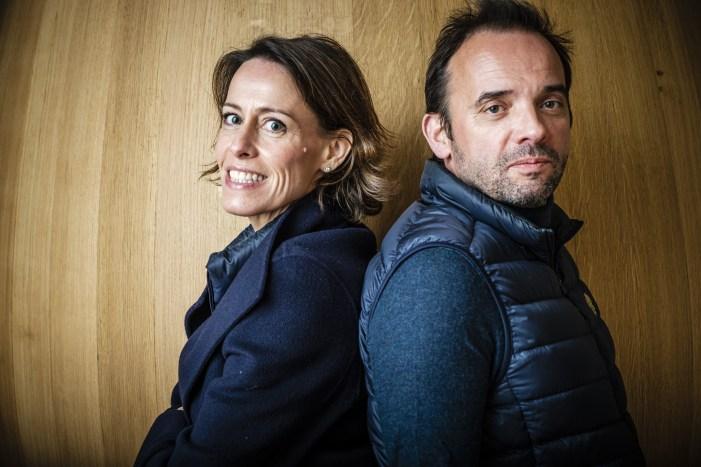

The family domaine can trace its history back through 19 generations and over 500 years to 1513. That said, it is clear that the estate was historically tiny, only earning its place as one of the most emblematic and dynamic producers of the region under Alphonse père, who really built the estate from scratch. Today the estate is in the more than capable hands of Alphonse 'Junior'.
Watching their wines evolve these last few years has been exciting as they continue to push the boundaries for both whites and - most spectacularly for their reds.
The domaine now has 54 hectares of vines in Sancerre and a further 18 across the river in the Coteaux Charitois, an excuse to allow Alphonse to make a Chardonnay too. In a search for authenticity and quality, the estate is now run biodynamically –though we suspect that the success is 100% the result of massive work in the vineyards to keep the vines healthy followed by intensely careful picking to achieve real ripeness at harvest.
After picking by hand in small caisses so as to protect the grapes from unnecessary crushing and oxidation, the grapes undergo a further selective tri at reception in the cellar. Fermentations are then very firmly by origin, with varying percentages of oak/vat and length of maturation depending on the terroir and the age of the vines.
The domaine's La Moussière (30 hectares of south-facing vineyards planted on kimmeridgean marne) is generally 40% fermented in barrel, although the Moussière Blanc is aged 50% in wooden vats and 50% in stainless steel vats

Complementing these main cuvées, the domaine also produces a plethora of ever more complex and rewarding cuvées - the tiny Demoiselle cuvée coming from a mere half hectare on flint, the Satellite from the Kimmeridgean marne of Chavignol, the Romains from calcaire-on-flint... each fermented (as are the top Cuvée Edmond and Génération XIX) in either oak vats or 500 litre oak casks.
The results are quite exquisite, minerality paired with real maturity giving enormously rewarding and complex wines.
However extraordinarily complex the whites, it is perhaps Alphonse's reds that really make the domaine stand out. Tiny yields, great vineyard management - and genuine care in the cellar result in wines that are quite unique in Sancerre: rich, hyper-ripe and succulent.

IGP Coteaux de la Charité Les Pénitents Chardonnay 2020 Les Pénitents Pinot Noir 2021
Sancerre Blanc La Moussière 2023 & 2024
Sancerre Blanc La Demoiselle 2023 & 2024
Sancerre Blanc Les Romains 2022
Sancerre Blanc Satellite 2022
Sancerre Blanc Le Paradis 2021
Sancerre Blanc Génération XIX 2020
Sancerre Blanc Cuvée Edmond 2022
Sancerre Rosé La Moussière 2022
Sancerre Rosé Vingt Mille Pied sous Sancerre 2019
Sancerre Rouge La Petite Moussière 2021
Sancerre Rouge La Moussière 2022
Sancerre Rouge La Demoiselle 2016 2019
Sancerre Rouge En Grands Champs 2013 2018 2019
Sancerre Rouge Génération XIX 2013 2014 2018 2019
Sancerre Rouge Le Paradis 2019




For more than four centuries, the Clément family has maintained a deep connection with the art of viticulture. The wine heritage took root in 1560 in Menetou-Salon and continues today thanks to Anne and Pierre-Alexandre. Today, two generations of winegrowers work the estate, as Anne and PierreAlexandre pick up the torch from their parents.
Tradition and modernity have never been so well combined in order to reveal all the finesse of the clay-limestone terroirs of the Domaine de Châtenoy in Menetou-Salon and the 'caillottes' terroirs of the Domaine du Clos Saint Martin in Sancerre. A fervent promoter of viticulture that respects the vine, the soil and the ecosystem, which thus lays the foundations for exceptional wines, the Clément family has always adopted a sustainable approach.
This is reflected in the practices of Domaine de Châtenoy in Menetou-Salon and Clos Saint-Martin in Sancerre , both of which have organic certification. But an extraordinary terroir cannot make good wines without quality vines. They are old at the Châtenoy estate, a guarantee of the care the family give them, offering consistency in the quality of the wines produced.
Their motto: “no good wine without good grapes”


The Domaine du Clos Saint Martin is located below the village of Sancerre, near the hamlet of Amigny. The first traces of Clos Saint-Martin date back to 1650, when it was owned by the Priory of Saint Martin.
Around 1780, François Malfuson acquired it, he was at the time, well known for his profession as a court attorney, writer and pastor and for his attachment to the town of Sancerre.
The Clement family acquired the estate in 2020 which marks a new chapter for Clos SaintMartin, the first harvest has been made in 2023.
The Clos Saint Martin vines stand on steep slopes that can exceed 40%. The terroir is distinguished by the presence of hard stones are known as 'caillottes'.
These soils benefit from very good natural drainage, they warm up quickly in spring, and reflect heat during the day and then release it during the night, thus promoting optimal ripening of the grapes. This geological particularity gives the Clément’s, Sancerre wines their unique identity and distinctive character: the true expression of the terroir.
Domaine du Clos St Martin
Sancerre Blanc AOP 2023 & 2024
Domaine du Clos St Martin, lieu-dit
« Saint Martin »
Sancerre Blanc AOP 2023










Set up in 1991 by brothers JeanFernand and François Thibault, the Domaine de Villargeau has effectively been run by JeanFernand’s son Marc since he finished his studies at Beaune in 2000. Christophe, Marc’s cousin, came back to the family estate in 2021 after gaining experience in Bordeaux, Champagne and Sancerre, he now manages the vineyards.
The domaine now has 23 hectares on south-southwest facing slopes, 3/4 of which are Sauvignon Blanc planted on flint and argilo-calcaire, producing wines very much on a par with those of neighbouring Pouilly Fumé.
For the reds, although the rules of this appellation (which only includes a grand total of 100 hectares planted for reds anyway!) impose a daft combination of Pinot Noir and Gamay, Marc is steadily ripping up the Gamay and replanting with Pinot to achieve a current balance of 5 Pinot to 1 of Gamay – and carefully vinifying and bottling his Pinot Noir separately, making it abundantly clear that this is one of the painfully few estates within the Giennois to take the reds seriously.
Working from a recently built chai, Marc runs the vineyards according to the principals of Lutte Raisonnée.
The Domaine gained organic certification since the 2022 vintage.

The family has recently finished grassing through the vines, where they are only using organic fertiliser.
Picking is by machine with the harvest inerted with a layer of CO2. After a cool débourbage and a cold maceration for both red and rosé, pressing is by pneumatic press. Fermentations are in stainless steel tanks with temperatures held to between 17° and 18° using a heat exchanger. A regular batonnage ensures maximum contact with the lees and that extra layer of depth and complexity.
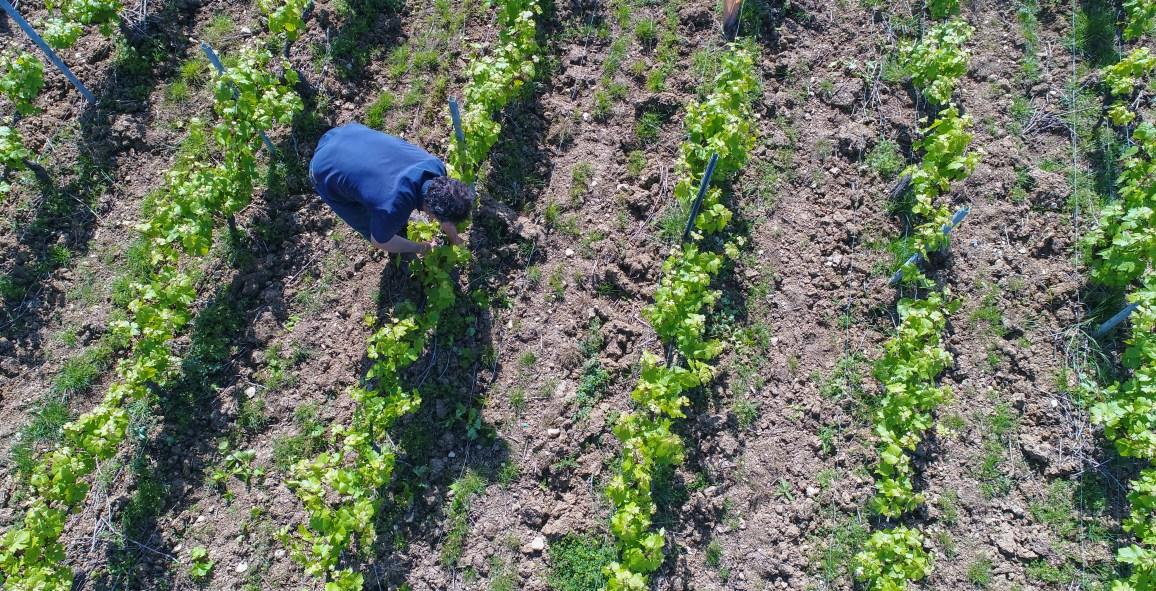
Domaine de Villargeau
Coteaux du Giennois Blanc AOP
Domaine de Villargeau Les Abeilles
Coteaux du Giennois Blanc AOP
2023 & 2024
2023

After studies in oenology at Bordeaux, work experience at Lynch Bages and in the Napa and Barossa Valleys, Matthieu took over from his father Alain several years back and he has now been joined by his brother Renaud. Together they have increased the size of the estate from Alain’s 3 hectares to a current 10 hectares. The estate now produces, wines, whisky and cereals. Domaine Mabillot produces wines that are both simple and distinguished.

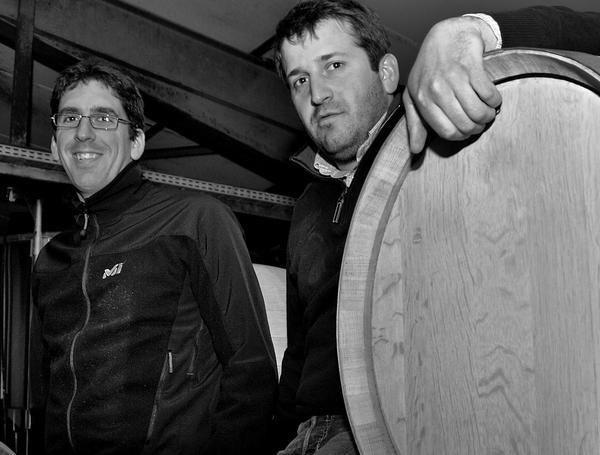

Planted in the tiny 300-hectare appellation of Reuilly, 6 ha are Sauvignon Blanc with 3 ha of Pinot Noir and 1ha of Pinot Gris to make the appellation’s unusually attractive pale 'gris' rosé. Aiming for wines with an extra complexity, the vineyards are now all grassed through and they combine long pruning with a systematic spring de-budding to spread out the crop and eliminate any unwanted bunches, using when necessary a summer thinning to further thin the crop and maintain ripeness. After harvesting by machine - inerting the trailer with dry ice to prevent any oxidation of the juice - the wines are fermented at controlled temperatures in the appellation’s remarkable Chai. A long, cool fermentation is followed by a long maturation sur lies fines to add further complexity to this already excellent Sauvignon while a pre-fermentation cold maceration adds fruit and intensity to their finely balanced red.

Created in 1992, the whole concept of the Chai is refreshingly simple: to enable the participating growers to share the latest wine-making equipment and the services of a qualified oenologist employed full time by the group.
With each member’s wines vinified and bottled separately, the Chai has brought immense improvements to the wines of the appellation at the same time as preserving the identity of each member’s wine.
Composed of a cuvée Domain (white, red and rosé), to a parcel-based cuvée Mont Cocu (white aged 10 months in tank, red aged 10 months in oak barrel) and a white wine aged in oak barrel Le Haut de la Pente, the standard of the wines of the Domaine Mabillot represent what is happening within the Reuilly appellation. The smart Mont Cocu is 100% made with a maceration pellicuaire and a 10 month maturation on its lees, giving a load of extra weight and complexity.
La Fierté
Reuilly Sauvignon Blanc AOP
La Fierté
Reuilly Pinot Gris Rosé AOP
Mont Cocu
Reuilly Sauvignon Blanc AOP
Le Haut de la Pente
Reuilly Sauvignon Blanc AOP
Pinot Noir
Reuilly Rouge AOP
2024
2024
2024
2023 & 2024
2024



Under her father Claude’s direction this great domaine became the mainstay of this appellation and since his passing, Nathalie Lafond has taken it several (large!) steps further, building one of the flagship estates of the Centre-Loire. Claude’s sad demise a few years ago was a huge shock, but Nathalie has retained her father’s refreshingly simple goal: faire connaître le Reuilly par la qualité. Nathalie runs her 34-hectare estate with determination and skill, producing great wines while retaining a sense of value. Breaking away from the communal chai set up by her father and building her own winery in 2011 has given her an independence and the means to master every step of a production that until now had been subject to the limitations of the appellation's otherwise excellent chai. The result is a clear gain in the quality of the estate’s wines.

Planted mainly with Sauvignon Blanc with some Pinot Noir for the reds and a little Pinot Gris for the delicate rosé. Nathalie Lafond produces wines with that lovely balance of fruit, minerality and finesse that is the hallmark of the argilo-calcaire limestone of this tiny yet prestigious appellation.
The Domaine started conversion to organic farming in 2021 and obtained certification in 2024, with the 2024 vintages being fully organic.
With the majority of her vineyards now grassed through, yields are controlled through careful pruning and where necessary by a summer ‘green harvest’ thinning.
At harvest the grapes and vats are inerted with CO2 so as to avoid oxidation and to retain all the grapes’ aromas, and after a gentle pressing the whites are vinified at cool temperatures in stainless steel vats before resting sur lies with regular batonnage until bottling.
Interestingly, the reds are improving dramatically too. Made with a 10–14-day cold maceration and with 50% maturing in barrique, these are worth watching, as is the increasingly attractive rosé, a Pinot Gris vinified as a white so as to retain freshness and aroma.

Nathalie
Reuilly Blanc AOP 2024
La Raie
Reuilly Blanc AOP 2024
Clos des Messieurs
Reuilly Blanc AOP 2023
La Grande Pièce
Reuilly Rosé AOP 2024
Nathalie
Reuilly Rouge AOP 2024




Although the domaine is recent - created by Pierre Jacolin himself just 20 years ago - the old Benedictin priory itself dates back to 1259. Pierre chose the site as being at the 'porte du Sancerrois', the very start of the Sancerre region as you drive up from Bourges. The rolling hills with their Centre-Loire microclimate, argilo-calcaire terroir and vineyards planted on the fossilised oysterbeds of Kimmeridgean marne certainly underline the similarities.
Today the estate has 12 hectares of vines (the appellation covers just 550) in and around the cru of Morogues and is planted 2/3rds Sauvignon Blanc and 1/3 Pinot Noir. Since 2019, just before the harvest, Joseph and Marie de Maistre purchased the property from Pierre Jacolin and took over the domaine.
Committed to the principles of sustainable viticulture, the estate is certified Terra Vitis and in 2023 the domaine produced it’s first fully certified organic vintage.
After picking by machine (with a manual tri for the reds before harvest), pressing is by pneumatic press. The sauvignon juice is then cooled to 4° for a 7-10 day cold stabulation to add breadth and structure to the wines. Fermentations are in thermo-regulated stainless-steel vats in the domaine's impeccably maintained winery, and the wine remains on its lees until bottling, while the Bénédictins is barrel-aged.
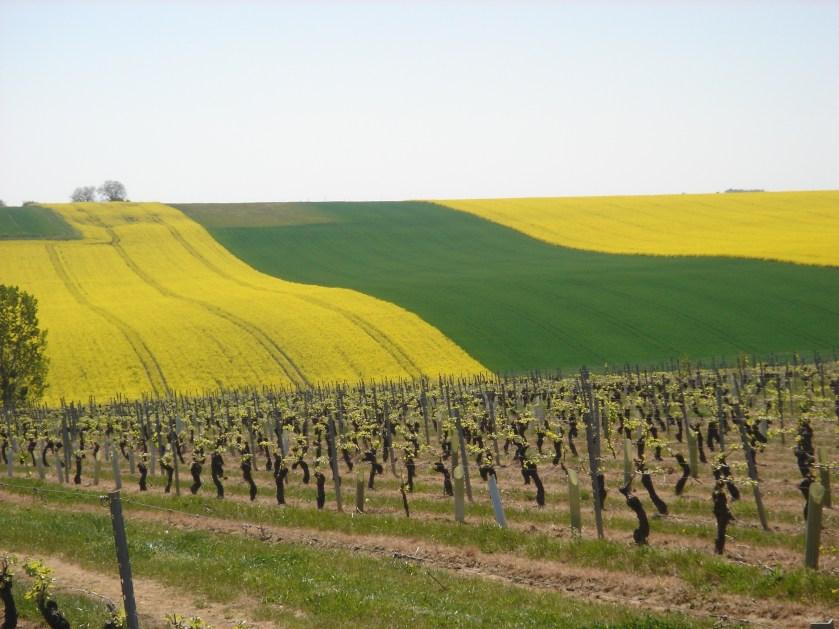
The whites are fresh, fruity and spicy with floral aromas . With notes of Citrus, menthol and pepper providing a round, a pleasing full mouth feel.
The Rosés combine freshness and finesse. They suggest aromas of white flowers, red fruits, strawberries and white peaches.
For the reds, low yields combined with a cold maceration and gentle pigeage at the start of the fermentation help to produce reds that are elegant and fragrant with red fruits characters.
Best of all, though - and a definite discovery - is the estate's Crème de Cassis. Made with 800 gms of 'Noir de Bourgogne' blackcurrants per litre, it is irresistible!

Sauvignon Blanc
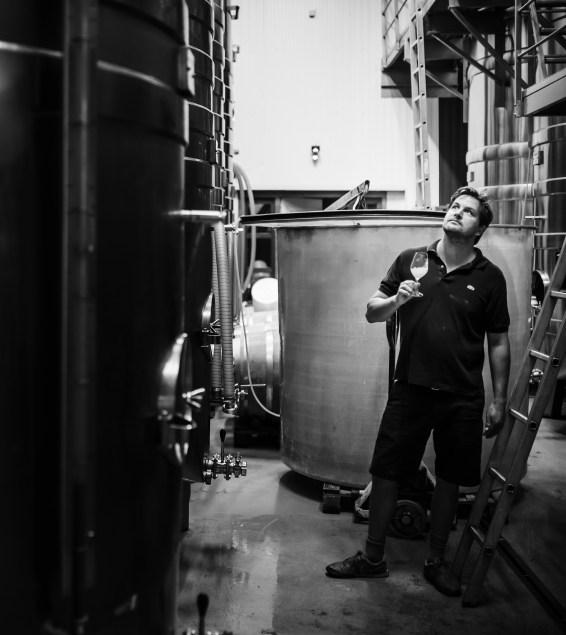
Menetou-Salon AOP 2022 & 2023
Cuvée des Bénédictins
Menetou-Salon AOP 2023
Cuvée Valentine
Menetou-Salon AOP 2022
Pinot Noir Rouge
Menetou-Salon AOP 2023
Cuvée des Bénédictins Pinot Noir
Menetou-Salon AOP 2022
Crème de Cassis 20° 50cl 20cl



Having studied oenology at Beaune and Dijon, Bertrand Minchin acquired his first vineyards in the village of Morogues over 35 years ago, planting them with 10 hectares of Sauvignon and 7 of Pinot Noir. Today his reputation for quality is made and the estate has more than doubled in size. 14 hectares on the Claux Delorme estate, include 10ha for the Valençay region and 4 for the Touraine. Bertand now works alongside his daughter Hortense Minchin, a graduate of the Supagro Montpellier, within the estate.
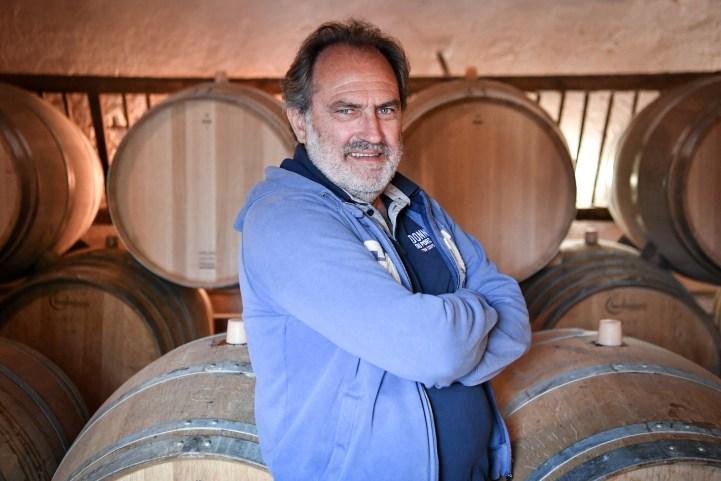
With both wineries fully equipped with pneumatic press, thermoregulated vats (oak as well as stainless steel) and rows of oak barriques, demi-muids and tonnes, Bertrand is producing wines that are easily on a par with the very finest Sancerres.
Working to a strict lutte raisonnée philosophy, the vineyards are now all grassed through, with travail du sol in Valençay making the vines easy to recognise. Bertrand uses a spring de-budding and summer thinning to ensure ripeness, concentration and quality of the crop. Picking by hand or machine depending on the parcelle, the cuvée and the vintage, after a gentle pressing and controlled débourbage, the classic Sauvignon Blanc whites are fermented over 5 to 6 weeks, gaining extra complexity as they are left to mature sur lie until bottling - though the word 'classic' doesn't really apply, even if the Morogues white is a model of the genre.

For starters, the Valençay white is 100% sauvignon, as he uses the obligatory chardonnay for the estate's sparkling, while the Hortense en sauvignon starts its fermentation in the 300 - 400 litre oak barriques that are then used for the single-vineyard Honorine. For the reds, low yields, careful temperature control and brassage with nitrogen ensure maximum intensity of fruit and colour with a nicely mastered level of extraction. Clearly among the finest Pinots of the Loire, these have a concentration which is further enhanced through being fermented in oak vats while a good percentage does its malo in oak barriques – steps taken further still with the intense and concentrated cuvée Celestin.
The Valençay reds are increasingly approachable to a non-French palate as Bertrand rips up the Cabernet Franc and replaces it with the local Côt (Malbec), giving a startlingly fresh and intense character.
This estate is at the cutting edge, making Pinot Noirs and Sauvignons to match the finest from any producer anywhere in the Loire. In 2022, the Tour Saint-Martin estate and its Menetou-Salon appellation obtained organic certification and the Claux Delorme was certified in 2024.
Morogues
Menetou-Salon Blanc AOP
Fumet
2023 & 2024
Menetou-Salon Blanc AOP 2023
Honorine
Menetou-Salon Blanc AOP 2023
Pommerais
Menetou-Salon Rouge AOP 2023
Célestin
Menetou-Salon Rouge AOP 2022 & 2023
Le Claux Delorme
Valençay Blanc AOP 2023



Although tracing its history back as far as the Phoenicians, radical changes in vineyard management by the local cooperative cellar and further investments in the winery over recent years have changed the quality of the wines of the region beyond recognition.
This dramatic evolution caught the eye of the INAO, who pushed through AOC status, imposing a more ‘traditional’ style with a minimum 40% Gamay for the red (a minimum 25% Pinot further complicating things) while at the same time forbidding use of oak chips or thermo-vinification techniques.
To maintain quality of their signature Pinot Noir red and rosé, the cave has chosen to move these wines to Vin de France status. They are now better than ever before, as the old VDQS rules imposed 15% Gamay. Sylvain's increasing skills have dramatically improved the quality and fruit of the cave's 'classic' reds and rosés.
Set up in 1952, the cave has 100 vigneron members and vinifies some 420 ha (including 100 ha of Pinot) of the region’s total 600 hectares. This scale allows the cave to enforce a unique standard of work in the vineyards – grassing through all the more vigorous parcelles and imposing an obligatory spring de-budding (20% less cash at harvest for those who fail to do this!) and an obligatory green harvest where yields seem high.
The results are impressive – when the AOC reduced permitted yields to 55 hectos/hectare, the Cave had already imposed a maximum 45 hectos/hectare yield on the Pinot.
This dramatically improves the quality of the harvest and at the same time gives noticeably higher natural ripeness, lower acidity and infinitely better quality of grapes.
In the winery, the huge investments of recent years are showing in the quality of the wines, with the latest investment being a nitrogen generator to allow them to inert vats, presses and pipes, the better to preserve the fresh fruit of the wines.

Cuvée des Loups Rouge Gamay-Pinot
St Pourçain AOP 2022
La Ficelle de Saint Pourçain
St Pourçain AOP 2024
Cuvée des Loups Rosé Gamay
St Pourçain AOP 2023 & 2024





The Côte Roannaise is a Loire Valley vineyard located upstream near the source of this great river. The vineyards are located on hills overlooking the Loire and forming the foothills of the Massif Central. The Appellation is small, with only slightly more than 230 hectares (568 acres) of vines planted on the best granitic hills, between 400 and 560 meters (1200ft to 1500 ft) above sea level.
The Domaine des Pothiers estate is located in the village of Villemontais, in the southern part of the appellation. The Pothier family have worked this land for centuries with vineyards accounting for the majority of the estate, with a few cows being farmed on those plots too damp for growing vines. In 1916, Blaise Pothier was killed in the Great War with the estate is taken over by his sister and her husband, Claude Paire.
In 1949, Benoît Paire, their son, inherited the estate and started modernizing itthe estate was only planted with 2ha of vines at this time. His son, Georges, took his place in 1974. Passionate about wine, he started planting again, helped by his wife, Denise. The vine surface went up to 5 ha. In 2005, Romain joined his parents and got fully involved in expanding the business. Plantations continued, the winery was modernized and the estate gained organic, then biodynamic certification. Today, the estate is once again focussed on vineyards and winemaking (even though there’s still a little herd of limousine cattle) and the vineyard size has grown to 21 hectares in size.
In order to achieve the finest quality, all the grapes are harvested manually, which allows a very precise selection meaning that only the best quality grapes are vinified. The grapes are then put in tank, destemmed or not, depending on the cuvée, without sulphites, and the fermentation starts using only indigenous yeasts.
During the entire vinification process, extraction is obtained softly by gentle pumping over and punching of the cap and transfers are made entirely by gravity.
The vines are planted at a density of roughly 5,000 plants/ hectare. In between the vines Romain alternates ploughing with growing natural green fertilising crops.

The ground is ploughed at the foot of the vine stocks to promote deeper rooting. Fertilisation is provided solely from composted manure provided by the cattle on the estate. The short pruning (cordon de Royat) combined with disbudding, thinning out of the leaves, trellising, etc. allows Romain to control the yields as well as optimising the aeration of the bunches. This viticultural approach ensures the best possible maturity level and optimal quality.
Colline en Flame
Vin de France 2024
Fou de Chêne - Chardonnay
IGP Urfé 2023
Hors-Piste – Pinot Gris
IGP Urfé 2023
En Paradis – Riesling
IGP Urfé 2023
Granit Rose
IGP Urfé 2022 & 2024
Colline en Flame
Vin de France 2023 & 2024
Domaine des Pothiers
AOP Côte Roannaise 2023
N°6
AOP Côte Roannaise 2023
La Chapelle
AOP Côte Roannaise 2023
Clos du Puy
AOP Côte Roannaise 2023
L’Intégrale
AOP Côte Roannaise 2023
Diogène
AOP Côte Roannaise 2023
Eclipse
Méthode Ancestrale 2023




For more than four centuries, the Clément family has maintained a deep connection with the art of viticulture. The wine heritage took root in 1560 in Menetou-Salon and continues today thanks to Anne and Pierre-Alexandre. Today, two generations of winegrowers work the estate, as Anne and PierreAlexandre pick up the torch from their parents.
Tradition and modernity have never been so well combined in order to reveal all the finesse of the clay-limestone terroirs of the Domaine de Châtenoy in Menetou-Salon and the 'caillottes' terroirs of the Domaine du Clos Saint Martin in Sancerre.
A fervent promoter of viticulture that respects the vine, the soil and the ecosystem, which lays the foundations for exceptional wines, the Clément family has always adopted a resolutely sustainable approach . This approach is reflected in the practices of Domaine de Châtenoy in Menetou-Salon and Clos Saint-Martin in Sancerre, both of which have organic certification.
The vines at the Châtenoy estate are old and reflect the care the family have invested in them, offering consistency in the quality of the wines produced.
Their motto: “No good wine without good grapes”

The Menetou-Salon estate covers more than sixty hectares of vines. The plots are spread across the best terroirs of the ten communes of the appellation.
These include the Clos de Coquin, the Clos des Barres, the Clos Saint-Pierre, the Clos de Bâton, the Clos du Lardat, the Clos de Blanchet and also the Clos des Treilles - each one clearly identified on the land register - all of which benefit from a microclimate and a particular typicity of terroir, already identified over the centuries by their ancestors.
With the same care, they maintain the vines of their partner winegrowers. Two thirds of their vineyard is planted with Sauvignon Blanc and the rest with Pinot Noir for the production of their red and rosé wines.
Their vines are low and narrow planted with high density - 8000 vines/hectare - the optimal threshold to obtain the best aromatic expression and grapes nourished by plants that have drawn their resources deep from within the soils bringing even more complexity and minerality to the wines.

Classique Blanc
Menetou-Salon Blanc AOP 2023
La Dame de Châtenoy
Menetou-Salon Blanc AOP
Clos des Barres
Menetou-Salon Blanc AOP
Clos des Treilles
Menetou-Salon Blanc AOP
Pierre Alexandre
Menetou-Salon Blanc AOP
Rosé
2022 & 2023
2022 & 2023
2022 & 2023
2022 & 2023
Menetou-Salon Rosé AOP 2023
Classique Rouge
Menetou-Salon Rouge AOP 2023
Tradition Rouge
Menetou-Salon Rouge AOP
Clos des Treilles
Menetou-Salon Rouge AOP
2022 & 2023
2022

‘Nous travaillons avec CSW depuis quelques décennies : c'est toujours un plaisir de retrouver de vrais professionnels qui connaissent réellement la Loire et tous ses derniers millésimes, en venant plusieurs fois par an au domaine pour déguster les nouvelles cuvées et les essais que je mets en place à chaque vendange. Ils sont également proches de leurs clients et des problématiques sur place au Royaume Uni : grâce à eux, j'ai pu développer de nouvelles ventes malgré le Brexit et les augmentations de taxes, et nous avons rencontré de nombreux acheteurs sur les salons. Bien joué Chris et Alex !’ Paul Pisani, Vigneron, Château de Targé, Saumur
“We have been working with Charles Sydney Wines since we set up our company in 2005. We were drawn to their ability to sniff out treasures in the Loire, which they remain particularly talented at today. We treasure our long-standing relationship and look forward to working with them for many years to come.”
Private Cellar Ltd, Independent Wine Merchant
We love working with CSW. Their expertise in the Loire is unmatched, and they have been able to introduce us to some absolute gems, including the wine which is consistently the bestseller in our range. They have taken the time to understand our unique business needs and communication has always been great. They have been a fantastic partner for us during our first few years in business!
Wine Buyer, Online Retailer
‘Travailler avec l’équipe de Charles Sydney est pour nous un réel plaisir.
‘Nous travaillions déjà de longue date avec Charles Sydney lui-même et que la transition avec toi, puis Alex et toi s'est très bien passée (sans oublier Dominique, pilier historique bien sûr !). Nous avons d'emblée établi une relation de confiance et d'entente mutuelle essentielle à notre partenariat. Nous apprécions beaucoup votre implication, votre suivi et votre professionnalisme. Et bien sûr vos compétences linguistiques sont un atout majeur et facilitent les contacts avec les clients.’
Katia, Cédric et Alexandra Mauroy Gauliez, Vignerons, Domaine de Bel Air, Pouilly-sur-Loire
Leur présence sur le terrain et leur connaissance des terroirs et des millésimes font d’eux de grands professionnels des vins de la Loire.
Notre entente est basée sur la confiance, une vision commune du vin, mais aussi et surtout sur des valeurs humaines. Cette sympathie et l’amitié qui a fini par en résulter garantie un partenariat avant tout humain et gagnant-gagnant pour tous !’
Jérémie Huchet, Vigneron, Muscadet
I’ve worked with Chris and Alex at Charles Sydney for a number of years in different roles. Their experience, network and insight to so many top Loire Valley producers is invaluable and they are a pleasure to work with’ Head of Buying for a Multi-Channel Group
Charles Sydney offer great access to the some of the best producers in the Loire Valley, offering vintages summaries, seriously good pricing and accepting every request no matter how tall or even impossible, they always do their very best!
Siobhan Irons, Buyer, Harrods, London
'CWS facilitate key aspects of the buying process. Their on-the-ground approach and professionalism make them a pleasure to work with'.
Trade Buyer, Australia
Nous avons eu le privilège de travailler avec CSW dès sa création et avons débuté nos premières ventes ensemble en 1990.
Charles Sydney et André Figeat ont su nouer au fil des millésimes d'excellentes relations, ainsi leur lien commercial s'est peu à peu transformé en lien d'amitié.
C'est pourquoi, aujourd'hui, il est plus qu'important pour Anne-Sophie, la fille d'André, de continuer et faire perdurer cette collaboration aux côtés de Chris, Alex, Dominique et toute leur équipe.
Anne-Sophie Figeat, Vigneronne,
Domaine Figeat, Pouilly-sur Loire
‘We started with Charles Sydney and Philippa in their early days. Since the arrival of Chris and Alex, we have reached a new stage with significant growth in our sales and our distribution network in the UK.
Chris and Alex have brought a new level of expertise and professionalism to the business, which has enabled us to work with all the UK wine distribution networks.
Chris has an excellent vision of the English wine market and with Alex they are always very well informed about new issues, allowing us to anticipate and provide solutions to our customers (Brexit, new duties...). This means we're always one step ahead and can offer our English customers top-quality wines that are best suited to their market.
We work with great confidence and in a very fluid and professional way.
Many thanks to Chris, Alex, Lisa and Dominique for working so closely with us and helping us to promote our wines and estates in the UK.’
JérômeChoblet , Owner&Vigneron, DomainedesHerbauges,Muscadet
"Notre relation avec Charles Sydney Wines est très ancienne au Domaine puisque c'est notre père avait commencé avec Charles, au milieu des années 1980 ! Vincent était alors un des tout premiers fournisseurs de Charles. Cela fait 40 ans que notre fidèle relation a commencé. Puis Chris et Alex ont repris la suite et notre relation de confiance a continué. Nous apprécions beaucoup le sérieux et le dynamisme de Charles Sydney Wines. Une relation d'amitié autour du vin s'est installé entre nous et nous voyons en eux un véritable partenaire pour le marché UK. Chris et Alex sont pour nous les meilleurs ambassadeurs du Domaine. "
Domaine Vincent Pinard, Vigneron à Bué, Sancerre

Thankyou for your interest in wishing to place an order with us.
Please read our terms of business below:
All wines are offered subject to availability and without engagement.
All prices quoted are in euros, per bottle, ex-cellars or FCA as agreed.
Prices are subject to change without notice.
Please note invoices will be sent direct to you from each producer.
Payment to the producer should be made within 60 days from date shipment.
By law, producers are obliged to charge interest on overdue accounts.
By confirming any order, you accept that all wines remain the property of the producer until payment is received in full.
All bank charges are the responsibility of the purchaser.
All wines listed – except where specifically stated – are in 75cl bottles.
Quantity case discounts refer to 12 bottle cases.
Half bottles and magnums may be available on request.
All orders should be emailed to: orders@charlessydneywines.com +33 6 74 99 57 13
Managing Director, Chris Hardy: chris@charlessydneywines.com +44 7889 360 795
Sales Director, Alex Meunier: alex@charlessydneywines.com +33 6 48 50 83 20
UK Address: Charles Sydney Wines Ltd. (UK Head Office), 1 Roman Farm, Nettleden, Hemel Hempstead, Hertfordshire, HP1 3DA
January 2025
